Our Lady of Mount Carmel improves fidelity yet maintains solemnity
Our Lady of Mount Carmel improves fidelity yet maintains solemnity
Our Lady of Mount Carmel improves fidelity yet maintains solemnity
Our Lady of Mount Carmel improves fidelity maintains

CONGREGATIONAL
CONGREGATIONAL





Creatively
Creatively
What you need to know before you buy
What you need to know before you buy
you need you buy

What you need to know before you buy
HD PROJECTORS to before buy
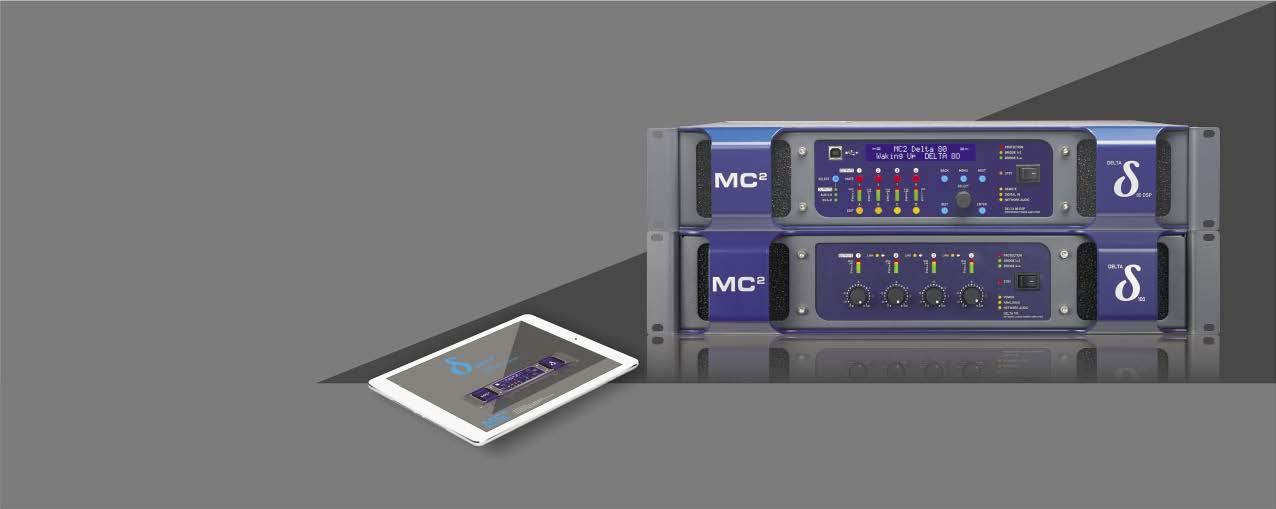
TAMING SOUND IN THE ROUND
Overcoming architectural challenges at St Paul’s in Abu Dhabi
TAMING SOUND IN THE ROUND
TAMING SOUND IN THE ROUND
Overcoming architectural challenges at St Paul’s in Abu Dhabi
TAMING ROUND challenges at St Paul’s in
Overcoming architectural challenges at St Paul’s in Abu Dhabi
Overcoming architectural Abu Dhabi

A/V LIGHTING SOUND REINFORCEMENT RECORDING STAGE SOUND BROADCAST July-August 2017
CONGREGATIONAL LIGHTING
blending house and stage lighting
MASSIVE SPACE, INTIMATE SOUND
HD PROJECTORS
A/V SOUND REINFORCEMENT STAGE BROADCAST July-August
LIGHTING
PROJECTORS
A/V LIGHTING SOUND REINFORCEMENT RECORDING STAGE SOUND BROADCAST July-August 2017
Creatively house and MASSIVE Our solemnity
LIGHTING
Creatively blending house and stage lighting
MASSIVE SPACE, INTIMATE SOUND
HD PROJECTORS
A/V LIGHTING SOUND REINFORCEMENT RECORDING STAGE SOUND BROADCAST July-August 2017
CONGREGATIONAL LIGHTING
blending house and stage lighting
MASSIVE SPACE, INTIMATE SOUND
Singapore: MICA (P) 100/07/2016 PPS 1644/05/2013(022954)
HD PROJECTORS
A/V SOUND REINFORCEMENT RECORDING STAGE
SOUND THE ROUND
LIGHTING blending house
SPACE, INTIMATE
July-August 2017 MICA (P) 100/07/2016 PPS 1644/05/2013(022954) www.proaudio-central.com www.proaudioeducation.com
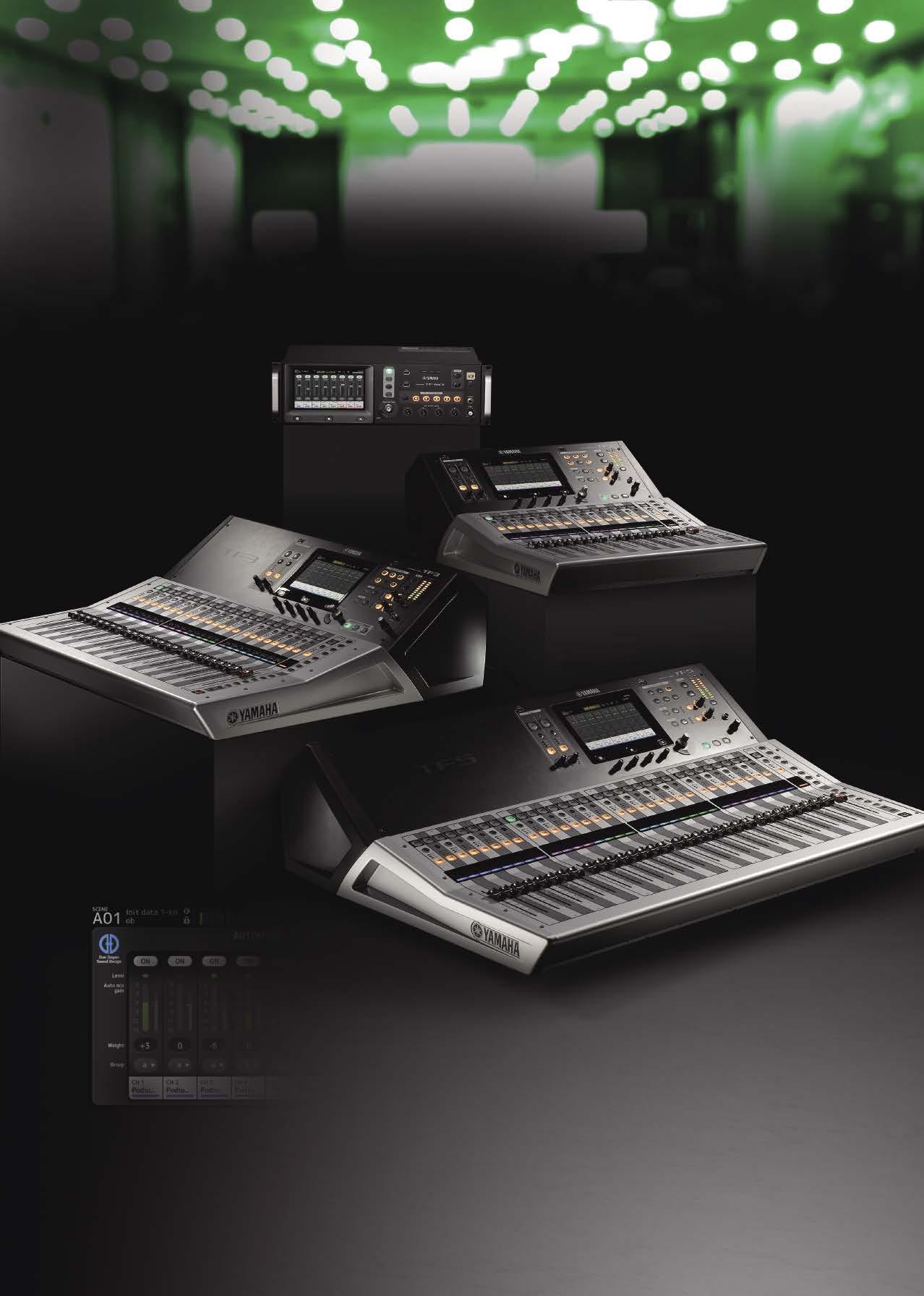

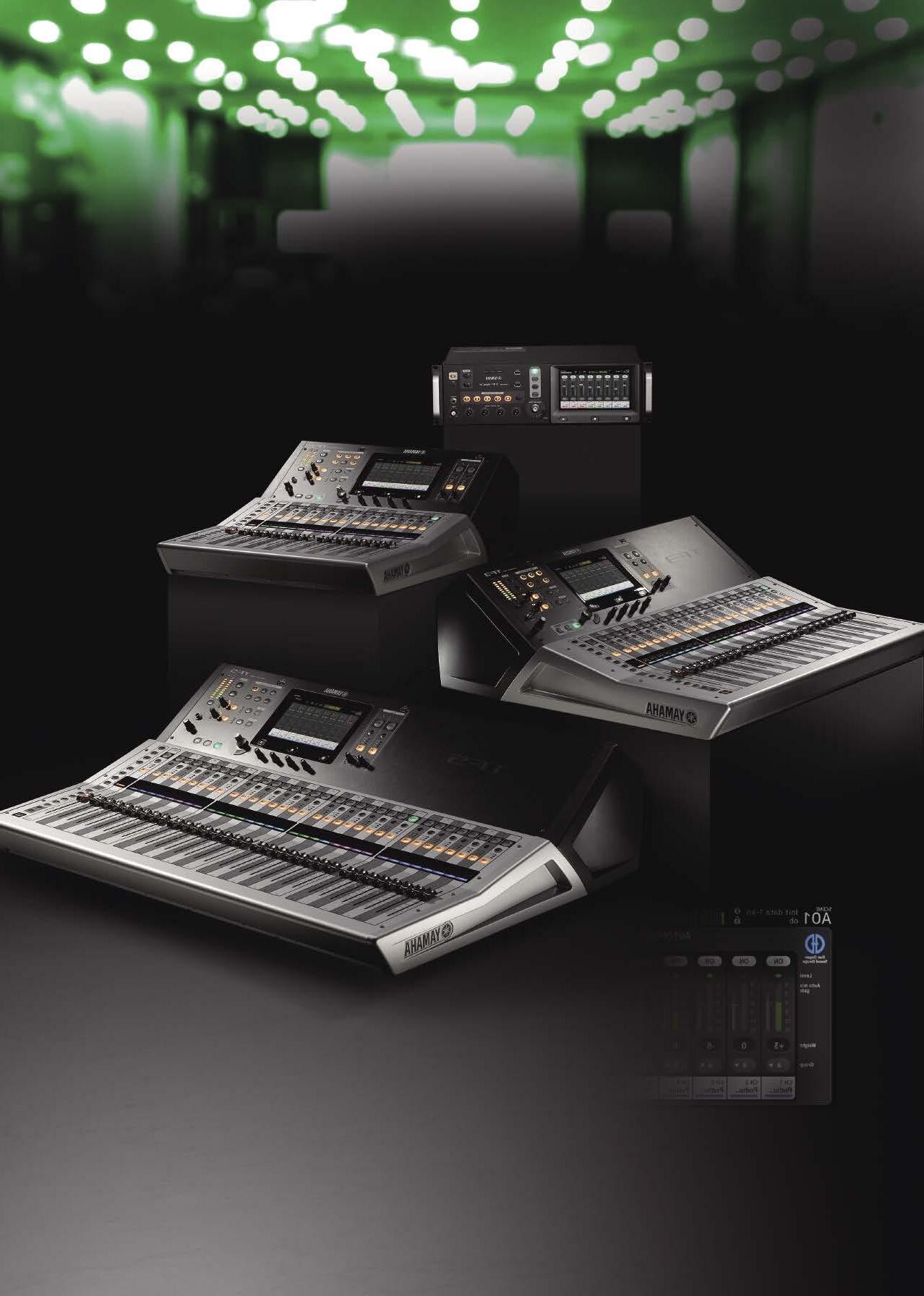
Issue 48 July-August 2017
KEEPING UP WITH ST ABDISHO’S Melbourne church turns to HK Audio
VOCAL CLARITY ON WORSHIP NIGHT Chris Tomlin tours with L-Acoustics
KINGDOM ILLUMINATED Singapore’s Kingdom Invasion event draws 10,000
DELIVERING WITH XCELLENCE Yang Cheon Church upgrades with Amate
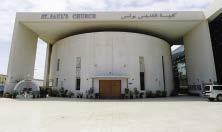


UNITING TECHNOLOGIES IN STRATHFIELD Preset AVL modes keep things simple


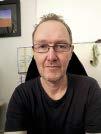
A SIMPLE SOLUTION Martin Audio CDD- and CSX-Live tackle tough acoustics
RELATIONSHIP REVIVAL Pretoria Church works again with DWR for lighting
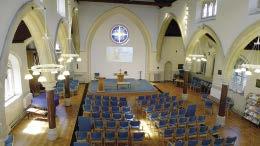
FAMEN TEMPLE PROJECTS ITS STORY Revealing the Tao with Digital Projection
MIXING IN THE WORSHIP CENTER DiGiCo’s SD10 fits the niche
TAKING COMMAND AT NIDAROS A&H’s dLive manages cathedral spaces







SUBTLE YET BRIGHT PROJECTION Eiki provides the desired look
GOOD SUCCESS ON SOLID GROUND Perth HOW fits Kosmic AVL solution
temple, modern audio
An age-old question asks, ‘Which came first, the chicken or the egg?’ Using big words, this is called a ‘causality dilemma’.
I’m reminded of the question when observing the influence of technology on worship, and the inverse. Does the availability of increasingly sophisticated technology drive change in worship style? Or, do the demands and desires of worship approach drive the search for and adoption of new technologies?
In practice, this paradox doesn’t seem to demand an either/or answer.
Elements of modern worship, like the replacement of hymnals with projected lyrics for communal song, have a dual impetus behind them. The contemporary desire to continually refresh the songs used in worship create a demand for a practical and aesthetically pleasing way to share lyrics with the assembled worshippers. From the opposite angle, the creative desire to continually update worship music is inspired, and made practical, by the availability of projection technologies and image creation software that together maximise flexibility while being comparable in cost to a few hundred new hymnals.
Another example: the ability to use pre-recorded instrument tracks for the accompaniment of singers allows a small house of worship to present sophisticated music productions. Learning how such worship enhancements were possible via readily available technologies may have motivated their use by a music minister. Conversely, a pre-existing desire to add such musical moments may have driven the search for enabling technology.
There’s no doubt that worship experiences are changing with and are changed by technology, with enhanced worship experience the ultimate motivation.
KNOWHOW
DIGITAL
Telephone: +44 (0)1892 676280 Email: fwells@worshipavl.com COVER

LICENCES
Singapore: MICA (P) 100/07/2016 All

July-August 2017 WORSHIP AVL 3 Nick Smith: T: +44 1892 676280 F: +44 1892 676282
MEDIA MANAGER nsmith@worshipavl.com Carolyn Valliere: T: +1 562 597 1534 SALES ASSOCIATE cvalliere@worshipavl.com Adrian Baker: T: +44 1892 676280 F: +44 1892 676282
MANAGER abaker@worshipavl.com Sue Gould: T: +44 1892 676280 F: +44 1892 676282 ADVERTISING DIRECTOR sgould@worshipavl.com James Ling: +44 1892 676280 +44 1892 676282 SENIOR EDITOR jling@worshipavl.com Richard Lawn: T: +44 1892 676280 F: +44 1892 676282 GENERAL MANAGER rlawn@worshipavl.com Simon Luckhurst: +44 1892 676280 +44 1892 676282 SENIOR REPORTER sluckhurst@worshipavl.com Caroline Moss: T: +44 1892 676280 F: +44 1892 676282
EDITOR cmoss@worshipavl.com James Cooke: T: +44 1892 676280 F: +44 1892 676282 REPORTER jcooke@proaudioasia.com We're on social media @WorshipAVL @ProAudioCentral CONTENTS
PRODUCTION
CONTRIBUTING
MEET THE TEAM
National
Our Lady of Mount Carmel CIRCULATION circulation@proaudioasia.com
Shrine of
Ltd,
Grosvenor Road,
Wells,
TN1 2DU,
Kingdom
PUBLISHED BY Blank Canvas (Publishing)
17 Upper
Tunbridge
Kent
United
www.proaudio-central.com www.proaudioeducation.com
rights reserved. No part of this magazine may be reproduced or transmitted in any form or by any means, electronic or mechanical, including photocopying, recording or by any information storage and retrieval system, without prior permission in writing from the copyright owners.
CONVERGES AT
GUANG SHAN Modern
DELIVERING CLARITY AT PRAISE CATHEDRAL Five-day upgrade path JPCC CLEARS COVERAGE Consistent performance in Jakarta 16 TEAMWORK IN TAIYUAN Bundee and Powermax partner for performance 16 HEARTFELT SOUND REINFORCEMENT Live Gospel in Zimbabwe 16 MOSAIC GOES 4K End-to-end UHD in Hollywood 17 RECORDING REVIVAL Elevating live recording with TNDV 17 EDUCATION What worship technicians can expect to find at Summer NAMM 34 SEMINAR DIARY Upcoming training for church A/V technicians 34 STAGING A WORSHIP BAND Gordon Moore gives guidance 36 VIDEO STREAMING NETWORKS Considerations for implementation 40 BLENDING CONGREGATIONAL AND STAGE LIGHTING John Black illuminates 42 MAINTENANCE Networked diagnostics and control 46 COVER: FILLING A MASSIVE SPACE Upgrading for control and even coverage 18 EXPANSION-DRIVEN UPGRADE Gereja Rehoboth’s brand-loyal upgrade 20 BUILDING FOR THE FUTURE Bukit Panjang’s new home embraces more music 22 STEERING CLARITY Abu Dhabi’s St Paul’s finds a cure for unintelligible sermons 26 SONIC NEW LIFE Yishun HOW happy with results after long avoiding upgrades 28 RECORDING THE MESSAGE Kuala Lumpur HOW serves through recording space 30 SERVING THE MASSES Tianhe Church, the largest HOW in Guangzhou, opens 32 LOUDSPEAKER COMPONENT PROTECTION How drivers fail; avoiding failure 48 SWITCHING IT UP What’s new in video switcher tech? 52 LIGHTING: POWER AND CONTROL WIRING From AC Mains to DMX 54 BUYING GUIDE What you need to know before buying an HD projector 56 PRODUCTS Equipment launches and updates 58 THE TECH VIEW The changing face of the Drive Methodist 74
COMMUNITY
FO
LEADER NEWS
Frank Wells Editor
32 26 74 IN
20
PROJECTS TECHNOLOGY
THIS ISSUE
Keeping up with St Abdisho’s
AUSTRALIA: St Abdisho’s church in Melbourne opened its doors in 2014. Its congregation has grown substantially during its short history. As the sanctuary filled with bodies, the basic audio solution installed for the church’s inauguration no longer provided speech intelligibility or transparent sound reproduction of the choir to everyone in attendance. The church turned to Sydneybased consultants Music On Stage to upgrade the existing 100V line system with a higher quality and lowprofile passive column array. Based on the common issues faced by houses of worship due to budgetary constraints and the technical skill of the volunteers who operate the audio systems, Music On Stage recommended a system centred on Elements from HK Audio. ‘Our vision was to provide the church with a simple-to-use PA that enables nontechnical people to autonomously
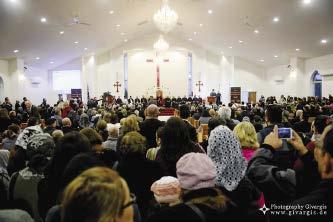


operate the system,’ explains Leonard David, proprietor for Music On Stage. Music On Stage deployed a total of eight HK Audio E835 passive install speakers, six of which were flown at regular intervals down both sides of the sanctuary. The remaining two were positioned to the left and right of the altar. It was during this process that Lee Stevens, a technical specialist from HK Audio’s Australian distributor, CMI Music & Audio, came to realise that solving the church’s acoustic challenges required more than a simple loudspeaker replacement.
St Abdisho’s had experienced problems in controlling and mixing sound. Up to five priests can preside over any one service, providing quite the challenge for volunteers managing the audio levels. A solution was offered in the form of an AKG
professional digital automatic mixer, which maintains a summed output of 0dB. This has allowed the priests to clearly communicate, no matter their microphone technique.
As for the choir, their main acoustic issue presented itself in their performance space, up on the balcony. Members of the choir not
Vocal clarity on Worship Night
USA: Grammy winner Chris Tomlin has been travelling across America, delivering his brand of contemporary Christian music to live audiences on his Worship Night tour. In addition to Mr Tomlin, those attending the shows are treated to performances from other Christian artists Big Daddy Weave, Phil Wickham and Zach Williams.
Accompanying the artists on the Worship Night tour is an L-Acoustics main PA system comprising K1 and Kara cabinets supplied by MidAmerica Sound. Mr Tomlin has grown accustomed to the manufacturer’s systems, having relied on them for many years. The setup sees 28 K1 and 12 Kara divided evenly across two hangs with the latter serving
enclosures are employed as sidefills, flown 18 per side, and another six are implemented as front-fills. Lows are handled by 16 SB28
configurations.
The main PA K1 systems are powered by 14 LA12X amplified controllers, while the Karas and
only struggled to hear themselves, but also suffered with excessive microphone feedback. To remedy this, the Music On Stage team installed a pair of HK Audio Pro12M stage monitors.

With the sound levels under control for the priests and the choir, Music On Stage and CMI delivered a Mackie DL32R wireless iPad mixer to provide overall control of the system. This was selected as St Abdisho’s does not have a standard FOH position and the DL32R offers a solution that can be stowed away when not in use and can be controlled remotely from anywhere inside the building. Another reported benefit of the mixer is the graphic EQ capability on all outputs which aids the church’s volunteers with crafting the monitor mix for the choir to eliminate their feedback problems. All signals can be fed into this EQ. In keeping with the simple-to-use part of the brief, the setup was completed with Mackie’s Master Fader software for remote control via wirelessly networked iOS devices. All mic inputs are grouped using the software, then hidden and locked before being presented as a 3-channel solution providing a single audio level for the choir. Powering the entire system are Max and XP amplifiers from Phonic.
www.aceya.org
www.cmi.com.au
www.musiconstage.com.au
side-fills and the subwoofers are amplified by 16 LA8s. Four consoles from DiGiCo’s SD series are used for mixing, including an SD10 managed by Mr Tomlin’s FOH mixer Kyle McMahon. These are accompanied by two Dolby Lake processors that are accessible through an insert point on the SD10.
‘The K1 has a very smooth midrange sound that really helps bring clarity to the vocals and entire mix,’ says Nick Turner, Worship Night system technician. ‘The K1/Kara PA works so well for this kind of show; we couldn’t imagine doing it without them.’
www.christomlin.com
www.l-acoustics.com
www.midamericasound.com
4 WORSHIP AVL July-August 2017 NEWS
Chris Tomlin and co perform in LA
HK Audio E835 speakers were installed
The Melbourne-based church has seen its congregation grow significantly in just three years
Television

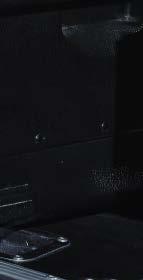

ATEM Television Studio HD is the first production switcher designed for both broadcast and AV professionals! You get 4 SDI and 4 HDMI inputs with re-sync, along with multiview, talkback, DVE, an audio mixer, media players and more. It’s perfect for broadcasting worship services and church events over traditional channels or via the internet. Plus, it can be used as a portable AV switcher. Simply plug in your sources and start switching live!
ATEM Television Studio HD is the first production switcher designed for both broadcast and AV professionals! You get 4 SDI and 4 HDMI inputs with re-sync, along with multiview, talkback, DVE, an audio mixer, media players and more. It’s perfect for broadcasting worship services and church events over traditional channels or via the internet. Plus, it can be used as a portable AV switcher. Simply plug in your sources and start switching live!
True Professional Switcher
True Professional Switcher
ATEM Television Studio HD is a true professional switcher with transitions such as cut, dissolve, dip, wipes, graphic wipe and DVE transitions. The DVE can also be used for picture in picture eff ects, making it perfect for interviews and live commentators. The fl ash based media pool holds 20 RGBA still frames so you can add custom graphics and logos!
ATEM Television Studio HD is a true professional switcher with transitions such as cut, dissolve, dip, wipes, graphic wipe and DVE transitions. The DVE can also be used for picture in picture eff ects, making it perfect for interviews and live commentators. The fl ash based media pool holds 20 RGBA still frames so you can add custom graphics and logos!
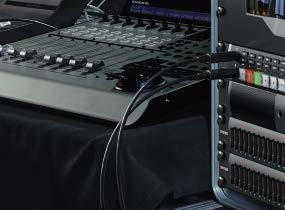
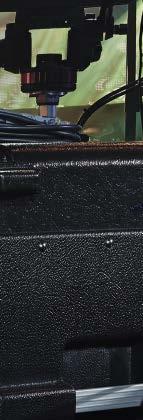
Connect Up to 8 Sources
Connect Up to 8 Sources
With 4 HDMI and 4 3G-SDI inputs that support all formats up to 1080p60, you can connect up to 8 cameras, game consoles, computers or other sources. All inputs have frame re-synchronization for clean switching between all sources. You also get 4 SDI program outputs with talkback and tally, as well as multiview and aux out, and inputs for RS-422, reference and analog audio.
With 4 HDMI and 4 3G-SDI inputs that support all formats up to 1080p60, you can connect up to 8 cameras, game consoles, computers or other sources. All inputs have frame re-synchronization for clean switching between all sources. You also get 4 SDI program outputs with talkback and tally, as well as multiview and aux out, and inputs for RS-422, reference and analog audio.

Broadcast Quality Eff ects
Broadcast Quality Eff ects



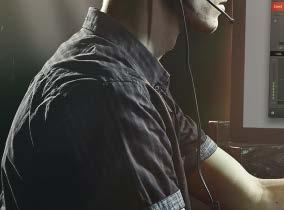


You get an upstream keyer with full chroma keying for green screen and blue screen shots so you can add weather maps, graphics, and more behind on-screen talent! You also get 2 downstream keyers for adding graphics, logos and bugs from the built in media pool, or you can use input video with fi ll and key overlay graphics in real time!
You get an upstream keyer with full chroma keying for green screen and blue screen shots so you can add weather maps, graphics, and more behind on-screen talent! You also get 2 downstream keyers for adding graphics, logos and bugs from the built in media pool, or you can use input video with fi ll and key overlay graphics in real time!
Hardware or So ware Control
Hardware or So ware Control
You can operate ATEM Television Studio HD directly from the front panel to create HD programs with eff ects and transitions, without the need for any extra hardware! Also included is a so ware control panel for Mac and Windows for full switcher control, macros, media management, remote camera color correction and control, plus audio mixing!
You can operate ATEM Television Studio HD directly from the front panel to create HD programs with eff ects and transitions, without the need for any extra hardware! Also included is a so ware control panel for Mac and Windows for full switcher control, macros, media management, remote camera color correction and control, plus audio mixing!
ATEM Television Studio HD S$1,425
ATEM Television Studio HD S$1,425
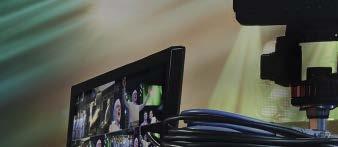




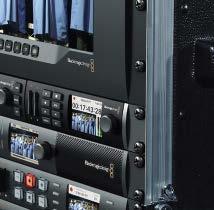


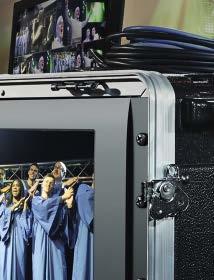
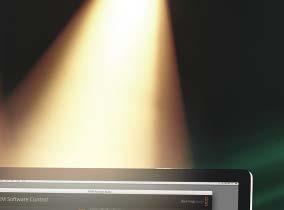








ATEM So ware Control Panel $Free
ATEM So ware Control Panel $Free










Learn more at www.blackmagicdesign.com/sg
The new ATEM
Studio HD is a powerful professional switcher with HDMI and SDI inputs, multiview, talkback, DVE, media players and more!
*SRP is Exclusive of Taxes.
Learn more at www.blackmagicdesign.com/sg
The new ATEM Television Studio HD is a powerful professional switcher with HDMI and SDI inputs, multiview, talkback, DVE, media players and more!
*SRP is Exclusive of Taxes.
Kingdom illuminated
SINGAPORE: Kingdom Invasion is an annual Christian conference bringing together approximately 10,000 worshippers from Singapore and its surrounding areas. The 2017 edition marked the fifth instalment of the event, which took place at the Singapore Expo convention centre and was live streamed to a global audience. Illuminate Productions was called upon once again to provide the full technical production. The Singaporebased creative and technical production company operated out of a small room backstage, dubbed ‘the command centre’. This formed the centre of operations during 18-hour shifts that were put in to ensure that the conference received a high calibre technical production. ‘Our success comes from our dedicated team,’ explains Huang Muen, creative and technical director of Illuminate.
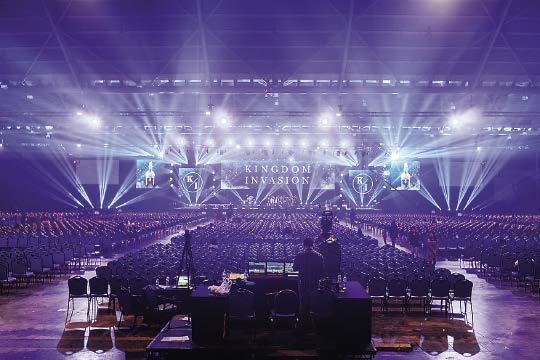
On the audio front, Illuminate deployed Clair Brothers i212 line array speakers for reinforcement, along with
implemented for capturing the main vocals and Beta 58s were used for the back-up singers. Monitors were mixed via a Yamaha PM5D.
The lighting rig employed was constructed from all new fixtures that arrived on site still in their boxes. Illuminate put to use 24 Claypaky Scenius spots with the
Claypaky luminaires were 48 Robe Robin 600 washes as well as more than 100 channels of standard lighting fixtures. Control of the lighting was courtesy of two networked MA Lighting grandMA2 consoles, which were also used to manage a d3 Technologies media server that synchronised the lighting with video. Lighting and video operators worked together using the grandMA2 consoles to ensure timing cues were met.
The technical production on the video side was described as ‘one of the technical highlights of this year’s conference’ – particularly in relation to the LED screen. The Illuminate team installed five 3.9mm LED screens in total. The main central screen was a 4K panoramic screen that measured 16m x 4m and was flanked by two 4m x 4m screens on each side. The total pixel count from end to end was reportedly over 8K in resolution. In addition, four Christie HD projectors were employed for the IMAG delay screens.
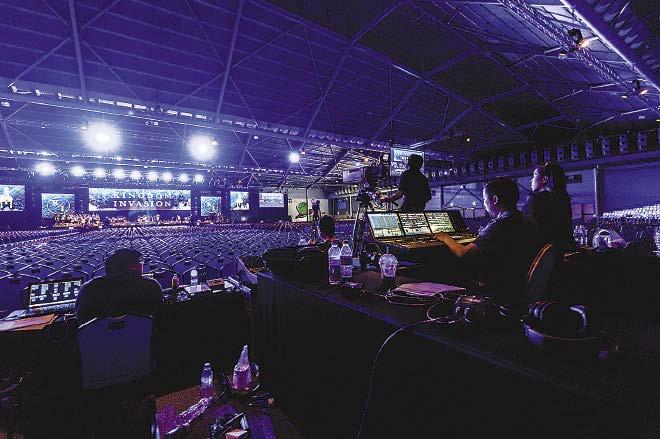
The d3 media server was used to run
the main content. ‘Content output was a challenge due to the high-resolution demands,’ says Mr Huang. ‘The servers have 16 full HD outputs via VFC cards, allowing the output to be run directly from them, so there would be no need for switchers in between. This reduced latency issues and made set up simpler. Ikegami broadcast cameras were also brought in as part of the live camera setup.’
In the months leading up to the event, Mr Huang and the Illuminate team prepared at its ‘previsualisation studio’ by building a virtual 3D representation of the stage for Kingdom Invasion. To do this, the team used MA’s grandMA2 3D software and d3 Designer. Due to time restrictions that were the result of there only being two days given between set up and system check, the software allowed Illuminate to rehearse the cues and identify problems before the event.
‘Illuminate was pushed to the extreme on the final day of Kingdom Invasion,’ Mr Huang comments. ‘We were working on two other major events at the same time. Nonetheless, with the team and the equipment working together, all three events were executed successfully. It’s only when you’re forced to the limit that you’re able to expand.’
The results were also pleasing to those in attendance at Kingdom Invasion: ‘Illuminate Productions are truly masters of their craft,’ notes Peter Hui, the multimedia designer at Cornerstone Community Church. ‘Their efficient responsiveness was excellent.’
www.illuminate.sg
www.kingdominvasion.sg
Delivering the message with Xcellence
SOUTH KOREA: Worshippers at Yang Cheon Church in Seoul are treated visually to a modern, minimalist environment. In regards to audio, the congregants are now catered for by a new sound reinforcement solution comprising systems from Amate Audio’s Xcellence series, supplied by the Spanish manufacturer’s South Korean distributor, Daelim Musical Instruments.
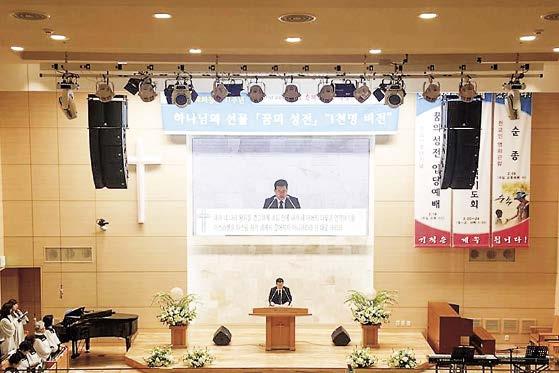
A total of eight X12CLA 12-inch constant curvature line array systems are flown in an L-R configuration of four per side, delivering the main PA. An 18-inch X18T subwoofer has
also been flown on either side, above each array.
Supplementing this stereo setup is a variety of point source solutions from Amate’s B, Key and Joker series, located in certain parts of the church that required additional reinforcement. These include units of the Key10, Key12, JK26 and B8. A DSP608 loudspeaker management system handles processing for the entire installation, while power is courtesy of HD800 and HD1200 amplifiers.
www.amateaudio.com
www.amatekorea.com
6 WORSHIP AVL July-August 2017
NEWS
Illuminate Productions provided the technical production at Kingdom Invasion
An Amate Audio solution reinforces services at Yang Cheon Church
(All images courtesy Illuminate Productions)
This isn’t about new loudspeakers.































It’s about bass lovers and partygoers, sports supporters, music fans and absolute clarity connecting congregations; it’s about dynamic daily programs and tireless listening for everyone, every time. It‘s not about the new 24S/24S-D point source loudspeakers and 21S-SUB taking the performance of the installation specific d&b xS-Series to empowering new levels, in cabinets designed for easier aesthetic integration. It‘s about solutions tailor made to task: d&b amplifiers, software, and accessories, all perfectly integrated for highly efficient, versatile solutions. www.dbaudio.com










xy Welcome to System reality.
Horbst Hall, Germany
Uniting technologies in Strathfield
AUSTRALIA: An A/V upgrade was recently completed at Strathfield Uniting Church in New South Wales. The new solutions were installed by The PA People and include an
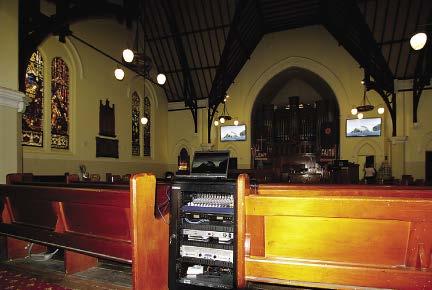

A simple solution
USA: Stonebridge Church of Omaha, Nebraska has opened a new campus in the neighbouring town of Fremont. The sanctuary is constructed in an A-frame design that is traditional of churches built in America during the mid 20th century. As such, it features plenty of reflective surfaces and wooden beams.
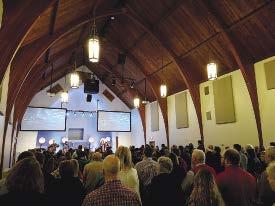
Mike Sessler from CCI Solutions was enlisted to design a sound solution for the sanctuary. ‘It’s a very beautiful space, but tough to get even coverage in terms of where to hang speakers,’
likes their low end, we have two CSXLive 218 subwoofers flown over the front of the stage.
The sound setup comprises a pair of JBL CBT70J-1 line array speakers with a white finish and two Bose DS 16SEW surface mount speakers. Control is via a Soundcraft EPM 12 analogue mixer and a Yamaha DCP4V4S wall mount control panel, while Shure BLX wireless microphone systems and two MX412/C goosenecks capture vocals.
The system’s simple mode enables

the minister or anyone else speaking to turn the solution on with the press of a button, without the need of assistance from the technical team. This is used primarily for simple midweek congregational meetings. The event mode, meanwhile, is used for larger events, including full church services. In this mode, an operator will be present to manage signal levels for the speakers, as well as a band and for the video system, for which The PA People also provided three 84-inch Philips BDL8470EU UHD displays.
The three displays have been installed so that two face out towards the congregation, while the other is mounted on the rear wall, serving as a confidence-monitor for those on stage. The video system is fed material over Cat-6 cables using HDBaseT from the church computer. Also installed was an Ampetronic ILD500 hearing loop driver. This provides assisted sound reinforcement for those in the congregation with hearing aids.
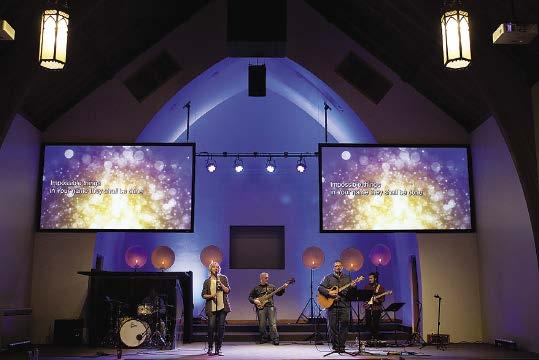
www.papeople.com.au
www.uca.org.au
he says. ‘The whole room is all basically hard surfaces in terms of the walls and ceiling, with wooden-backed pews and no sound treatment. So, we had to cover the back wall extensively and add some treatment to the sides to keep the echoes down.’
Mr Sessler designed and installed a solution comprising two Martin Audio CDD-Live 12 loudspeakers and a pair of CSX-Live 218 subwoofers. ‘The room is much longer than it is wide, but we were able cover the whole room very evenly with just two flown CDD-Live 12s,’ he explains. ‘The main is over the centre just beyond the stage and the delay about halfway back down the centre aisle. And because the church
‘It’s quite remarkable because you can walk the rectangle which is twice as deep as it is wide from corner to corner in the seating area and it’s totally covered,’ Mr Sessler continues. ‘The CDD-Live’s asymmetrical coverage also worked in our favour. The horns are 110° wide in the nearfield and circular when you get to the edge of the coverage pattern. That’s why we can cover the room very evenly with just two speakers.’
www.ccisolutions.com
www.martin-audio.com
www.sb.church
8 WORSHIP AVL July-August 2017
NEWS
The church computer feeds the video displays
The two CDD-Live 12 loudspeakers were flown in the centre of the church
Relationship revival
At Boshoff and his wife, Pastor Nyretta Boshoff, the Christian Revival Church (CRC) has grown to encompass more than 90 campuses across South Africa and internationally. The church was established in 1994 with the inauguration of its Bloemfontein sanctuary and continues to grow at a

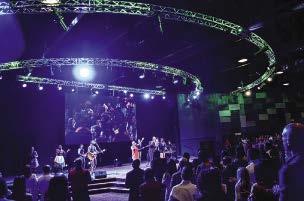

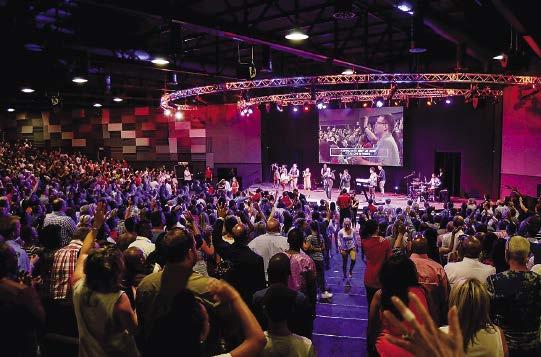
F4UP RGBW black stage washes and an MVS Hazer, as well as 12 Philips Selecon SPX Axial fixtures and 18 Longman FacePar900 LED PAR lights, which serve as generic lighting and truss warmers. Control is via an MA onPC command wing, while dimming is courtesy of a Philips Strand 6Pack.
‘The Robin Spiiders were a great choice, doubling up as a good stage wash and also providing effects over the audience,’ explains Robert Izzett of DWR, who led the project. ‘The miniPointes were used on stage and fired out into the audience for “wow” beam effects.’
In 2006, CRC enlisted DWR Distribution to install an updated lighting solution at its original Bloemfontein campus. Later, in 2014, DWR would once again be called upon to deliver a lighting system at CRC’s newly built auditorium in Pretoria. Although the church has spread throughout South Africa and into Europe, the Middle East and even as far as Australia, its congregation also continued to grow locally. So much so that the 5,500-seat auditorium in the south of Bloemfontein was no longer enough to accommodate the congregation in CRC’s hometown. Therefore, the church has recently opened a new building to the north of the city and once again contacted DWR to provide a lighting setup.
The installation comprised Robe moving lights, with the deployment for four Robin Spiiders and the same number of Robin MiniPointes. These

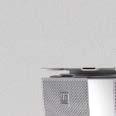


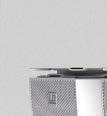


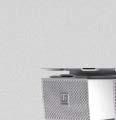
















DWR was only given a small timeframe in which to complete the installation, as CRC planned to open the Bloemfontein North Extension during the second week of January. This was just one week after business resumed for DWR following Christmas and New Year. ‘In the end we had a week buffer for rehearsals,’ says Mr Izzett. ‘The grand opening went
Pastor At officially cut a ribbon, and the service began with praise and worship and a satellite link from the main auditorium.
‘DWR have been privileged to work on three main auditoriums for the church over the past 10 years,’ Mr Izzett concludes. ‘We worked on the Bloemfontein main campus, then at Pretoria, and now at this new venue which is a miniature version of its predecessors with its wedge shape and raked seating.’

www.crc.org.za
www.dwrdistribution.co.za
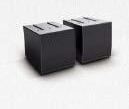



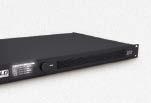

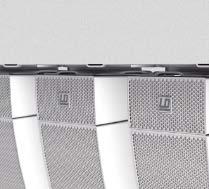







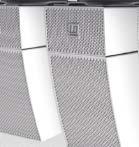
 Pastors At and Nyretta Boshoff cutting the ribbon at the CRC’s Bloemfontein North Extension
Robe Robin moving lights were employed
The newly built CRC Bloemfontein North Extension
Pastors At and Nyretta Boshoff cutting the ribbon at the CRC’s Bloemfontein North Extension
Robe Robin moving lights were employed
The newly built CRC Bloemfontein North Extension
DESIGNED & ENGINEERED IN GERMANY LD-SYSTEMS.COM
Famen Temple projects its story
CHINA: Famen Temple in Shaanxi Province’s Baoji City is widely regarded as ‘the ancestor of pagoda temples in the Guanzhong area’. It was built during the Northern Zhou Dynasty, which ran from the year 557 to 581, by Emperor Huan and the Eastern Han Dynasty’s Emperor Ling. Famen Temple also lays claim to the title of China’s largest holy Buddhist sanctuary. With such history behind it, the monks of Famen Temple wish to impart the sanctuary’s story on those who visit. To help with this, 24 of Digital Projection’s HighLite Laser II projectors have been installed in what is reportedly the largest single fixed laser projection installation in China. These are used to tell four ancient tales from Famen Temple’s past.
‘The temple’s monks believe that by telling the people the true spirit of Tao, infinity will be reached,’ shares Mark Wadsworth, Digital Projection international marketing manager. ‘The recollections of the Famen Temple are designed to transport visitors back thousands of years to see the events through their own eyes, as if they are
time travellers. The effect they wanted was to be like opening temporal and spatial gates, with people and things from the past passing by the audience.’
The installation took place in the pagoda’s north hall and spans six separate performance areas – The Prelude, The Wish (which is divided between two areas), The Audacity, The Battle against Demons and Meditations – which covers a total of 7,300m2. Audiences walk from area to area, witnessing the transformation of the temple over its history.
Laser II projectors are distributed across the different sections of the performance. Three facilitate the telling of the The Prelude, while seven
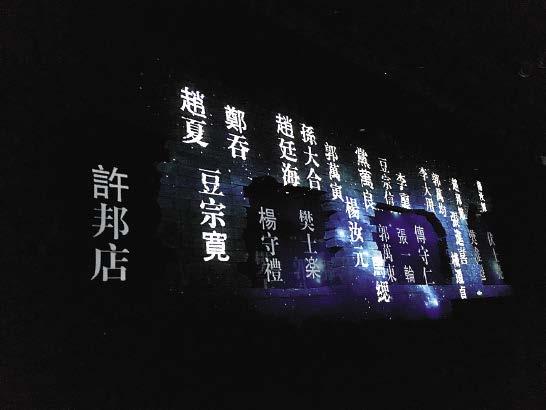
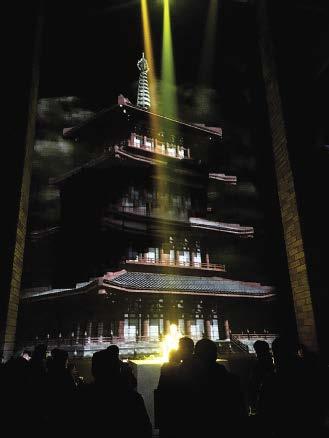
showcase The Wish, all spanning 5,000m2. Meanwhile, a further six of the projectors have been installed to create a 360° panoramic effect for The Audacity The Battle against Demons calls on another three to project the imagery on 126m2 of gauze. The final nine units serve the finale, Meditations, which covers 182m2
‘By the end of the immersive experience that carries the audience

Mixing in the Worship Center
was easy to learn and use.’
Mr Stephens reports that he has been able to use the SD10’s faderconfiguration functionality to create templates that provide a starting point for every type of service. He also notes that the majority of the church’s processing can be handled by the mixer’s onboard effects processors. The large matrix offered by the console has proven a good fit with Worship Center’s main PA of d&b
the audience feels as though they have undergone a baptism of the spirit, having been immersed in the dharma and the stories in the past,’ concludes Mr Wadsworth. ‘The power, brightness and visual clarity delivered by the HighLite Laser II projectors was essential to the overall effect created. It is both an incredible visual experience and a beautiful visual display.’
www.digitalprojection.com
www.fmscf.org
and provide a compatible feed for an Aviom personal monitor mixing system.
‘We talk a lot about our quality control meeting the needs of the 10-percenters – the techies and audiophiles – versus the 90-percenters who never notice any sound issues,’ says Mr Stephens. ‘But we’ve still had some 90-percenters come and compliment us on how much better things sound, without even realising that we’ve installed a new console.’
USA: Located in the Pennsylvania city of Lancaster, Worship Center recently celebrated its 40th anniversary. What began in 1977 as a gathering of 30 worshippers at the Sheraton Conestoga Hotel has grown to become a non-denominational church with more than 4,000 congregants who attend services inside its 9,848m2 sanctuary.

With services of such a vast size, audio reinforcement is a must. However, with a technical crew made up of mainly
volunteers, systems need to be easy to operate, which led to the purchase of a DiGiCo SD10 console for use at FOH.
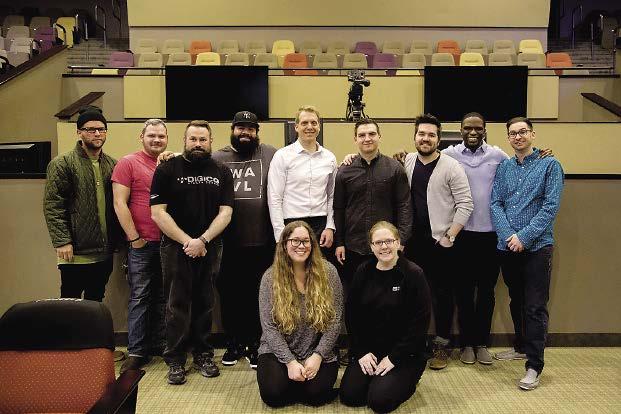
The digital mixer was installed by A/V systems integrator Clair Solutions.
‘We had budget approval for a flagship level console,’ recalls Anthony Stephens, audio director at Worship Center. ‘The SD10 gave us the quality we were looking for and met our needs without having to go to the extreme price-wise. It gave us everything we needed in an affordable package that
10 WORSHIP AVL July-August 2017
NEWS
Famen Temple was built during the time of the Northern Zhou Dynasty
The 24 HighLite Laser II projectors tell the story of Famen Temple’s past
The SD10 is installed at FOH
The Worship Center technical crew

Taking command at
With so much going on, the cathedral controllable system was to be installed
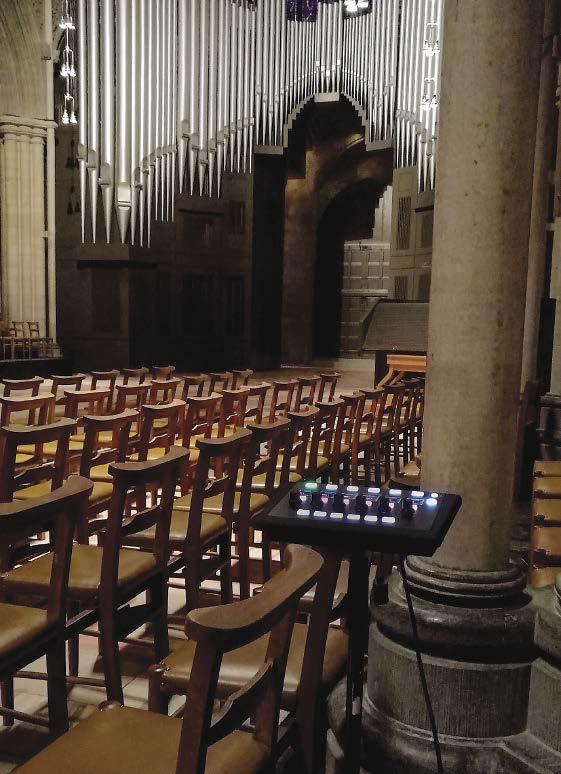
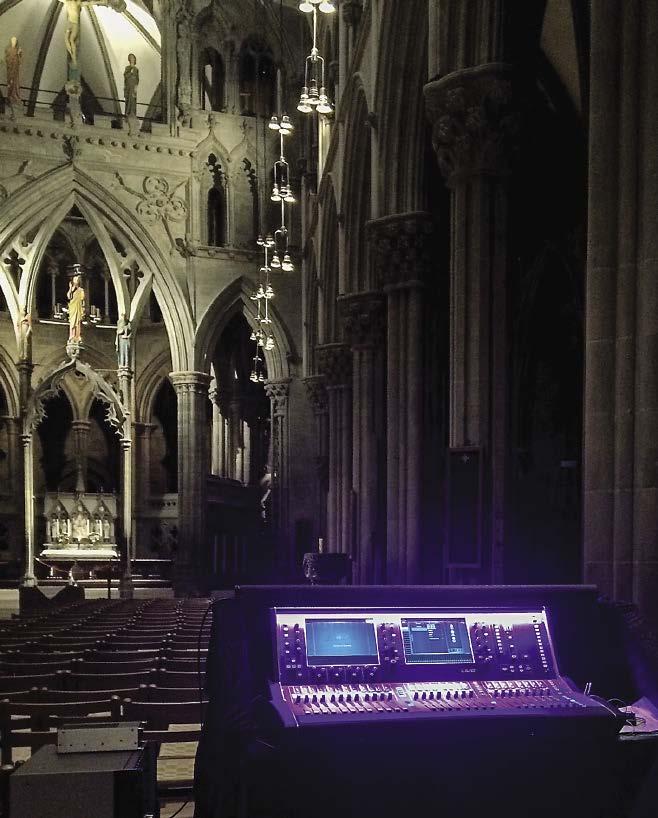

Subtle yet bright projection
USA: First Baptist Church in Westlake, Louisiana recently relocated to a brand new worship centre. During the design phase for the new sanctuary, church management wanted to ensure that all members of the congregation would be able to see sermons clearly and that they would all be fully engaged.
To meet these specifications, A/V integration company Creative Sound and Lighting Solutions was called upon to design and install a projection solution. The company’s general manager and co-owner, Rob Robinson, led the project, which saw the deployment of two Eiki LC-WXN200 projectors.
‘Services at First Baptist Church Westlake are on the contemporary side,’ Mr Robinson reports. ‘There’s a good-sized praise band and a choir
for music and everyone was eager to have the visual aspects of their services equally vibrant. With seating capacity for roughly 600 people, this is no small space. We had to be certain that, whatever projection system we installed, imagery would be bright, colourful, and pleasing to the eye.’
The LC-WXN200 projectors were selected due to considerations regarding the venue’s aesthetics.

‘This is a really nice room, so we didn’t want to clutter the area with multiple screens,’ says Mr Robinson. ‘The two Eiki projectors project directly onto the two side walls of the stage area.’
The projectors were hung from the ceiling above the lighting truss, positioned in the middle of the stage area. Aimed at 45°, they each face the side walls that are angled out towards the audience in a fan-shape.
to facilitate additional inputs when needed. The solution was supplied by the British manufacturer’s Norwegian distributor, Benum, and manages a Shure wireless microphone system and 16 Renkus-Heinz Iconyx speakers. The S5000 has been installed on a mobile rack, which can be connected to one of two Cat-5 patchbays that connect to a pair of GigaAce ports on the DM48. The IP6 is used for recalling presets with matrix settings programmed for the lecture positions located throughout the sanctuary, while also providing level and mute control for each channel. The preexisting analogue I/O boxes remain,
provides me with all the processing tools I could possibly need while retaining a completely uncluttered, easy to navigate interface. The clerks and other daily personnel also find the IP6 controller extremely simple and clear for their purposes.’
www.allen-heath.com
www.benum.no
www.nidarosdomen.no
presentation software package,’ explains Mr Robinson. ‘They also have the option of running Bluray. Since there are no actual screens, the projectors are simply broadcasting onto the giant walls on each side of the stage. This setup was so much more difficult to do because with actual screens, the border is already set for you. In this case, we had to mock up two imaginary screens on both sides and
LC-WXN200 projectors are threeLCD units with 6,000 ANSI lumens of brightness and native WXGA resolution. ‘6,000 LCD lumens was necessary in order to be able to have enough “horsepower” to project onto our screen size – in this case, the walls,’ notes Mr Robinson.
www.creativesoundsolution.com
www.eiki.com
www.fbcwestlake.com
12 WORSHIP AVL July-August 2017
NEWS
Nidaros Cathedral
The IP6 remote controller
The S5000 at FOH
Good Success on solid ground
companies, all of which were invited to tender for the project, with Kosmic Sound and Lighting ultimately being selected due to a combination of price, experience and professional approach. Working with audio equipment supplier Group Technologies to design the tender-winning speaker system, Kosmic installed an RCF loudspeaker solution to provide coverage throughout the 30m wide x 20m long church. This comprises L-R hangs of four HDL 20a active line arrays flown below a sub from the manufacturer’s LF range. Three HDL10a cabinets are flown as centre-fills. Processing is courtesy of a Xilica Uno DSP platform.
AVL integrated system installation, indeed a reference model for the new modern systems using line array and LED technology,’ declares Mr Scott. ‘Congratulations to Good Success Church for your foresight, and Kosmic for your professionalism.’

AUSTRALIA: Good Success Church, once known as the Mighty Living Waters Life Fellowship, resided for many years in hired premises in Perth, before electing to build a permanent home in the city suburb of Jandakot. To ensure that all of the audio, visual and lighting elements were suitable for its new sanctuary, as well as its dynamic live services, the church committee contacted AVL consultant Rob Scott of Trans Media Alliance (TMA) to design a solution.
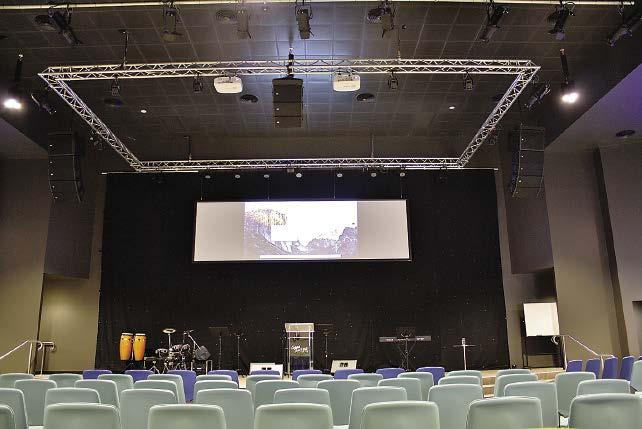
Mr Scott started out as a musician before going on to design sound, lighting and visual systems for churches, large auditoria and performing arts centres. A churchgoer himself and possessing a strong background in the AVL industry, he specified a system that would meet the church’s needs in terms of service style while also making sure that it would be suitable for broadcast applications and live media projection. The specification was issued to five integration
TMA worked with acoustic consultants and the building’s architects to match the RCF system up with the acoustics of the room. This led to a change in the height of the roof, as well as a custom design for the walls, ceiling panels and diffusers. ‘It makes such a difference to the outcome when I am consulted before the project is built,’ says Mr Scott.
On the lighting side, TMA opted to explore LED technology to present a modern feel on stage that looks good in person and on screen.
‘This is an exceptionally professional

















Good Success Church’s senior pastor, Pastor Rajan, commented on Kosmic’s professionalism and flexible approach. ‘Kosmic also provided training and after completion support for our transition to the new system,’ he states. ‘The result achieved with the acoustic treatments and audio system are ideal.’
www.goodsuccess.church
www.kosmicsound.com.au
www.rcf.it
www.transmediaalliance.com.au
NEWS 1/2PAGE HORIZONTAL
Redundant Dante™ and output routing GPO, remote on/off swithc and MAIN/AUX input select In-depth network and remote control Redundant power supply 8x8 Input / Output matrix Highest level DSP with multi-stage signal processing Suitable for mixed lo-Z and 70/100 V loads Up to 1500W per channel @ 4Ω
The sanctuary is wider than it is deep
Community converges at Fo Guang Shan

NEW ZEALAND: New Zealand’s largest Buddhist temple, Fo Guang Shan North Island, serves the dual role of temple and community centre for the Fo Guang Shan Buddhist movement. Located in Auckland, it was built over the course of seven years, opening in late 2007 with a design based on that of the Tang Dynasty, including green glazed roof tiles, maroon stone pillars, slat window frames and a courtyard adorned with stone lanterns, pine trees, bamboo and cherry blossoms. The temple’s original PA system was recently deemed no longer fit for purpose, having aged significantly in the decade since the temple was constructed. Auckland-based systems integrator, AV Expression, was contracted by Fo Guang Shan to design and install new sound solutions to cover both the temple and the outside areas. Opting for a solution comprising Community Professional loudspeakers, AV Expression collaborated with the manufacturer’s ANZ distributor, Hills, for the system design.
‘The internal temple is a prayer and worship space with high ceilings and reverberant décor and fittings,’ explains Blake Kirby from Hills. ‘For this we

chose Community’s ENT-FR column line source systems. With wide horizontal and narrow vertical dispersion they are ideal for high intelligibility coverage in reverberant spaces. A lower ceiling section of the room is complemented with C6 ceiling speakers.’
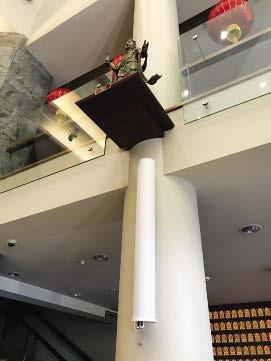
The outside areas are covered by R.5 loudspeakers, which were chosen for their weather resistance as well as the quality of their speech and music reinforcement. ‘Throughout the day they play gentle background music while, for larger gatherings, they provide the main PA for microphone presentations,’ notes Mr Kirby.
AV Expression verified the design
www.communitypro.com
www.fgs.org.nz
www.hills.com.au
Delivering clarity at Praise Cathedral
USA: Praise Cathedral South Carolina mixes traditional elements of worship with the contemporary and leads its services on a Sunday with a 150-piece choir and orchestra that performs a medley of hymns and modern worship choruses.

It recently opted to replace its original sound system. ‘After consulting with the senior pastor, a committee was set up to oversee the upgrade,’ recalls Daniel Scarbrough, Praise Cathedral’s media pastor, ‘We brought in a specialist consultant, who suggested a range of options.’
One of those options was an Alcons Audio LR7 micro line-array system. ‘We fell in love with the sound of the Alcons L-series when our local installer, Audio Solutions, demonstrated it in our auditorium,’ says Mr Scarbrough. ‘One of the most important things was that the performance in the vocal range had to be exceptional and the pro-ribbon drivers delivered great speech intelligibility and a crisp, clear sound.’
solution, Alcons Audio USA supplied the church with EASE data, which reportedly showed that the system would provide even better coverage than anticipated. The installation comprises 27 LR7 cabinets with three LR7B bass modules and a pair of BF362 mkII subwoofers. Three VR8 monitors were also provided for
Sentinel10 amplified loudspeaker controllers manage and power the entire setup. The main system was painted white so as to blend in with the sanctuary’s décor.
‘The LR7 with LR7B makes for an outstanding array, both in sound and in appearance,’ Mr Scarbrough declares. ‘Adding the LR7B has
allowed us to roll off the LR7s, delivering a nice blend of the low-mid frequencies and allowing the LR7s to operate in the upper frequencies for which they are best suited. We are sending the extreme lower frequencies to the BF362 mkII subs via an auxiliary send, which allows us to tailor the level of the subs from the mix position with ease. The choir also loves the VR8s; pushing sound to a 120-voice choir clearly and evenly from overhead has been a challenge in the past, but the VR8s have given them sound clarity like never before.’
Set up was completed in five days, resulting in no disruption to Sunday services. The new system has reportedly not only improved coverage and clarity, but also eased the workload for Praise Cathedral’s technical staff.
www.alconsaudio.com
www.audiosolutionsusa.com
www.praisecathedral.org
14 WORSHIP AVL July-August 2017
NEWS
Fo Guang Shan North Island
The outdoor areas are covered by R.5 loudspeakers
Community ENT-FR column line source speakers were installed inside the temple


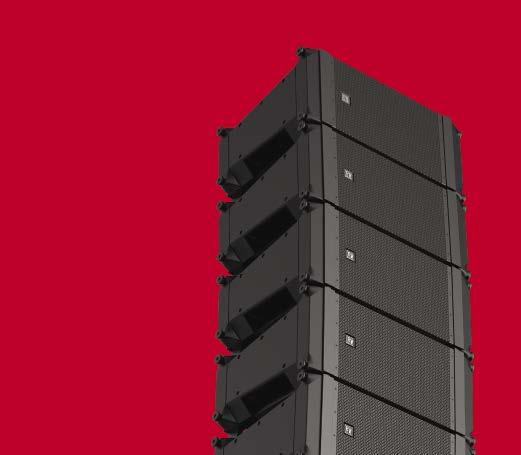
























JPCC clears coverage
INDONESIA: Jakarta Praise Community Church (JPCC) began with a small prayer meeting of 10 young adults in 1996, known then as the Jakarta Praise Center – Youth Ministry. The congregation quickly grew and in 1999 was given the name it carries to this day, as JPCC was formally founded by Jeffrey and Angela Rachmat and Jose and Hanna Carol.
In the two decades that have passed, JPCC has expanded dramatically, with a congregation today comprising 15,000 worshippers. Services are run in the afternoon and weekend in UpperRoom Jakarta, a multi-purpose venue in the Thamrin district, while morning services are held at The Kasablanka, which is located in the Kota Kasablanka Mall.
When JPCC recently commissioned a new sound solution for its Kasablanka site, it looked to Adamson’s E-Series due to prior experience with the manufacturer’s systems and approached Indonesian distributor, Big Knob Audio Local rental company Soundworks had provided E15, Metrix and S10 systems for one-off events at the church previously and the Kasablanka venue itself.

Teamwork in Taiyuan
The new solution comprises 14 E12 loudspeakers, flown seven per side. The E12 proved a perfect fit for the extremely wide Kasablanka venue due to its wider coverage in the horizontal plane compared to the narrow E15. Meanwhile, handling the lows are six E119 subwoofers per side, while Lab. gruppen PLM 20K44 amplifiers power the entire system.
‘The sound is much clearer and even,’ says JPCC creative director Randolph Manoe. ‘Previous dead spots have been completely eliminated and the sound at the very back still feels intimate and not overpowering during praise and worship.’
JPCC’s head of service and programming, Bertha Sinaga, backed up Mr Manoe’s claims, having put them to the test: ‘Since the installation was completed, we have sat in a different spot every week,’ she explains. ‘The new installation has provided even coverage and consistent sound quality throughout.’
www.adamsonsystems.com
www.bigknob.net
www.jpcc.org
www.soundworksjakarta.com
for which the equipment had been supplied by distributor Budee. This partnership came into effect once again as Budee assisted Mr Wong in specifying systems.
Loudspeakers were placed carefully to avoid echoing off the ceiling. Five pairs of Martin Audio CDD5W cabinets were installed at equal intervals, ensuring even coverage. The level, delay and EQ for these are managed by a Linear Research ASC48 advanced system controller. ‘The ASC48 controller is used to tackle eight sets of outputs, adjusting the delay and EQ to overcome the problems,’ explains Patrick Lau, sales director at Budee. Sennheiser ew 322 and ew 345 wireless microphone systems were
Heartfelt sound reinforcement
ZIMBABWE: Heartfelt International
Ministries’ International Overflow Center recently staged The Hallelujah Night, a live gospel concert. The 4,000-seat auditorium was filled to capacity for the event, which featured a performance from renowned South African choir Joyous Celebration.
Divine Concert Sound was hired to deliver the stage, sound and lighting setup for the event and subcontracted Tropical Sound & Music Distributors to handle the sound reinforcement.
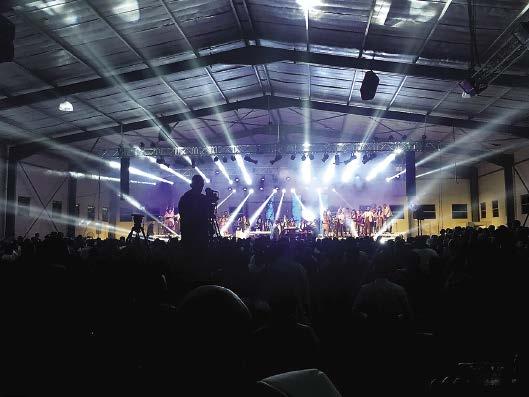
‘We have a successful record with TW Audio at a lot of events and as

a result, it’s always our first choice,’ explains Pacival Percy Mukuchura of Tropical Sound & Music.
Local contractors were brought in to lay most of the cables, including Canare microphone cables and Belden speaker cables. ‘Budee sent two technical engineers to do the soldering work between connectors and the equipment,’ says Mr Lau. ‘They racked the equipment and wired it all up. It took less than three days to set up and commission the whole sound system.’ With the installation complete, Mr Lau reports another successful team-up for the Budee/Powermax pairing. ‘The church was amazed by the efficiency and the clarity of the sound system,’ he concludes.
www.budee.com
www.powermaxasia.com
one as a centre-fill. These were accompanied by eight Vera S33 subwoofers and a pair of BSX subwoofer extenders. ‘They were all powered by Powersoft amplifiers,’ Mr Mukuchura confirms.
A Yamaha LS9 and M7 were used at FOH and the same mixing setup was used for monitors. ‘You could clearly hear every instrument,’ recalls Mr Mukuchura.
www.heartfeltonline.org
www.tropicalmusic.co.zw
www.twaudio.de
16 WORSHIP AVL July-August 2017
NEWS
Zhang Tongliang, Xiao Jiesu (Budee), Zhao Xugang, Chan Wai-hong (Powermax Asia)
Mosaic goes 4K Recording Revival



USA: Located in the heart of Hollywood, Mosaic is among the first houses of worship in the USA to adopt an end-to-end native 4K-resolution file-based video workflow for media content creation. The church procured a Facilis Terrablock 24D shared storage system with 192TB of storage and 16GB of fibre channel networking capacity from Cutting Edge Audio and Video Group. This offers a shared file system and data management tools, along with the capacity to handle tasks such as colour grading and graphical overlays. It delivers video, audio and data over fibre and 1/10/40 Gigabit Ethernet connections through a custom protocol.
Mosaic’s 4K-workflow also features third-party systems, including four Sony Cinealta 4K/HD live production cameras. Two Sony PWS-4500 4-channel multiport A/V storage devices record the 4K camera feeds and this is then transferred directly to the Terrablock. The Terrablock also receives two additional 4K
streams: the programme output and clean feed from a Sony MVS-8000X 4K production switcher used during the worship service. A Levels Beyond server for media asset management also interfaces with the Terrablock.
Telestream’s Vantage Transcode Pro Connect media-processing platform also interfaces with Terrablock. Media deposited on the Terrablock automatically drops into a ‘watch’ folder and Vantage picks these up to create the file versions. Vantage Lightspeed servers provide accelerated GPU.
www.ceag.com
www.facilis.com

www.mosaic.org
Ultimate Flexibility.
USA: Elevation Church in North Carolina recently filled its Ballantyne campus for its Code Orange Revival worship event. A live HD webcast was streamed online and a live worship album of the event was also produced.
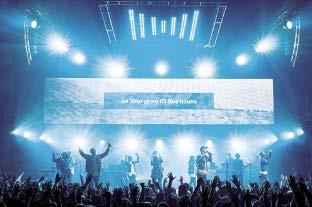
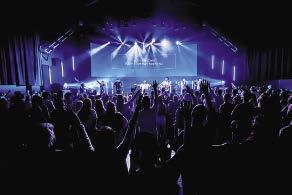
took the controls to mix and record the live audio. ‘Our live albums are a huge part of our ministry,’ he shares. ‘We only get one shot to capture these events and I need to be able to rely on the team, gear and systems to work smoothly and not distract from what’s happening.’
Since TNDV was instrumental in helping Elevation Church record its last worship album, the church asked the production company to provide its Vibration mobile recording studio/ control room for the recording. The 10-day project also leveraged TNDV’s on-site engineering services.
Elevation Church’s audio engineer, Garrett Davis, boarded Vibration and
The wireless mic system that will grow with you.
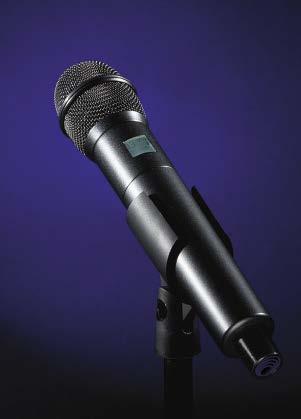


The Venue 2 wireless receiver gives you a modular con guration that lets you decide how many channels you need, and what each channel will receive. Eight di erent transmitters are available to use with any microphone or instrument pickup that you prefer. This is exibility that grows with you.
The award winning Digital Hybrid Wireless® technology delivers 24-bit digital audio quality and the proven reliability of a fully optimized FM radio link. Wireless Designer software is included for easy setup and control.
TNDV senior audio engineer Adam Ellis was onsite providing technical support services. The technical setup included 128 pre-amps on a full split, including microphones of all types on stage, on talent and throughout the auditorium. The Vibration truck houses a Studer Vista 9 digital mixer, with 256 remote and 128 local inputs. Vibration can service multiple stages via single mode fibre and record up to 256 tracks onto ProTools HDX11 with back-up recording onto JoeCo BBR-MADI recorders.
‘Each time we do a project with the TNDV team, they come excited, prepped and ready to go,’ Mr Davis concludes.
www.elevationchurch.org
www.tndv.com

NEWS July-August 2017 1/2PAGE HORIZONTAL
Instruments Headset Mics Lav Mics Handhelds Venue 2 Tel USA +1 (310) 470-8998 sales@moretec.net Call or email: More Technologies, Inc.
A musical performance from Elation Church’s 10-day revival
Scan this code or visit this web page for details on transmitters and other information: www.lectrosonics.com/US/WAVL717
Filling a massive space
Ensuring parishioners could hear the message clearly was key to the audio and video upgrade at the National Shrine of Our Lady of Mount Carmel. Frank Wells reports

seat Hall of Saints, holding room and entrance door. These are connected into the video system using HDMI and Cat-6 extenders and used for responsorial prayer and to display video feeds of the celebrating priests.
Conference of the Philippines, the National Shrine of Our Lady of Mount Carmel in Quezon City has undergone a complete renovation. ‘The goals of the design and upgrades were to improve the church-goers’ comfort and to provide a more solemn environment for both private prayer, and the celebration of masses,’ explains architect Ma Antonia M Hubilla. ‘The interiors were also modified to accommodate for the increased influx of pilgrims to the site.’
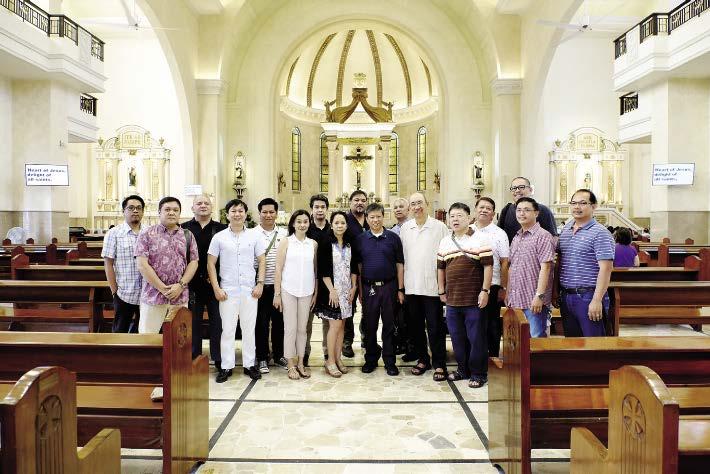
Inside the cathedral’s 53m long, 25m high sanctuary the physical renovations mean surface materials of concrete, stone and Hardieflex (a fibre reinforced concrete sheet cladding material). When you add in the stainedglass windows it makes for a highly reverberant room that needed to be tamed. The first stage was acoustic treatment. ‘The main church has a new ceiling installed using Ecophon panels,’ says Mr Hubilla. In addition to this, ceiling traps absorb some reflections and trap echo.
To further aid the acoustics, an Active Audio loudspeaker system was selected. Active Audio Steparray steerable array column loudspeakers were supplied and installed throughout Our Lady of Mount Carmel by Quezon City-based integrator, Arraystech. Active Audio SA250P models (2.5m, 6-channel arrays of 30 smalldiaphragm speakers) are used at the front of the altar, SA100P units (1m, 3-channel, 12-speaker arrays) are used for the left and right transept,

alongside SA180P models (1.8m, 3-channel, 22-speaker arrays) in the nave, Seat of Wisdom and Hall of Saints side chapels.
‘We consulted Active Audio regarding our application,’ recalls the church’s technical head, Virgilio R Sityar. ‘They gave us a speaker system that was designed and is effective for our big church.’ The wall-mounted Active Audio loudspeaker arrays are fed by the French manufacturer’s MPA6150 6x150W power amplifiers which are themselves fed from Active Audio Nut 8x8 audio processors.
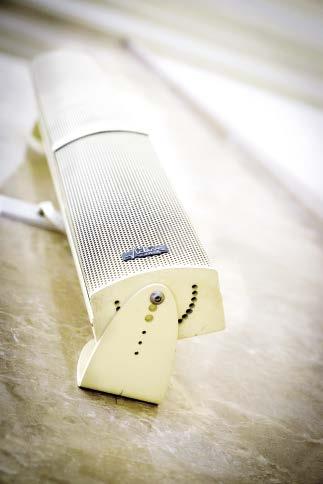
At the other end of the signal chain, Shure MX412 mics are deployed for altar, ambo and lectern use, while the manufacturer’s MX428DS cardioid gooseneck mic is also in use. Shure SM58s are used for the choir’s handheld needs, while Sennheiser ME36 mics are hung from the ceiling above the choir.

Providing control for the whole system
the FOH console is a 16 mic/20 line input Topp Pro T20 digital mixer which has been installed in the transept balcony area at the top of the choir loft. The console was chosen, says Mr Sityar, because it is ‘user friendly and easy to operate, even if you are not beside the equipment,’ the latter approach facilitated by iPad control. While the audio portion of the project has been critical, it is not the only technical area to be upgraded. ‘The audio and video systems in the entire facility were updated to give the parishioner the Word of God clearly,’ explains Mr Sityar.
On the video side, 55-inch and 48-inch LED video monitors from TCL have variously been installed at the nave, altar and transept of the 2,000 capacity main hall. The same screens have also been used to serve the 60-person Seat of Wisdom Chapel, 60-
The entire facility is maintained and operated by a four-person tech team who are kept sharp through quarterly training. Arraystech returns for periodic tuning and calibration of the system but also provided an instructions and settings manual should the tech team need to make any alterations. The project has transformed the national shrine, but there is still more the cathedral’s tech team would like to do. Still on the future wish list is an air conditioning system for the main church, in part to provide thermal comfort for the worshiping parishioners, but also isolation from external noise.
The National Shrine of Our Lady of Mount Carmel has, in a few short months, proven the realisation of its vision of sonic clarity and visual enhancement in service to parishioners and pilgrims alike, proving that good things can come in big packages as well as small.
www.activeaudio.fr
18 WORSHIP AVL July-August 2017 PROJECTS
Stone, concrete and stained glass make the main church highly reverberant
The Mount Carmel contractors team
A wall-mounted Active Audio array

Expansion driven upgrade
Fifteen years of reliable performance led Gereja Rehoboth church to investigate new capabilities from familiar brands. Richard Lawn shares the solutions implemented
LOCATED IN CENTRAL BANDUNG IN West Java, Indonesia, the Gereja Rehoboth church has been extended three times since its original construction in 1947 in order to accommodate its increasing congregation numbers. Most recently in 2015, a neighbouring shop was acquired and added to the floor plan. The ambitious project involved the removal of the pre-existing walls and the entire roof before an entirely new construction commenced. Completed the following year, the church also decided on upgrading some of the other infrastructure with the limited budget available, including the acoustics and the audio system. Services in the church allow up to 850 worshippers to congregate in the lower sanctuary and an upper balcony area. Led by Pastor Dr Johannes R Arianto, the three Sunday services are charismatic in nature and include a full choir at the front of the stage together with six to eight accomplished musicians across its 16m wide x 6m deep stage. An 8m wide x 4.5m high HD LED screen serves as an impressive backdrop behind this, for which the computer and video camera content is fed through a VD Wall LED Sync 820H processor prior to screening.

After 15 years of service, the EAW LA series loudspeaker system was removed from the sanctuary to be utilised in other rooms. When deciding how to fill the void, the church was resistant to using a different brand of loudspeaker, as chief engineer Mr Subianto explains. ‘We never had a problem with the LA’s over all that time and they were working perfectly
when we took them down prior to construction. However, with the enlargement of the room, we needed a higher SPL and perhaps a more modern solution for our needs to ensure adequate coverage.’
Following consultation with the EAW
supplier and systems integrator Kairos Multijaya, a point source loudspeaker was once again recommended for the church’s needs. ‘You don’t need a line array in such a room,’ admitted Kairos Multijaya VP of engineering Leo Tanzil. ‘The church also had a limited budget, so we decided to design a simple but highly effective system.’
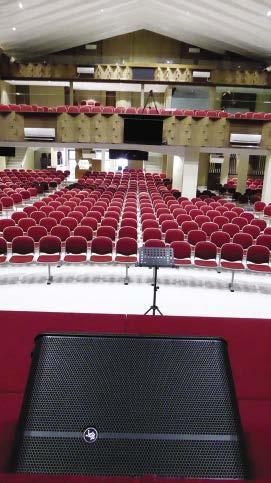

The FOH speakers simply consist of ceiling suspended QX596i cabinets with adjacent hangs of two SB1002 dual 18-inch subwoofers. Commonly used in stadium design, the QX596i combines four phase-aligned 12-inch woofers with a mid/high compression driver coupled to a 90˚ horizontal x 60˚ vertical constant directivity horn. The four LF woofers surround the coaxial HF driver symmetrically in both the horizontal and vertical planes, ensuring that the response across the full frequency spectrum appears to originate from a single point source. Although the QX596i can reproduce

low frequencies down to 55Hz (-10dB), the addition of the SB1002 subwoofers extends this to 28Hz (-10dB).

With the existence of balcony and under balcony areas, fills were required. The balcony area is served by two ceiling suspended QX396 models, which share the same trapezoidal enclosure design as the QX596i big brother though scaled down to integrate four 10-inch woofers rather than the four 12-inch woofers found in the QX596i. ‘We needed a lower power output as it is closer to the rear wall,’ explains Mr Tanzil. Affixed to the 3m ceiling under the balcony area, the rear sanctuary seats are served by six EAW MK8196 8-inch two-way speakers finished in white. A further two MK8196 cabinets have been positioned in the lip of the stage for the front-fills.
The entire loudspeaker system is managed via two EAW UX8800 processors that have been mounted in a portable rack behind the drum kit. The rack also hosts five Lab.gruppen FP two-channel amplifiers that power the QX and SB1002 speakers and a single Powersoft Ottocanali 8k4 four-channel amplifier dedicated to the MK8196 fills. Measuring 8U in height, an Allen & Heath iDR48 MixRack completes the equipment space. Whilst providing the console DSP engine, together with networking and control interfaces, the MixRack also receives up to 48 mic/line inputs from the stage and provides 24 XLR line outputs under the control of an iLive T112 control surface located in the dedicated production area above the upper balcony.
PROJECTS
20 WORSHIP AVL July-August 2017
The balcony area is served by two ceiling-suspended EAW QX396 cabinets
A full choir and six to eight accomplished musicians perform to the congregation on the 16m wide x 6m deep stage
The existing Mackie HD1221 speakers continue to be used as stage monitors
it was a necessity since we had a sold out show with over 20,000 people in the audience.’
Moving on to Durban, the system was notably smaller for the 3,600 capacity City Hill Church. Here 16 V-series cabinets made up the L-R main arrays the same number of V12s for front-
‘We previously mixed on a GL2800 analogue board and were assured by the Allen & Heath quality and reliability,’ confirms Mr Subianto. Reluctant to change, the technicians decided to take the digital plunge after all, but opted to play relatively safe by ordering an iLive console surface. ‘It was relatively straightforward to get up to speed using this as it’s got analogue friendly features. It also saves us a lot of time running up and down three levels as we have downloaded the iLive app onto an iPad and that allows us to mix the services from the sanctuary when we are downstairs. This is particularly useful during the intervals between the three services when we are having to change the instruments and backline on stage within one hour.’ In terms of microphones, the drummer is equipped with an Audix kit incorporating f2s on tom toms, a d6
shows took place at the city’s Hillsong campus. This was the smallest venue the band played at 1,000 people and made use of the church’s in-house d&b system. This comprised 12 V-series cabinets running ArrayProcessing via the manufacturer’s 30D installation handle low frequencies. Control was again via the R1 remote network.
graphs and API collaboration with Lake Controller software. A Lectrosonics
on kick drum, an f5 on snare and f9s on the cymbals. The other musicians utilise Shure SM57 mics, whilst the singers and the pastors are equipped with Shure ULX4 and PGX4 wireless systems. Specifically designed for snares, the percussionist is amplified by a pair of AKG D440 dynamic cardioids.
how quickly the d&b PA systems can be designed and deployed. Rigging d&b
need to insert the M-Dante interface card into the MixRack to allow this simple upgrade,’ furthers Mr Tanzil.
eye,’ he continues. ‘No other PA system works this quickly, reliably and easily and gives you such a consistent level of audio quality, scalability and control.’
to the in-house system, but this time Grand West Casino Arena was covered line array elements with four stacks of
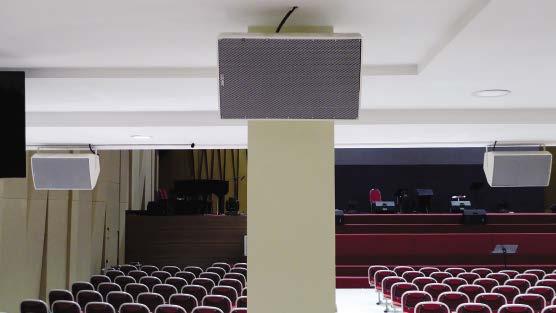

While the PA changed to meet the needs of each venue, the way they were driven remained the same for
Gigacore 16XT managed switches processors and three Atterotech for delay signal and control. Live Capture tuning software was used for the alignment and voicing of the PA
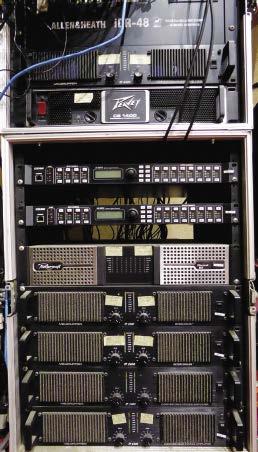
‘The tour went down very smoothly with no real issues worth noting,’ says Array. ‘The biggest challenge was the turnaround time between shows, but
Further developments are pencilled
very little and the control network just

‘What a pleasure to simply open up our ArrayCalc design in the R1 control software and to have all the settings
of other settings) “dumped” into the
in once budgets are made available including an in-ear monitoring system, but for now the musicians and pastors are satisfied with the Mackie HD1221 monitors. Services are currently recorded through an 8-channel Focusrite Saffire Firewire audio interface, but with the acquisition of the iLive T112 console, full multitrack recording is now possible. ‘They just
Rensburg is clearly happy with the performance of his team and the equipment. ‘This wasn’t a loud rock/ dance show, but a more intimate and detailed audio production and we were
translated to the audience, from the front row, all the way to the last seat in the back row. The highs were crisp, the mids were full and warm, the lows were deep and punchy throughout the whole venue and we were very pleased with the coverage.’
The opportunity to extend the church in 2015 provoked an audio upgrade, which otherwise would not have taken place for several more years, one suspects. Perhaps it was timely, as it has provided the Gereja Rehoboth technicians with a digital, remote controllable operation. In addition the congregation has confirmed that audio quality is clearer and more powerful than before. ‘Although it’s been over 15 years since we installed the system here, we had a duty to maintain the high expectations of both brands,’ confirms Mr Tanzil. Fortunately both Allen & Heath and EAW have gone from strength to strength over that period of time according to the staff and the congregation at this respected church.
www.allen-heath.com
This high-level of planning ensured a hitch and showed the advantage that houses of worship can get from calling in professionals for major events.
www.eaw.com
www.kairosmultijaya.com
www.bluearray.co.za
PROJECTS
July-August 2017 WORSHIP AVL 21
Two EAW MK8196 cabinets are used as front fills
The equipment rack is located on stage behind the drum kit
EAW MK8196 speakers serve as under balcony fills
January-February 2017 WORSHIP AVL 29
d&b audiotechnik systems were used for three of the concerts
Bethel Music played four concerts in their recent tour of South Africa
Building for the future
Managing the increasing role of music without taking away from the spoken word was the challenge at BPGC’s new sanctuary.

LIKE MANY SINGAPOREAN CHURCHES, Bukit Panjang Gospel Chapel (BPGC) comes from humble beginnings. In an act of self-sacrifice, Nancy Wee gave up her residence at 12 Galistan Avenue in November 1958 so that it could be expanded for worship meetings that had been taking place in Woodlands Road. Having been accepted by the local residents and granted a licence, fate took a cruel twist in 1972 when a fire completely destroyed the original building. Undeterred, the elders turned the unfortunate event into a positive prior to the reconstruction phase, ensuring that the building’s singlestorey design be better equipped and made more functional for the growing membership. Applying the same principle of positive destruction, the church was demolished in 2015 to provide a newly-approved three-storey home that includes accommodation for the church’s growing use of A/V technology.

Leadership and musical heritage
Daniel Chan (head of A/V and music) provides additional background to the congregation’s history and the use of music in worship: ‘The church heralds from a unique movement referred to as Brethren denomination. Many ladies make up the leadership, although no one needs to be an industry leader. The services focus on readings, lessons and sermons from the Bible and so the focal point of the stage is the central pulpit. Although spoken word and intelligibility of speech are
the fundamental audio requirements, we have always played some music to accompany the message. I’ve been a member of the church since 2003 when it was basic with just one portable speaker for the worship leader who sang with a pianist.

‘As musicians, both my friends and I were encouraged to perform for the church around 10 years ago,’ Mr Chan continues. ‘Initially we were shy to do so, but agreed and started to practice. This created some conflict with our traditional worship style, but ultimately we rejuvenated the old hymns by giving them a fresh feel. We started to introduce some more contemporary Christian material and embarked on a musical learning journey for some years, ensuring we were in tune with the worshippers. The church members accepted our style of music and today there are up to eight musicians
performing on stage for the two English services together with the Chinese one.’
The works
Once granted a licence to build the new church, the elders wasted little time in drawing upon the expertise of Cogent Acoustics’ Robert Soo to assist
them with their AVL requirements for the second-storey sanctuary. ‘Once the building works commenced, the project moved very quickly,’ recalls the consultant. ‘I spoke to Daniel and tried to assess how best to provide an A/V solution that would not only befit the style of worship now, but would cater for the changes ahead. The church

PROJECTS
22 WORSHIP AVL July-August 2017
The chapel has been reconstructed as a three storey house of worship
One of the two Panasonic AW-H60 fixed cameras
PAVE’s Stephen Teo and Tan Hui Ming with Robert Soo and Daniel Chan
The restricted ceiling height of the 350-capacity sanctuary was one of the main challenges

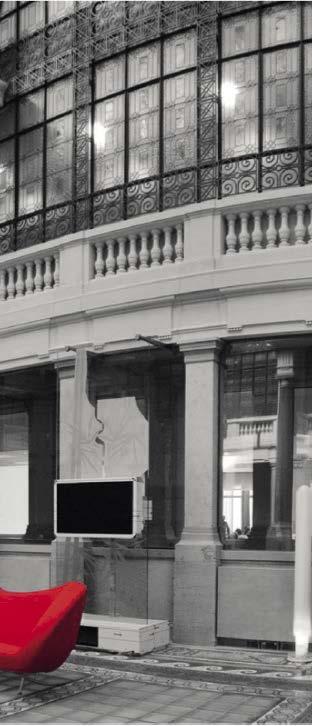

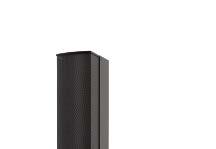









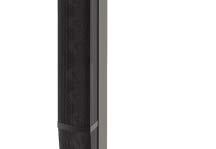

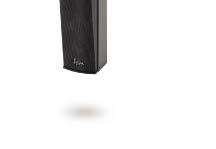

C M J CM MJ CJ CMJ N
went from a pianist and a singer to an eight-piece band with a PA system in a decade, and being a reformist church, may change at any time. So, future-proofing was also an important consideration.’
New infrastructure
‘Networking was also required between the 350-capacity sanctuary and a small chapel plus classrooms on the third level,’ Mr Soo continues. ‘These can be used as overflow together with a screen in the first-floor foyer and office area. In addition to the cabling conduits, distributed tie-lines going from the sanctuary to the chapel and car park had to be drawn in with the architect and general contractor. One of my primary concerns was the limited size of the 21m wide x 16m deep sanctuary, especially the limited 4.5m high ceiling. By drawing in an operable door, the overflow area at the rear of the room can extend the length by a further 5.5m. In terms of acoustics, a number of diffusers and diffractors could be added to the walls, together with acoustic panels on top of the ceiling. Overall, I wanted to create a “wow” effect with audio for Daniel, and especially for the older members, but the balance was always going to be hard with such a room.’
Four systems integrators were asked to submit a tender for the A/V works based on a system design document drawn up by Mr Soo. ‘PAVE were selected for the works as they have a good reputation and were prompt in their submission, whilst their quote was very competitive,’ explains Mr Chan. ‘The deadline we initially set was for Christmas 2016, although we always knew this may be too tight.’
PAVE technical sales manager Tan Hui Ming adds the systems integrator’s perspective: ‘We would be called to site during those windows when other construction phases had finished, but it is challenging to work in such conditions, especially with the dust. The cabling infrastructure was completed prior to the summer of 2016. Our projects manager Loo Duff led the termination, installation, systems and programming technicians on site as and when conditions allowed, which more often than not was at very short notice and while they were working on other projects.
‘We knew the restrictive room height was going to be an obstacle for flying speakers, suspending lighting trusses and installing video equipment, so we flushed all the equipment as close to the ceiling as possible,’ Mr Ming continues. ‘This was a project where we had to improvise on an almost
daily basis. When the team turned up on site they discovered that ceiling panels had been added above the speaker points. This led to numerous phone calls, but ultimately you have to take responsibility and make on the spot decisions. Therefore, we cut away areas of these so the hanging points, trellises and placements could be fixed.’
‘PAVE worked quickly as and when required, but they also acted intelligently when problems arose,’ confirms Mr Soo. ‘There is always some sort of compromise that needs to be made between expectations and delivery in a performance venue. The rear wall was treated and PAVE added a layer of foam to the operable wall to mitigate the reverb from its hard surface. The panels were angled as much as possible to further defract the sound.’
Sound delivery
An L-R ceiling suspended EV EVF frontloaded array anchors the loudspeaker system for the room. Each stereo pair combines an EVF-1152D 15-inch cabinet and an EVF-1181D 18-inch front-loaded subwoofer ceiling fixed adjacent to one another. Designed
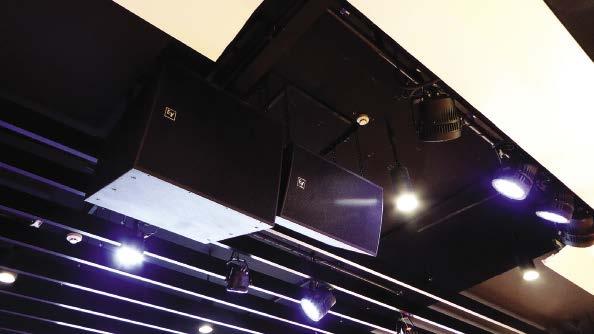
for a nearfield wide-throw raw spread coverage pattern with its 90˚ x 90˚ waveguide, the 600W-rated (continuous) EVF-1152D draws its power like that of the accompanying subwoofers from a CP4000S 2 x 1,800W amplifier. An EVF-1122S 12-inch model has been added as a central speaker and is the mono sum of the L-R system ensuring adequate coverage in the middle of the sanctuary.
Powered by two EV Q99 2 x 1,250W amplifiers, four EV ZX190 200W 8-inch speakers have been wall-mounted above and within the operable door for coverage in the rear overspill room. A further four of these polypropylene cabinets with rotatable 90˚ x 50˚ horns are used for monitoring the worship leader, drums and piano on stage. One of these models has been ceiling mounted facing towards the pulpit, shielded behind the EVF-1122S speaker.
A DC-One 2-input x 6-output processor has been programmed with stored EQ and crossover points, together with dynamics and delays, from the 20 user settings available. These can be further configured from the PC software or a tablet as required.
A bespoke designed open production area located at the rear right of the room commands a full view of the stage and is home to the production
team during services. Here, an Allen & Heath Qu-32 Chrome Edition 38-input x 28-output digital console is used for mixing the services. The desk’s features include a touchscreen interface, automatic mic mixing, a spectrogram and additional monitor mixes. ‘This is our first digital console,’ furthers Mr Chan. ‘There’s a lot of built-in complexities, but we’re finding it straightforward so far as it’s analogue friendly.’
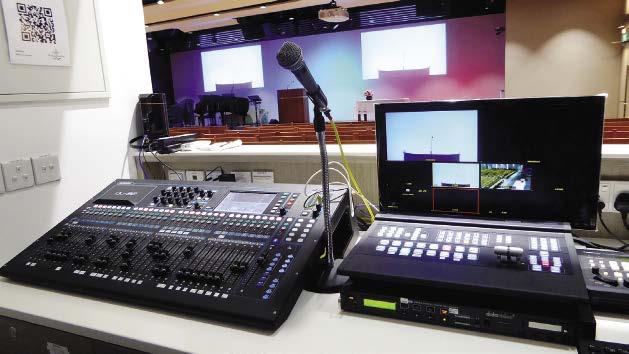
Dual Furman CN3600SE sequencers provide orderly power-up and –down and also serve as power conditioners for all the racked equipment. The channel count has been increased with the addition of an AR2412 audio rack and an AR84 I/O expander on stage. Connected to the Qu-32 over Cat-5 cable running the dSNAKE protocol, the AR2412 provides 24 XLR inputs and 12 XLR outputs, with dSNAKE linked control to the remote preamps, for which all mic preamps are scene recallable. A single GLD-AR84 expander connects to the AR2412, whilst a further GLD-AR84 links directly to the GLD-80 surface to add a further 16 XLR inputs and eight XLR outputs between them. The system has been expanded with the addition of eight Allen & Heath ME-1 personal mixers for the musicians to create their own monitor mixes and enabling local control on stage.
The worship leader is heard by the congregation courtesy of two Shure Microflex MX418 goosenecks integrated into the pulpit. The musicians are equipped with various Shure SM57 instrument mics and Sennheiser
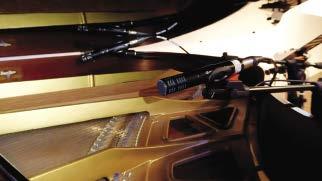
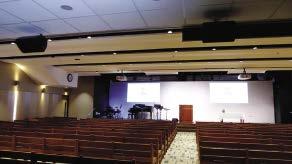

PROJECTS
24 WORSHIP AVL July-August 2017
Stereo pairs of EVF-1152 and EVF-1181 cabinets provide the audio solution
One of four EV ZX190 monitors on stage
The operators’ view of the sanctuary from the rear control room
The rear overflow room is reinforced with four ceiling mounted EV ZX190
Two Sennheiser e914 mics are located on the Kawai grand piano
evolution models, including three e914s on the Kawai piano and e845 models for the singers. Two channels of Sennheiser e100 receivers and transmitters were deemed adequate for the current wireless setup.
Incorporating video
The visual content in the second-floor sanctuary has been enhanced courtesy of a new system that is also capable of transmitting services to the chapel, cry room and office when required. Two Panasonic AW-H60 PTZ HD cameras together with a single AW-H2 HD compact model are operated from an RMC-190 remote camera controller.
The video operator presides at the controls of the Datavideo SE2200 6-channel video switcher in the control room, which receives three of its inputs from Panasonic HD H-60 and AW-H2 HD compact video cameras –controlled from an AW-RP-50 remote controller – that have been fixed to the rear and front walls. In addition, Blu-ray and PC inputs are also added to the video mix to display content, which can be analysed from a PC monitor for which the resultant HD images are displayed from two main L-R 9,200 ANSI lumens Epson EB Z9900 projectors onto the rear wall either side of the altar. A Datavideo HDR-70 HD/SD 320GB video recorder has
been added as an output allowing the services to be recorded for members of the congregation unable to make one of the three services. An Epson 585W Ultra short throw projector has been added as an assistive visual aid in the rear room.
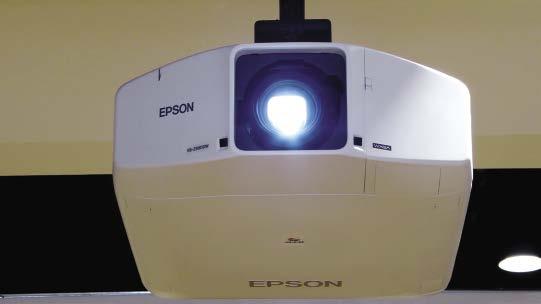

A simple lighting solution has been added to two lighting bars in the ceiling whose fixtures are controlled from a Magic Q interface in a rear control room PC.
Final word
Following the almost two-year exodus at the Hebron Yew Tree Presbyterian Church, the Bukit Panjang faithful feel good to be home. Although the
opening ceremony took place in mid-January slightly later than the Christmas deadline that had been hoped for, the combination of Mr Soo’s electro-acoustic consultancy together with PAVE’s dedication and flexibility ultimately delivered a solution that surpassed the client’s expectations.
‘The sanctuary sounds more like an auditorium than a church,’ observes Mr Chan. ‘We didn’t want to lose the essence of Christ or distract from the spoken word, but we have to think ahead as music is becoming an increasing part of the service.’

www.bpgospel.org.sg
www.cogentacoustics.com

www.pave.com.sg
We are driven by a desire to provide and technically guarantee music and sound as a genuine sound experience. This is what each product by Kling & Freitag stands for - or, as we say, 'Passion built in'
PROJECTS
Two Epson EB-Z9900W projectors are output directly to the rear wall
One of the two Epson EB-Z9900W projectors
Kling & Freitag balances passion with precision for uncompromising audio quality and 'German engineering'.
Steering clarity
After suffering unintelligible sermons at St Paul’s Church in Abu Dhabi, one parishioner steered the church towards Crownstar Technology. James Cooke pays a visit


IT IS NOT UNCOMMON FOR
members of a congregation to complain that they are struggling to hear the words of a worship leader or the detail in the music from a worship band or choir. This is seemingly a universal problem that affects churches, mosques and temples the world over. And, it is not a problem exclusive to older houses of worship or those built with a more traditional look. Those that feature a more contemporary architecture also regularly suffer from the same issues that plague their traditional counterparts: large, open spaces with vast reflective surfaces formed of glass, stone or concrete.
Houses of worship are often designed with aesthetics in mind first and

foremost. Good acoustics come later. St Paul’s Church, situated in the Musaffah Industrial Area of Abu Dhabi, is certainly a visually stunning building, providing the desired effect of inspiring its parishioners, bringing them all together into a large, open and circular space. However, with solid curved walls and a balcony at the rear, the acoustics were proving a nightmare. The church had made several attempts to rectify the problem to no avail. At last count, 15 different sound systems had been trialled in an effort to enable the entire congregation to hear what was being said by the parish priest, Father Ani Xavier and his assistant priests.
‘It was one of the parishioners that got in touch with us,’ recalls Laurane Zeta Johnson, manager, business and
operations at Crownstar Technology. ‘They could hear that there was a problem at the church as they couldn’t hear clearly. They knew of our company and asked if we could possibly rectify the issue. We then made contact with the priests.’
The major problem was the echo that reverberates around the entire sanctuary. ‘Listen,’ says Sabu John, managing director of Crownstar Technology, as he claps his hands. The resultant echo lasts for several seconds. ‘After I heard that for the first time, I recalled that the State Mosque of Qatar in Al Khuwair, which has a surface area of almost 20,000m2 over three levels, and capacity for 30,000 worshippers, had experienced similar issues and been installed with a Renkus-Heinz Iconyx solution. The feedback there had been excellent, so I personally visited the mosque to hear it for myself. Afterwards, I contacted Renkus-Heinz directly to find out more as we had never specified their systems before.
‘There are two different service styles here,’ Mr John continues. ‘One is English and the other is Indian, which features the use of a variety of drums and percussion.’
‘They wanted more bass,’ adds Ms Zeta Johnson. ‘Normally in churches you don’t expect heavy bass, but here, the congregation wants it and so the echo really needed to be taken care of.’
‘The sound also couldn’t fully reach
under the balcony,’ Mr John furthers. It’s not a small building, and they want the music loud, but without the echo. They also didn’t want to disturb the interior design with any acoustic treatment.’
With a client specification in hand and thorough research completed, Crownstar designed a simple solution with a main PA comprising two RenkusHeinz Iconyx IC24-16-RN digitally steerable line array loudspeakers. These are flown one per side and complemented by two CF81-2R twoway active loudspeakers, which are located in front of each of the two pulpits and serve as front-fill. The choir, meanwhile, is situated at the front of the audience area on the left-hand side of the sanctuary. To provide the choir with a fold back solution that would not interfere with the members
26 WORSHIP AVL July-August 2017
Two IC24-16-RN speakers form the main PA system
Reflective curved walls and the balcony caused acoustic issues
of the congregation seated directly behind them, Crownstar specified two CF121M-2 two-way monitors, with an additional unit for the priests.

‘Previously the choir only had one speaker,’ explains Mr John. ‘With the CF121M-2 modules we keep the volume low so that it doesn’t hit the congregation behind and the choir can now hear their monitor feed much more clearly. The monitor on stage provided more than enough fold back for the priests.’

Reinforcement was also provided up on the balcony in the form of a pair of Renkus-Heinz’ IC16-RN, which are also digitally steerable line array loudspeakers. With interior design still playing an important role in the church’s presentation, these, along with the main PA and monitoring speakers were all painted white. ‘The speakers were black,’ confirms Ms Zeta Johnson. ‘So to match the décor, we painted them white.’
As St Paul’s had already tried a number of solutions that had proven ineffective when it came to treating the acoustics, Crownstar offered a demonstration of the Renkus-Heinz solution Mr John had found. ‘The demo lasted a whole week and a half,’ says Ms Zeta Johnson. ‘This was to ensure that the priests, church staff and the congregation could gain a
proper opinion and decide if it solved the problem for each type of service they deliver. They provided a positive response and we went ahead with the design and installation.’ There was even some competition: ‘Another integrator held a demo with speakers from another major manufacturer to compare with our demo,’ notes Mr John.
Given the full go-ahead, Crownstar completed the permanent installation. The steerable technology of the Iconyx systems solved the issues relating to intelligibility and reverberation without the need for acoustic treatment, as per the church’s wishes. ‘We didn’t need to do any acoustic panelling here in the end,’ says Ms Zeta Johnson.

‘During our research we found that in this type of building, these speakers will work and they have. Now it is very clear and the congregation can understand the priest.’
The installation was completed in two phases, with an engineer from Renkus-Heinz joining the Crownstar team to provide assistance. Set up was completed first for the main PA, front-fills and monitors on the ground floor, while the second stage saw the installation of the system on the balcony. The previous system was networked with control provided by a Yamaha mixer.
Mr John, together with sound engineer George CJ, built upon this by connecting the entire setup using Cat-5
Arrayable Point Source
cable. This means that whereas the church’s A/V technician once had to run up and down from the balcony to control the system up there separately from that downstairs, he is now able to manage everything from one position. Members of the choir, meanwhile, have their own mixer.
Following the installation the church expressed its happiness, as the entire congregation can now hear the message intelligibly. ‘It is a beautiful and quality sound system and it reaches all of the people,’ enthuses Father Ani Xavier. ‘We are thankful to Crownstar for their wonderful service and a good job.’
And the story doesn’t end there for Crownstar and St Paul’s, as the church is now looking into upgrading the audio solution inside its smaller, egg-shaped sanctuary next door from its main venue. ‘It’s very echoey and they want the Renkus-Heinz solution to add clarity when the budget allows for it,’ says Mr John. ‘A pair of Iconyx columns with its steerable technology will be enough and helps to keep to the budget.
‘After the success of this project, I have also been in contact with an Islamic centre in Dubai,’ he adds.
www.crownstaronline.com
www.renkus-heinz.com
www.stpaulsabudhabi.org
PROJECTS July-August 2017 WORSHIP AVL 27
The volume is kept low on the CF121M-2 monitors
A pair of CF81-2Rs provide front-fill
The new Coda Audio APS combines the userfriendliness of a point source with the perfect arrayability of a line array creating a unique category reinforcement system.
ONE for ALL
The most flexible solution for medium size applications
Sonic new life
Richard Lawn learns
for Evangel Family Church
SINCE OPENING
ITS DOORS
IN December 2002, the Evangel Family Church in Singapore’s Yishun neighbourhood has shied away from upgrading the audio system in its main 1,400 capacity sanctuary called Promise. Indeed, the Kling & Freitag FOH L-C-R loudspeaker and monitoring systems continue to be fully functional during the Sunday gatherings. Not only do prospective HOW audio upgrades place pressure on limited budgets, but it can be additionally off-putting that system modifications must be performed in just five to six days between Sunday services. However, a phased upgrade was agreed upon in 2016, including a new digital audio control surface and wireless microphone solution.


Following 14 years of faithful service, the Soundcraft K3 console performing FOH and monitor mixing at the FOH production area was finally retired from service. ‘We finally decided to make the overdue switch to digital!’ confirmed lead pastor Dale Lim. The opportunity to audition a digital console occurred when a touring worship band from California visited the church in late 2015. ‘The K3 couldn’t handle the amount of channels the act required for their production. Fortunately, Munique LLC’s Dominic Koh kindly provided us with an SSL Live L500 Plus console for the Friday night performance in addition to the weekend services –we were greatly impressed.’
In his role as system consultant, Mr Koh had made himself known to the Evangel Family Church in 2014, having designed and supplied a Clair Brothers KiT loudspeaker system for the fourth level Providence Chapel that is used for youth services. ‘Some of our volunteer technicians had already familiarised themselves with a digital audio console interface having used a Yamaha QL series console in Providence,’ furthers technology director Adeline Soh. ‘I’m quite an audio novice and when I started on the SSL Live I have to say that I found it more intuitive than I imagined.’ Since its introduction in 2013, the SSL Live L500 has allowed the

British manufacturer to successfully penetrate the touring, installation, theatre and HOW markets. These sectors had been alien to it as a renowned supplier of consoles for high performance recording, broadcast and postproduction. ‘By bringing SSL’s Studio grade mic pre’s to the live stage, their outstanding audio conversion, 96kHz operation and magnificent summing can be appreciated by a much wider audience today,’ furthers Mr Koh. ‘In addition to the technical team, some members of the congregation at Evangel Family Church recognised the definition and detail in the instrumentation together with clarity in the vocal mix when they switched to the L500 during that trial Sunday service.’
Following training provided by SSL Asia’s Michael Chan, the church technicians now easily navigate the console’s ergonomic layout to mix with a combination of multi-touch screen control with assignable hardware controls. ‘The use of colour-coding and the open architecture lets our volunteers configure the console layout to suit their own way of working,’ adds Mr Koh. ‘They can patch, copy and drag, shape the EQ and add filters where needed quickly as they have a clear view of everything.’
Despite being advised to acquire the smaller L300 model by Mr Koh, the Evangel church technical team was adamant that the larger L500 Plus would provide them with ample futureproofing, as Mr Koh explains:
‘Both consoles use the same remote I/O, and audio conversion, but the main touch screens are different and there are 256 paths and three fader tiles as opposed to 192 and two respectively. But they have still only scratched the surface as we’re enjoying the quality of the audio. The L500 Plus is an analogue console in disguise but it comes with a digital workflow. There’s a patch that will allow us Dante networking for recording if and when we require and should we add an SD card, we can also perform a virtual sound check, although we haven’t to date.’
The current audio upgrade was completed with the addition of nine channels of Sennheiser ew500 G3 wireless handheld transmitters and

receivers. The wireless operation can be managed and configured from a laptop at FOH equipped with Wireless System Manager (WSM) software. ‘The software provides our technicians with a great overview of all the parameters such as changing frequencies and battery power indicators.’ The digital audio world may have come slightly behind schedule for the skilled technicians at the Evangel Family Church, but they are certainly making up for lost time and enjoying the many features and benefits associated with the new technologies.
www.evangel.org.sg
www.ssl-sg.com
PROJECTS
28 WORSHIP AVL July-August 2017
After avoiding audio updates because of potential disruption,
improved clarity and flexibility were worth the effort
Installed in 2002, a Kling & Freitag PA and monitoring speaker system continues to function well
Munique LLC’s Dominic Koh with Dale Lim and Adeline Soh from Evangel Family Church together with Anthony Gofton and Malcolm Chan from SSL
Nine channels of Sennheiser ew500 G3 receivers now adorn the FOH rack
The SSL Live L500 is used to mix all FOH and monitor inputs in the main sanctuary
The Music Begins Here

7,000 + Brands | Worship Education | System Showcase | Demos | Community Events
Elevate Your Worship Experience
As the crossroads of music, sound and event technology, The NAMM Show unites a global community of professionals, creating the ultimate platform to review the latest products, discover new ideas and connect with your community.
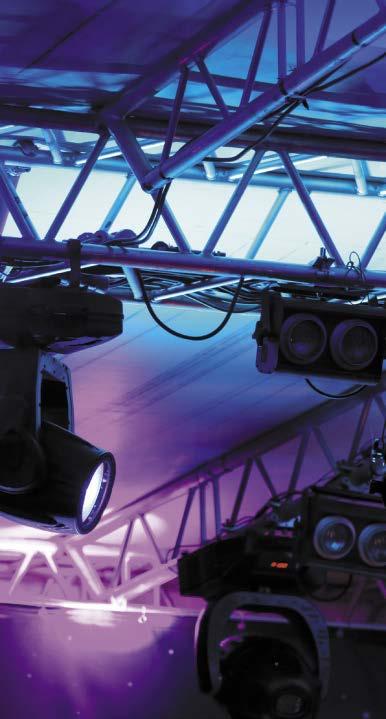

Learn more about the benefits of attending namm.org/howlive
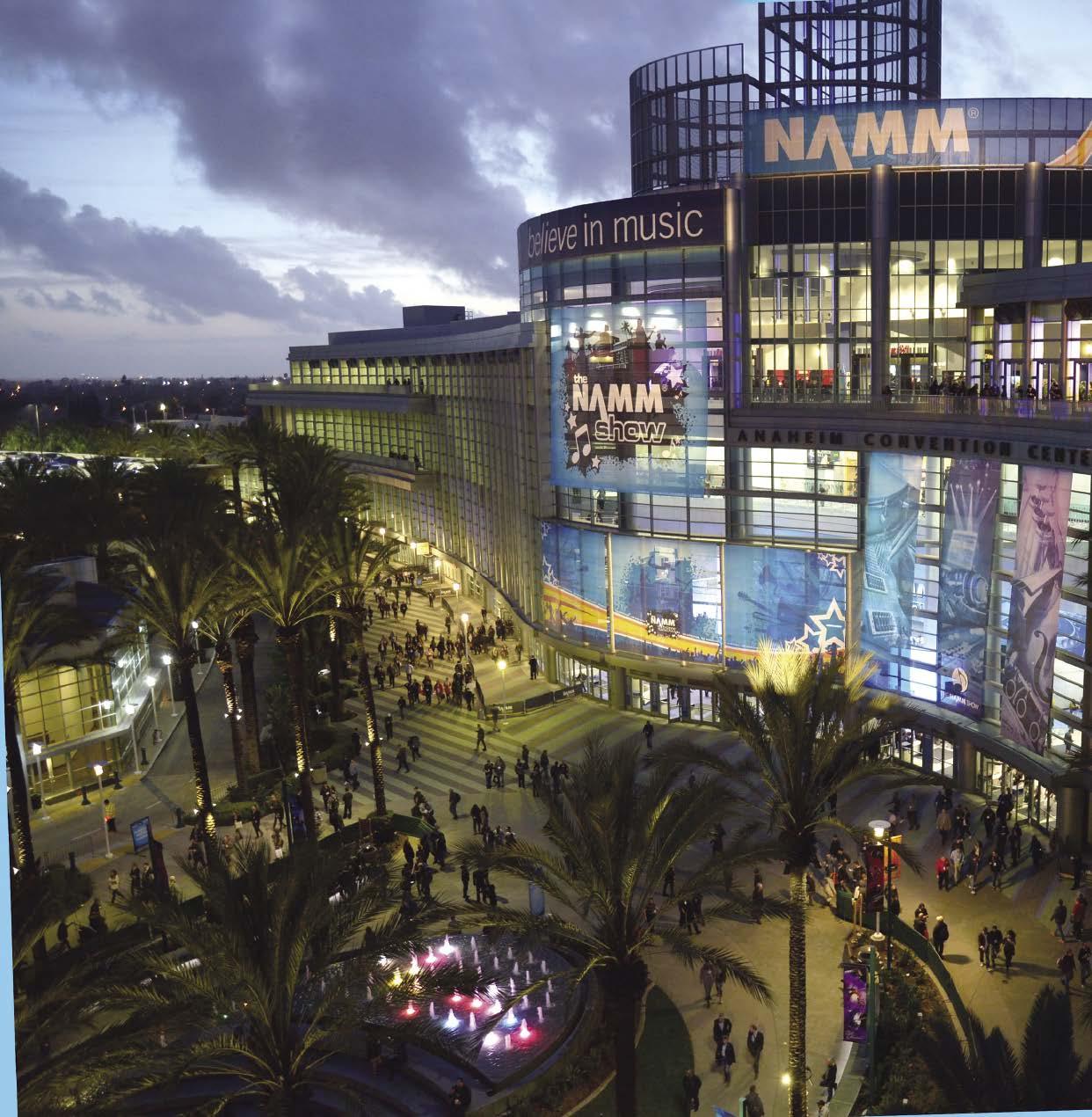
Recording the message
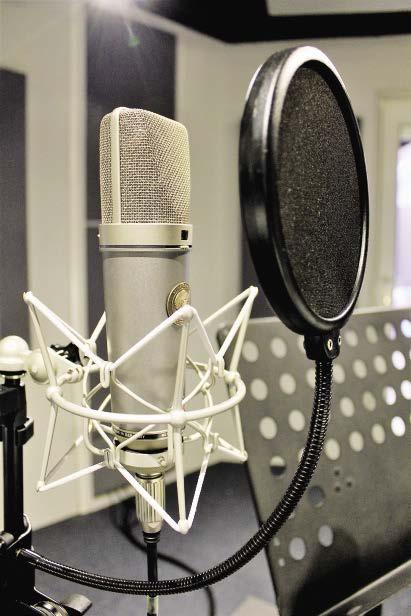
IT MAY HAVE TAKEN THREE YEARS from the point that Calvary Convention Centre (CCC) first blipped on Google Earth to opening its own recording studio, but the wait appears to have been worth it. Nine years in the making, the six-storey convention centre dedicates itself to the pursuit of holistic activities for which a 5,000-seat auditorium lies at the nucleus. Having dedicated a fraction of its 56,500m2 space to such a purpose-built facility in 2011, it now attracts touring bands, local artists and producers to its bright, spacious, digital, inspirational underground inner sanctum.
Built by Calvary Church, the facilities within the CCC multiplex host international, regional and national conventions in addition to banquets, seminars, musical and creative arts productions, whilst providing religious educational and vocational training. Having opened in late 2016, the booking diary for the lower-level digital studio is starting to fill. The church previously used Ark Studios to produce its recordings and enjoyed the ambience there so much that it had little hesitancy in appointing its owner, Nicholas Lee, to design its own space.
As studio manager Joshua Indran provides Worship AVL with a guided tour of the clean, bright facilities, he explains the significance of Mr Lee’s role. ‘He has vast studio recording experience having spent 10 years in the US and 10 years in Malaysia working in recording environments. His design brief was to maximise the appeal of this studio both to local and international artists including travelling musicians.’

Entering the control room, the minimalist features are a stark reminder that the analogue age has been abandoned in favour of Avid’s Pro Tools 12. ‘We decided to adopt a Pro Tools system with an HDX system for recording,’ Mr Indran elaborates. ‘But we have also added an Audient ASP880 mic pre and a couple of Presonus RC500 channel strips to fatten up the sound when required. The ASP880 sounds great on the

percussion instruments and drums. A Slate Raven MTI sits in the middle for monitoring and Pro Tools control. For critical listening, we are using a Coleman Audio M3PK MkII monitor controller with Focal CMS80 near field monitors resting on IsoAcoustic mounts.’

The 60m2 tracking room can be dimmed or brightly illuminated from LED fixtures placed on an overhead lighting truss. To date, a 30-piece Chinese orchestra and a choir of 50 have recorded from here without having to remove the drums and percussion. The laminated floor is equally bright and is offset by contrasting walls, with an irregular, grey stone surface acting as a defractor around the window into the control room. An adjacent wall is adorned in wood defractors, whilst nine 2m high x 1m wide acoustic panels have been added to the remaining two walls.
‘The 4m ceiling is open with pipes and air conditioning above, but we couldn’t close it as it would further decrease the height,’ explains Mr Indran. ‘Owing to budget constraints, we could not afford to completely
PROJECTS
30 WORSHIP AVL July-August 2017
HOWs can develop significant technical prowess in the pursuit of their mission, sometimes through ancillary applications. For Kuala Lumpur’s, Calvary Church, Richard Lawn finds such in evidence in its new recording space
(Clockwise): The studio’s Neumann TLM687 pair are among the favoured mics; Studio manager Joshua Indran at the Slate Raven MTI Pro Tools controller in the studio control room; A drummer’s view of the tracking studio and through into the control room
Avid I/O with Audient mic pres and Furman power control and conditioning
soundproof the space and as a result the RT time is around 0.6. But that has worked in our favour as we wanted to retain a slightly live ambience. Sometimes we add carpets to deaden the acoustics further, however.’

Installed by Sonica, Mr Lee ensured that the cabling infrastructure between the tracking and control rooms was isolated. Video capabilities have been added for which Cat-6e, RGB, HDMI and SDI cabling has been inserted into conduits. A 16-channel analogue snake connects the stage box and the microphone inputs between the rooms, but that number can be doubled to 32 when required. The cabling interfacing the control room also shares a space with MADI optical tie-lines entering from the DiGiCo SD8 console in the FOH position of the sanctuary above.

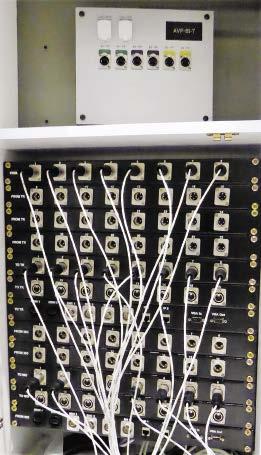

Mr Indran can produce live recordings in Pro Tools when required, whilst Dante capabilities have also been integrated into the design.




Guide vocals or individual tracks can be recorded in the 20m2 Iso-room, which has sufficient space to place a full drum kit when required. A selection of microphones are available, from which the drums are furnished with AKG C100s on the overheads with Shure Beta 98s on the toms, SM57s on the snare and an SM81 on the hi-hat. In addition to AKG C3000 condensers and D112 dynamics, a pair of Neumann TLM687 models is available for vocals and voiceovers.




‘The Neumanns are my favourite, and I use them for high-end vocals, acoustic works, Chinese orchestras and some percussion. We can also use any of the many mics above in the sanctuary when needs be.’


Mr Lee’s design of a space with appeal to a wide range of users has so far ensured that no two days have














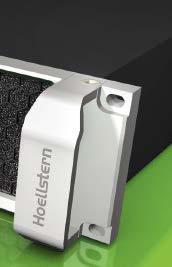



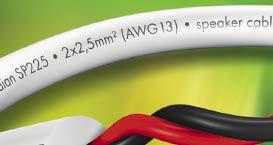


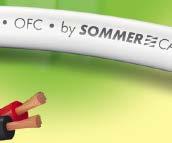






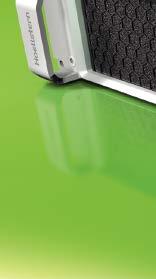


remained the same for Mr Indran. ‘Many commercial studios appeal to a certain genre, but that was never our intention here,’ the studio manager shares. ‘Since we initially set out to encourage Christian musicians, we evolved quickly and now draw a wide range of musical genres in addition to videographers and voice over recordists for audio books to come and use. It’s particularly pleasing when you see the expressions of the young school musicians who have never set foot in a studio before. When they come down here, you can see that they are inspired to play better. Every month the church books a session for its students and they create Missions interviews, rehearse songs for special occasions such as Mothers’ Day and also record songs. We’re having a lot of fun.’

www.calvaryconventioncentre.com July-August 2017 WORSHIP AVL 31 1/2 Vert
www.calvarystudio.my
Monitoring control by Coleman
Ceiling Speakers 100 V or 4 Ω / Cert. EN54-24 Sophisticated power amplifier –solutions of superior quality and flexibility. 475 speaker presets of 37 DSP-controllers offer the most possible flexibility. Bulk cables Cables in different colours – especially white: >> Microphone cables
Flat Speaker cables
Instrument cables
Video cables Media installation systems Just concentrate on worship ... Inconspicuous installation with SOMMER CABLE Orlando, USA June 14 – 16, 2017 Booth 5470 SOMMER CABLE GmbH Audio Video Broadcast Multimedia HiFi info@sommercable.com www.sommercable.com ORDER YOUR COST FREE CATALOGUE !
The tracking studio’s junction box of interconnections
>>
>>
>>
Serving the masses
Covering almost 10,000m2, the newly opened Tianhe Church is now the largest house of worship in Guangzhou. Sue Su takes a look around
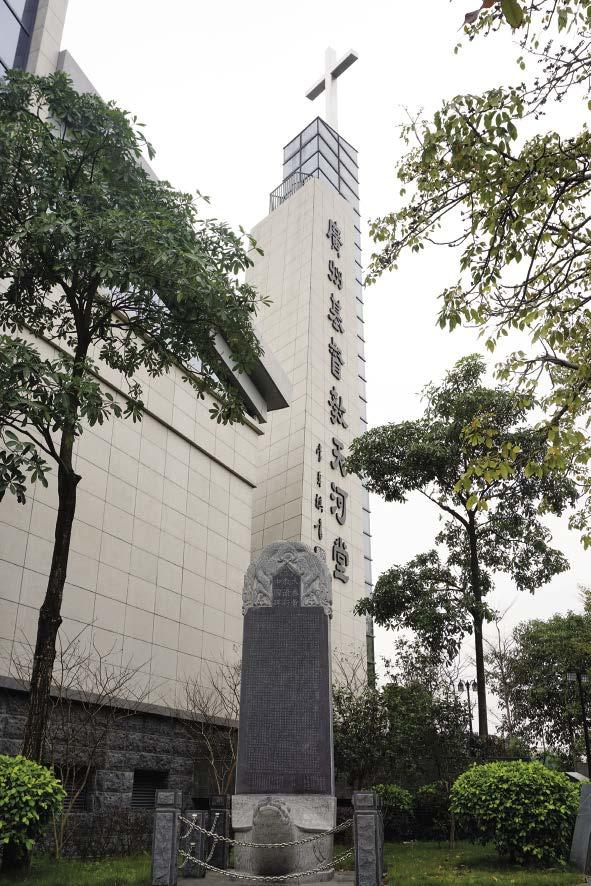
THERE ARE AROUND 370,000 in the Guangdong Province. The region’s capital, Guangzhou was in need of a modern church. The Guangzhou Christian organisation, with the help of the government, started planning the construction of the Christian Church of Guangzhou Tianhe (Tianhe Church) in 2004. Construction wouldn’t begin until 2009 and another eight years passed before the now third largest church in China officially opened in early 2017. With a floor area of 8,830m2 and a total architectural footprint of 9,970m2 , the sanctuary includes the main hall, a baptistery, a belfry, a training building, which serves as a multifunctional space, and a separate administrative building. Such a large project drew in the support of several Christian organisations, including some from overseas, as well as Hong Kong-based systems integrator Jolly Pro Audio.
Jolly Pro Audio’s director, Andy Leung, is the nephew of a pastor who served as chairman of The Committee of the Three-Self Patriotic Movement of the Protestant Churches and the Christian Council of Guangzhou.
‘About six years ago, my uncle told me that Guangzhou was going to build a new church,’ recalls Mr Leung. ‘He knew I was familiar with the A/V systems of churches, so he asked me to provide some free consultancy for Pastor Feng Hao, who was one of the people in charge of the project. Unfortunately, my uncle passed away, but I kept in touch with the organisation and as I had been involved in the project from early on, I was already familiar with the venue so they hired me to provide a turnkey solution for the whole system from consultancy to installation.’
Mr Leung possesses almost four decades of experience in the A/V industry. He has completed several A/V renovation projects for churches in Hong Kong, but had never worked on one from the construction phase or one so large. ‘Churches in Hong Kong are relatively smaller,’ he notes. ‘As this is the first church I have been engaged with during construction, I was very clear about the acoustic design.’
Jolly Pro Audio designed a sound reinforcement solution for the main hall and baptistery comprising of loudspeakers from Fohhn Audio. In

the main hall, which accommodates 2,500 visitors, four white Linea LX-501 loudspeakers form the main PA system, tasked with providing sound coverage at ground level and in the gallery. These are installed on either side of the stage area where, due to the room’s tall stained glass windows, they are said to be unobtrusive. At the edge of the stage, four Arc AT-601 systems are used as nearfield speakers. On festive occasions, these are concealed behind floral arrangements. In contrast, four AS-40 subwoofers have been rendered permanently invisible by being integrated into the front of the stage. Serving as delays beneath the gallery are four AT-061 systems, while a pair of AT-05s deliver side-fill. The manufacturer’s Chinese distributor, Guangzhou Shoushan Audio Equipment, provided assistance
‘This church does not have many bustling performances and it’s mainly used for preaching, so intelligibility is most important,’ explains Mr Leung. ‘I have used Fohhn before and think they have excellent intelligibility. Many people doubted whether the Fohhn speakers would be able to cover the whole area at the beginning, as they are so small. We used EASE Focus to predict the acoustic measurements at the end of the project and this showed us that it would reach more than 90dB SPL. Also the slim shape and white colour of the cabinets are a perfect match for the church’s decoration.’ Complementing the Fohhn setup on the lows are a pair of Renkus-Heinz RFX-18S subwoofers, which have been concealed beneath the podium in the main hall. Audio is further reinforced on the balcony at the rear of the room by two Renkus-Heinx TRX 81/12 speakers hung from the ceiling in an L-R configuration with a centre

PROJECTS
32 WORSHIP AVL July-August 2017
The church is the largest HOW in the province
Four Fohhn AT-061 speakers are installed under the balcony
TRX62H. The choir monitors are two TRX 121-9 enclosures. Completing the loudspeaker setup – which is entirely managed by three Fohhn FC-9 DSP system controllers and a Behringer X32 digital mixer and powered by Crown XLi 2500 amplifiers and Fohhn’s D-4.750 multi-channel and D-2.1500 amplifiers – is a pair of Audio Performance MP 12 portable cabinets.
For vocal capture, Mr Leung selected a Sennheiser ew 100-ENG G3 wireless microphone system. This includes EK 100 G3 adaptive diversity receivers,
enable standard XLR mics to be used wirelessly. A Symetrix Voice Processor 2x two-way mic processor was also integrated. ‘When a line signal enters the X32 console, we can use the Voice Processor 2x to change configurations to recall the preset EQ for different pastors,’ says Mr Leung. ‘Because it uses Wi-Fi to connect we can bring a computer to the podium on the stage and adjust the EQ and dynamic in front of the pastors.’
On the visual side, Tianhe Church required a system to enable the recording of services as well as the ability to playback PowerPoint presentations. The Jolly Pro team supplied three Doteck O4 HD cameras, an EverFocus EQH5102 1080p mini

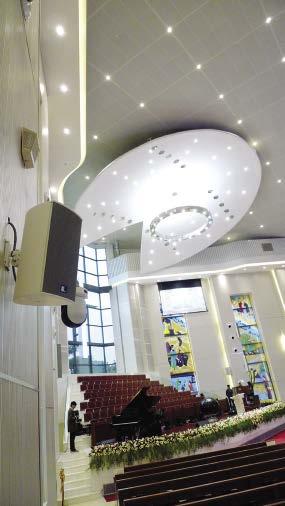
distributed via a Blackmagic Atem Production Studio 4K 4x4 matrix switcher to both the main hall and the baptistery. The output in the main hall is delivered by a pair of Vivitek projectors, which fill the 170-inch screens either side of the stage. ‘We wanted to install LED displays, but they would block the beautiful coloured glass windows,’ says Mr Leung. So we used elevated screens instead.’ An LED monitor has also been set up on the stage as a prompt for the pastors. Meanwhile, the baptistery, which accommodates 500 people and is used for weddings as well as baptisms, has been fitted with a scaled down version of the Fohhn PA system in the main hall. There is a piano to provide the background music for such ceremonies and this is captured and reinforced by a Countryman microphone. Control is

courtesy of a Yamaha console.
The installation process wasn’t without its challenges, particularly when it came to also keeping the decorator happy. ‘The contractor knew how to decorate very well, but isn’t well versed in A/V systems, so it took us a lot of time to communicate,’ Mr Leung reflects. ‘Also something unpleasant happened during the Chinese New Year. The cables were cut and stolen from the site. We had to buy new cables, but as time was too tight, we could not do the wiring again and had to splice in some connectors. This is the only thing I regret about the project but it couldn’t be helped and compromises had to be made.’
That compromise did not affect the quality of the system though. The church invited Professor Zhou Xitao from the Acousto-optical Technology Research Institute of the University of Guangzhou to compile the acceptance report. In the final report, 99.9% of the system meet the highest national standards. More importantly, all of the pastors, as well as those visiting from around China and Hong Kong, praised the system as sounding and looking very good throughout the large space.
www.fohhn.com
www.jollyproaudio.com.hk www.renkus-heinz.com

PROJECTS
The Countryman mic at the piano
The LX-501 main PA
BSS Training – BSS 101 Dubai, UAE
GSL Professional is hosting BSS training in Dubai. The seminar will cover the HiQnet Audio Architect Introductory (AA100) and BSS Audio Soundweb London 101 courses, as well as the software that allows you to design and control a full system solution.
www.gslprofessional.com
19-20 JULY
School of Emerging Technologies 4K Bangalore, India
This course explores how to anticipate, correct for, and design to the challenges of 4K (also known as Ultra HD or UHD) video distribution. You will learn how to design systems that incorporate the full range of digital technologies available to achieve optimal images using video signal processors transmitted over varying distance.
www.extron.com
AUGUST 2018
MA Intermediate Training South Africa
DWR Distribution is travelling to Cape Town, Johannesburg and Durban throughout August to conduct intermediate training on MA Lighting systems. The first stop is Cape Town from 15 to 17 August, the Johannesburg 22 to 24 and Durban from 29 to 31.
www.dwrdistribution.co.za
Summer NAMM sessions put emphasis on worship
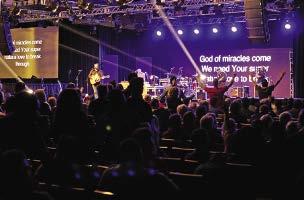
WORLD: Having put a focus on live sound applications with the Tec Tracks Live Sound Day at NAMM 2017, the National Association of Music Merchants is tailoring this to the house of worship market for the upcoming 2017 Summer NAMM and 2018 NAMM Show. The day aims to unite live sound, pro audio, lighting and event technology communities, with attendees benefitting from new ideas, tips and strategies for houses of worship to create a production worthy of their messages.
Each show will include a full curriculum of the latest in live sound through the TEC Tracks programme, with speakers exploring topics including acoustical considerations, steerable sound, and Audinate’s Dante certification training.
The Female Voice – On Stage and in the Studio
Chuck Ainlay
In this first-of-its-kind panel, experts in the studio and stage presentation of female singers discuss how they work with singers and audio technology to bring out their best qualities.
Sound Check Decisions: Critical Listening
Mark Frink
An examination of the role of the sound check and critical listening in making decisions affecting the sound of individual inputs and their contribution to the overall mix.
Taking place in Nashville, Tennessee, 2017 Summer NAMM will offer a range of educational sessions aimed at helping houses of worship.
The association notes that ‘internationally acclaimed worship bands like Hillsong United, Elevation Worship and Bethel Music have challenged the notion of what worship should sound like, feel like and look like.’ The Summer NAMM sessions will therefore explore real word examples across several topics, These include:
Dante Benefits and Applications
Mark Frink
This session looks at how digital network interconnections save time, money and keep the mix in the digital domain; transformerless input sharing for multi-console applications; and integrated multitrack recording and playback for virtual sound checks. Dante Certification training hosted by
Audinate will also be held on Friday and Saturday during the show.
In-Ear Monitoring Fundamentals and Safe Sound
Mark Frink
In-ear monitors provide many benefits, but there’s no guarantee they can save performers’ hearing. This discussion examines the physiology of hearing and fundamentals of in-ear monitoring that can help with hearing conservation.
Women in Audio Sound Off!
Laura B Whitmore and Electronic Musician Magazine
This session features a panel of audio pros that disrupt gender norms. Why have they been successful? What have been their biggest challenges? And what can we as an industry do to encourage more women to join the ranks of audio professionals? This dynamic panel gives insight into these questions and more! Hosted by Electronic Musician magazine and moderated by Laura B Whitmore of the Women’s International Music Network.
The Association is also promising the biggest and best ever 2017 NAMM Show when it returns to Anaheim in January, with the return of the Yamaha Night of Worship together with musician’s chapel services and new tactics to take your worship services to the next level. www.namm.org

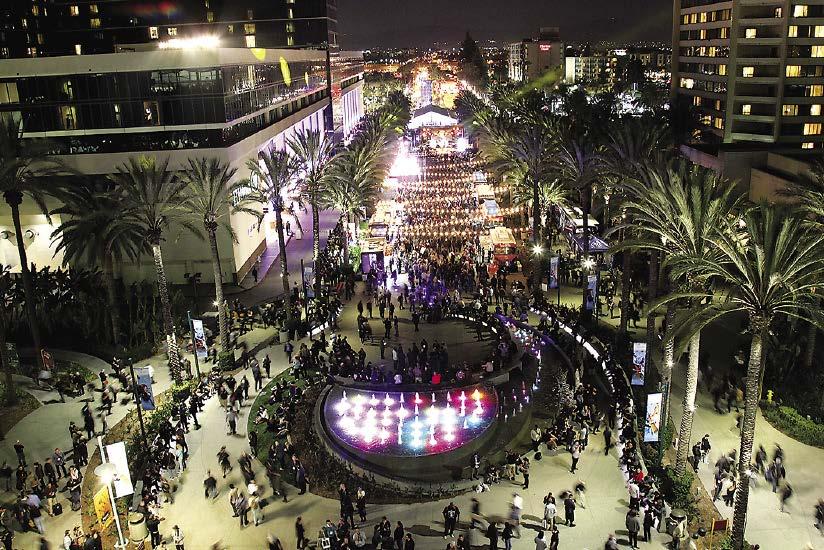
34 WORSHIP AVL July-August 2017 18 JULY
EDUCATION
SEMINAR DIARY
Night of Worship at The NAMM Show
HOW NAMM Show


Staging a worship band for better sound
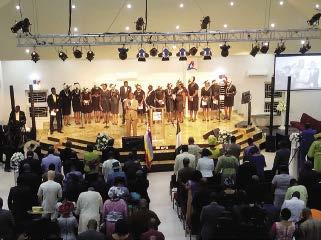
offers Gordon Moore
IN
PAST COLUMNS, WE
HAVE discussed the technologies required for good sound in a worship setting. In this column, we will discuss the actual placement or staging of the band for effective performances.

An effective band is a team of musicians who use both audible and visual clues to interact with each other to raise performance standards and improve quality (production values). Proper placement of the various praise team members can enhance this teamwork.
Maintain a visual line of sight
A very common error (and one I battle against constantly in my own church) is the placement of band members in line. If everyone in the band is in a line or even a series of lines, the musicians cannot see each other easily. If three people are lined up in a row, then the two people at each end will not be able to interact easily

the congregation. The band leader will provide both visual and audible cues for the band.
Rule #1 – Position your band members so they can all see the band leader and each other. The simplest approach to this is to have the leader front and centre where he or she can be seen by every band member. Not every band has the lead vocalist or worship leader as the band leader. In our band, for instance, the leader is the keyboard player. Our lead vocalist (worship leader) leads the congregation in the song and worship but the keyboard player is the actual director. So, we are arranged so everyone can
Some would argue that many choirs are all lined up in rows, why can’t the praise band do the same? The welltrained choir director will arrange his singers so they are grouped according to abilities and parts. The sopranos will be grouped together so they may support each other vocally and maintain unity. The same is applied to the altos, bass singers etc. They are all expected to sing based on the signals of the director/conductor. They need to see only the director. A praise team creates a different style of music and requires different workflow and interaction. The worship leader will be more intent on leading
MEET THE AUTHOR
Audio expert and industry veteran Gordon Moore is the director of technical ministries at Rio Rancho United Methodist Church in Rio Rancho, New Mexico; vice president of sales for Lectrosonics Inc; senior faculty member for the InfoComm Academy; and was named Educator of the Year for InfoComm in 2000.

see the keyboard position.
Rule # 2 – Try to avoid placing vocalists and musicians in straight lines. Most musicians/vocalists want to be able to face the congregation. Standing in a line, perpendicular to the axis of the room is the natural way to do so. Unfortunately, this also means they are no longer interacting with each other and cannot work with visual cues between each other. This is unnecessary. Placing your vocalist in semi circles, where they can see and hear each other creates an environment good for harmonisation, synchronisation and better musical interaction.
Rule #3 – Place your musicians so they are not struggling against the sound of other similar instruments. Don’t place all your guitarists together, next to each other. If there are two acoustic guitars, they will be hearing each other and having difficulty hearing themselves. Instead, try spacing them in different places on the stage where they can see each other but not necessarily hear each other at equal volumes. Yes, I want to hear the rhythm guitar when I play lead, but not so loudly that I can’t hear myself.
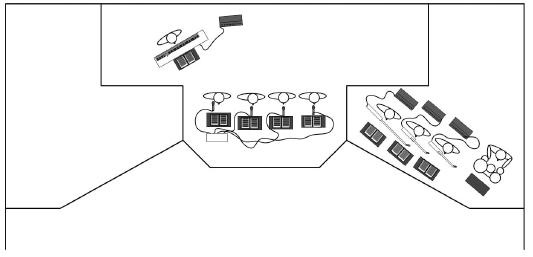
If you are running a quiet stage (using in ear monitors with no stage monitors) this is less of an issue, but an acoustic guitar right next to the keyboard player, or to other instruments with similar frequency responses, can still become a problem.
Rule #4 – Think about directionality of sound from both a microphone and speaker/amp point of view. If you are not running a quiet stage, careful placement of the amplifiers becomes critical. As lead guitarist, I need to hear my instrument. I don’t want to be in the
KnowHOW
36 WORSHIP AVL July-August 2017
How musicians are placed on the worship stage – what they see and what they hear – can work towards or against better sound and performance,
Stage sizes and configurations vary widely between HOWs
Gordon Moore
Messy layout with too many music stands, poor cabling and poor line of sight for musicians















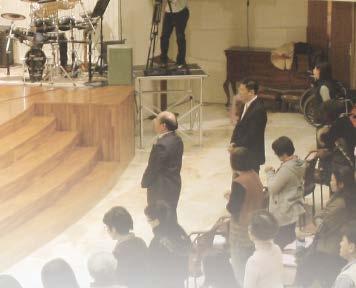






















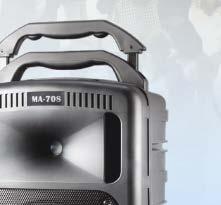







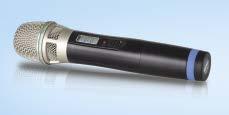




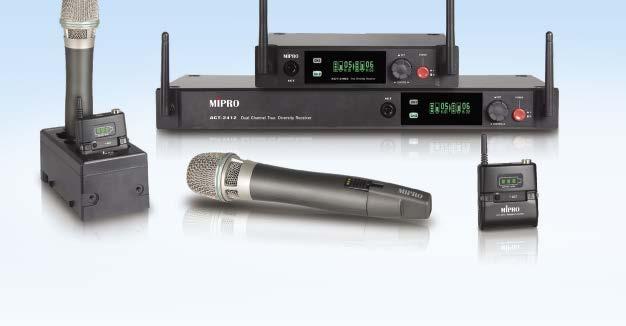







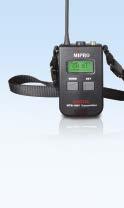








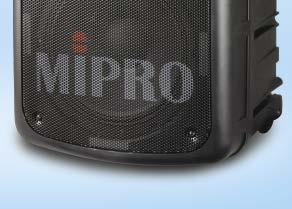
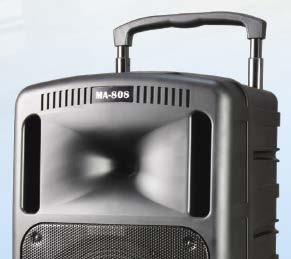































sound field of the keyboard amplifier. Think carefully about the placement of all your microphones. A microphone that is dedicated to a specific source (whether an amplifier, an instrument or a vocalist), should be placed so that it is pointed only at that source. Sight down the axis of the microphone and ask yourself – do I see another possible source that it might pick up? Is that vocalist standing right in front of a guitar amplifier where you are not only capturing the singer, but the instrument as well? This is known as bleed over, where a source of sound not only gets into the microphone intended for that source, but gets picked up by other microphones on the stage.
Selective focus deployed on actors Abstract gobos on a stage floor
is interior or exterior. The use of gobos can suggest whether the scene takes place under the shade of trees, in a city or underwater.
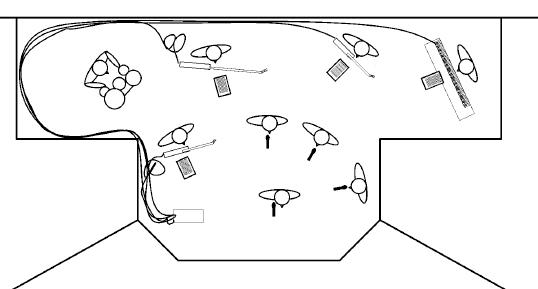
Alternative
with it without damaging the surface (unless it is a poorly painted surface – then it can pull off loose paint). A longer cable run for audio signals that leaves a cleaner stage is preferable to a short cable that can become a trip hazard. Make certain that audio
When approaching lighting for any special event or drama, be sure not to forget that the overarching function and purpose of stage lighting is to support and reinforce the story being told. Again, creating lighting for special events doesn’t have to be expensive. Even if you’re a small facility with a small number of lighting fixtures, there are some tools that you can use to help achieve some of your desired lighting looks.
harp, oboe). You will need more amplification, more gain on the microphones for these quiet sources. The lower the noise floor, the cleaner your mix will be.
facility is equipped with LED-wash fixtures or automated fixtures with colour wheels or CMY-colour mixing, then you already have some tools to easily add colour to your event. If you only have conventional lighting fixtures installed, colour can be achieved by purchasing colour filters, called gels. Gels are transparent pieces of coloured plastic that are added in front of the lights, forcing the light beam to pass through. Gels are inexpensive and can be purchased in almost any colour you can imagine.
visit www.mymixaudio.com/how for more info

Using colour
Coloured lighting can be achieved in a couple of different ways. If your
Plan for quiet spots on the stage, especially if you use onstage amplifiers and monitors. The quiet spots are needed by the quieter musical instruments (flute,


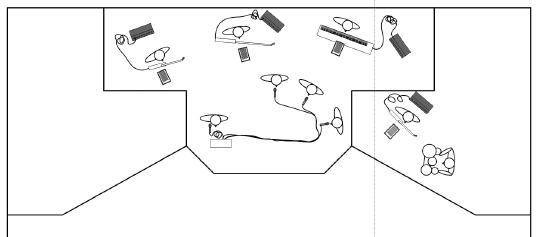
Rule #5 – Clean up your stage. Cables on floors should be neatly organised and taped down with gaffers tape. Avoid the temptation of duct tape, the low-cost tape sold in hardware stores for sealing up heating ducts and waterproofing casings. Duct tape adhesive is gummy, peels loose easily from the backing and leaves behind a sticky mess that can actually ruin hardwood surfaces or carpets. Gaffers tape is stronger and when pulled up, takes all the adhesive
quantity of fixtures. If you don’t, you will need to plan on a set of fixtures (however many it takes to wash your stage) for each colour you are wanting to use as you will be unable to swap out gels during the event. Colour can also be used from the front and side lighting, though in most cases this is subtler than down- or back-lighting. For instance, a subtle cool and warm set of colours can be used in front lights to help reinforce different times of the day or locations where light can be described as being ‘cooler’ or ‘warmer.’
Colour can be used very effectively to assist and influence the audience’s understanding of and reaction to what is being presented. It can be used to indicate literal times of day or whether a scene is inside or outside. It can also be used metaphorically to reinforce or
suggest moods that the actors are feeling, or to evoke particular feelings of the audience members. When using colour, you need to be mindful of the colour(s) used on the set or wardrobes of actors as well. For instance, shining red light on a red jacket will reinforce the red pigment of the jacket, while shining red light on a blue jacket will cause the jacket to appear darker or ‘blacker.’ If you have the opportunity, I would suggest reading up on basic colour theory for lighting applications or test it out before the event happens. In most cases, coloured lighting will come from over the stage as downlighting or back-lighting, depending on the layout of your facility’s lighting grid. If you have access to LED or automated fixtures, you will be able to wash your stage in multiple colours from a small
Using patterns
Often more understated, but just as effective as colour, is the addition of texture in the lighting plan. Texture is created through projecting images
AVL_HoW Campaign-DeliverMusic.indd 2 3/27/15 6:11 AM P37 KHL.indd 1 4/13/15 1:39 PM 59 khl.indd 1 29/1/16 5:27 pm

via breakout cable
· 3 x virtual MIDI I/O via MADI I/O

The LR18 pro-ribbon line-array combines a superb directivity control and throw with a fully intuitive linear response with industry’s lowest distortion. The LR18 enables a 1:1 reproduction of the original sound source, due to Alcons’ multiple-patented pro-ribbon transducer technology.






· 1 x MADI I/O optical
· MIDI I/O over DIN, USB and MADI

· Remote controllable over MADI
· Word Clock I/O with SteadyClock
But don’t take our word for it: The LR18 was recently tested in Germany. Read it on our website.
Corporate Headquarters Asia / Australia: RME Trading Ltd. o ce@rme-trading.hk More Information: www.rme-audio.com KnowHOW

KnowHOW
38 WORSHIP AVL July-August 2017
Better layout. Music stands reduced, cleaned up cabling, vocal line is curved, all musicians can see leader and interact better – the amplifiers service the musicians well but do not impact microphones directly layout, tighter stage presence and wireless microphones to eliminate cable clutter at stage front
MOVEK, Inc. personal monitor mixer Simply. Consistently. Empowering. Deliver
Find out what other Houses of Worship are saying about myMix! Scan this code for more info
©2015
the music:
Dante, MADI, ADAT, analog, mic and line level...
We speak it all!
Scan this code for more info visit www.mymixaudio.com/how for more info ©2015 MOVEK, Inc. personal monitor mixer Simply. Consistently. Empowering. Deliver the music: Dante, MADI, ADAT, analog, mic and line level... We speak it all! AVL_HoW Campaign-DeliverMusic.indd 2 3/27/15 6:11 AM P37 KHL.indd 1 4/13/15 1:39 PM 59 khl.indd 1 29/1/16 5:27 pm · 8 x Mic/Line Preamps (4 x PAD, 4 x Hi-Z switchable) · 2 x Stereo Analog Outputs · 4 x AES/EBU I/O · 1 x ADAT I/O (2 x out S/MUX) · 196 Input / 198 Output channels · 2 x MADI I/O optical · 1 x MADI I/O coaxial · 2 x Analog Mic/Line Preamp Input (XLR/TRS) · 4 x Analog Output (Main XLR + Phones) · 1 x AES/EBU I/O via breakout cable · 1 x MIDI I/O
Find out what other Houses of Worship are saying about myMix!
· USB compliant audio (24 channels)
Man-made Sound
Gobos can be used to add patterns
www.alcons.audio
This is what perfect sound looks like
cabling and data cabling avoid power cables as much as possible – if they must cross, cross perpendicular to each other. Never lay power and signal cables in parallel next to each other. Leave a gap between them of 15cm or more whenever possible.
Eliminate obstructions to the sight lines. This includes music stands whenever possible, and multiple mic stands. Lower the music stands so they don’t block the sightlines to the stage for the congregation. In an ideal world, the musicians have practiced the songs so much they can play without the music. But in many churches, where the musicians are volunteers who work full time jobs and have little time for that level of practice, the music stand is essential. Encourage your musicians to invest in a tablet computer and an application that lets them store their music and read it on screen, eliminating the music stand.
To test your new band layout, simply try playing and singing without amplification – no PA at all. Stage your band so that they can perform strictly acoustically (tell the drummer to play lightly for this test). If they can sing and interact well without PA assist, if they can easily see each other and sound better, then your layout has promise. There is no one way to stage a band and changing the layout occasionally will refresh the experience for the band members. Just follow some simple rules and avoid those straight lines. Be Blessed and mix well.

Captivate your congregation with unsurpassed presentation technology








LiveCore™ series to create a richer worship experience




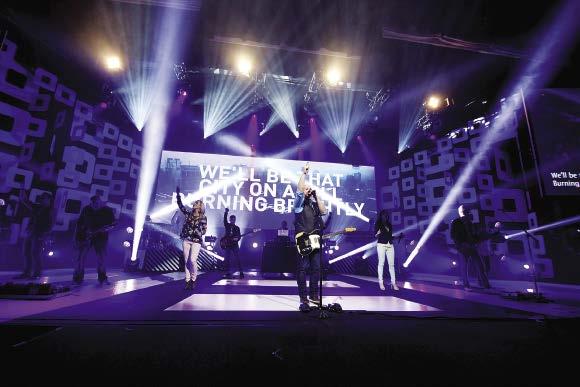

u All-in-one systems for any applications: I-MAG, soft-edge blending, LED walls, multi-location signal routing



u Seamless switching, glitch-free selection and transition between multiple sources: videos, graphics, song lyrics, and presentation files

u Easy to set up and operate: user-friendly Web RCS and app for drag & drop and touch screen management
u Designed to simplify live worship production: full live Preview of all sources (Preview/Mosaic/Monitoring)

Know HOW
July-August 2017 WORSHIP AVL 39 1/2PAGE HORIZONTAL
Layout for a quiet stage (IEM in use). Less clutter, good visibility and interaction
To learn more, connect with us onCourtesy of Genesis Technology
To learn more, connect with us on Analog Way Asia Pacific HQ I +65 6292 5800 I www.analogway.com
Courtesy of Christ Church at Grove Farm
Video streaming networks
Chris Fitzsimmons explores the technical decisions a house of worship needs to make if it is going to establish a streaming network solution


IN THE LAST ISSUE OF WORSHIP AVL we examined the current technologies powering video networks. Following the response we had from readers who were interested in learning more about media streaming, the need for a more in-depth article became apparent.
As a reminder, video streaming over an Ethernet network involves the packetisation of the video signal before it is pumped onto your IT network. Ethernet switches are then used to pass it around the building. Using the same network for your video as for other services means you’re investing once in a technology infrastructure that allows you to do your media content delivery as well as general computer networking and security networking. There are several technical considerations that need to be explored when looking for the appropriate streaming solution for your video network. While there will undoubtedly be further factors to think about, this overview should be a useful place to start.
Bandwidth management
As you are trying to use the same network for a variety of different data, you need to be careful how much bandwidth your video system is taking
MEET THE AUTHOR
Chris Fitzsimmons is a respected A/V technology developer and commentator. He has been part of the product management team at Biamp for four years with a particular focus on the manufacturer’s video systems. Prior to this he was the editor of InAVate magazine for eight years where he wrote about the diverse world of audiovisual technology.
up. Bandwidth management is an important feature of any streaming product, otherwise you don’t get that converged network benefit. It’s all very well replacing HDBaseT with a network for reasons of efficiency but if you’re not able to share that network with other services then what was the point? You’ve exchanged one set of Cat-5 and switches for maybe a slightly cheaper set of Cat-5 and switches but it hasn’t really moved the ball very far forward.
AVB/TSN is Biamp’s preferred protocol and one of the advantages it offers is it handles the bandwidth reservation. When you use AVBenabled switches to create a media network, you’re basically creating a reserved pipe of 75% of the bandwidth for media traffic and then
which becomes more reasonable and it means you can share that network infrastructure. It’s all very well compressing it to 0.95Gb/s, but then you have replaced your dedicated video infrastructure with a dedicated network because you can’t fit anything else on.
Moving up in scale, if you’re doing 4K the bandwidth required is pretty big so you are probably talking about 10Gb/s networking and that can be
one is what’s my present and future expectation of resolution? Because that will really set some markers around bandwidth.
There are products out there, like Biamp’s TesiraLUX, that will make this decision a little simpler because they have two media network ports on the back. If you use a solution that has both 10Gb/s and 1Gb/s media ports, it means you could install it initially on a 1Gb/s media network, but if you
KnowHOW
40 WORSHIP AVL July-August 2017
A suggested networked HOW setup using TesiraLux
Chris Fitzsimmons
felt like in two or three years’ time you were going to upgrade to 10Gb/s networking you could leave the boxes and upgrade the network.
The other piece of the puzzle will be how many displays and sources you need to accommodate. That again plays into bandwidth. Having numerous different streams of content going in different directions obviously loads a switch up more than if there is one piece of content that I’m just putting in other places, because multicast over networks is actually very bandwidth efficient. If I have one player and six displays all playing the same thing then I’m only actually sending one set of content over the switch and then it’s duplicating it out to each display. But if I’ve got three camera angles and some lyrics and a projector and a laptop and everything else, that is actually several different pieces of content. There is some work to be done on calculating the peak load on a switch, but at that point you really want to be engaging your integrator. I would recommend going into those conversations with some education of your own to avoid getting bamboozled by other people, it’s important to know which words to look out for.
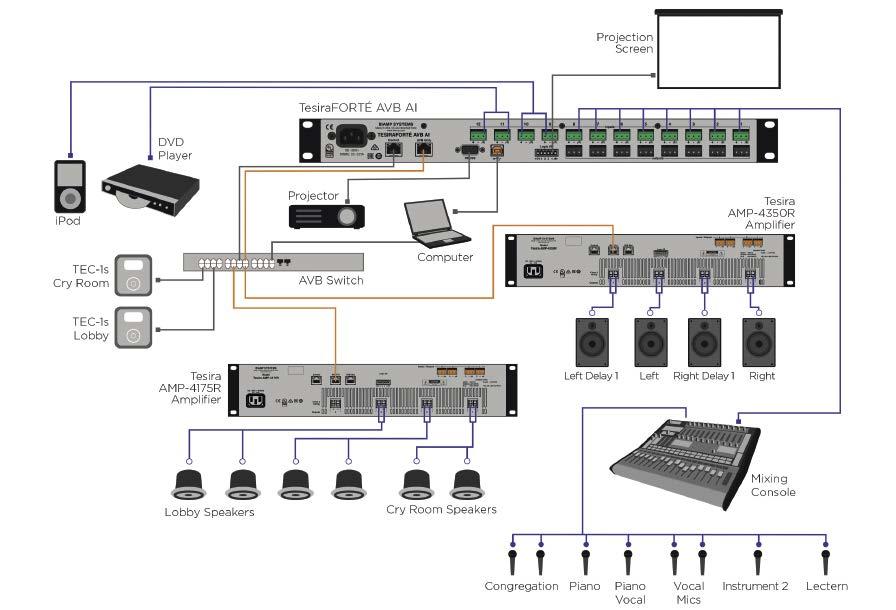
Compression
Of course, you can’t talk about bandwidth management without also exploring the ways you can compress your data. JPEG 2000, Motion JPEG, H.264, H.265 are all codecs for compressing or packetising the video. Lots of people will tell you there is a right way and a wrong way and that one codec is better than another. That’s really not true. There is no best compression codec, there is usually a best choice for a particular application and each of those different encoding methods is going to be suitable for a particular type of content or a particular compression ratio. For example, if you’ve got lots of bandwidth available and you don’t want to compress much, you might choose a different codec over someone who doesn’t have much bandwidth and needs to compress a lot. But those things come with trade-offs. Compressing takes time so if you are worried about latency and lip sync then you might be looking for a faster compression algorithm that may have slightly lower quality. If you’re not worried about that but your bandwidth is really constrained then you might go the other way and look for something very highly compressed but probably takes more time to achieve the same visual quality. It is probably worth
reading some literature on those algorithms or codecs before making the choice.
At Biamp for example, TesiraLUX includes Motion JPEG. We chose that because it produces what we believe to be a very nice balance of quality versus latency versus bandwidth. Because we have bandwidth controls in TesiraLUX we can adjust how much bandwidth it uses. Other people have chosen JPEG 2000, still others have chosen VC-2 which is very low latency but arguably has somewhat lower quality. These are all marginal gains to be honest, especially in something like a house of worship where the viewing distance is typically pretty large – the distance from seat to screen is measured in tens of metres rather than tens of centimetres so you can get away with a bit more lossy processing. You can get away with a few more imperfections in your content at that long distance.
Further considerations
The key to the success of any largescale IT network is the quality of

its switches. There is certainly a temptation in smaller places to look for the cheapest switch, that is very rarely an excellent cost saving. If you want your network to be robust and you don’t want embarrassing technical faults during a service then don’t get the cheapest switch you can buy. That means going to a reputable brand like a Cisco or Extreme Networks rather than the bottom end of the scale. It can look attractive to buy something that is half the cost and I understand that desire, but it rarely results in a good solution. This is very important as your switch is foundational to your system.
It is also important to think about the resolution you actually require. Don’t get fooled into thinking buy bigger is better. It often is, but not when it comes to video resolutions.
As mentioned above, viewing distance is a critical factor. Think about if it’s for a megachurch application where everyone is 15m from the screen or it is for a signage application outside. If you’ve got a breakout room for families with a
screen on the wall so they can follow the service that might speak to a higher resolution because it’s closer, but how much attention are people paying to that in that room? I would caution against over specifying these things. In general, a larer viewing distance will mean lower resolution for a given screen height.
Finally, if you are serious about moving to streaming video then the
integration partner you choose is a vital consideration. If you’re talking about having a real network put in, it’s probably worth engaging with an IT integrator or at least an A/V integrator with some IT chops. It’s probably worth looking at their CV or their credentials and asking if they’ve installed a media network before. It’s not the same as going and putting in HDBaseT or baseband video, it’s a different set of skills, a different troubleshooting process, a different consulting process with the customer. For someone who is probably playing with a very well scrutinised budget it is important that you spend correctly the first time. Identifying the right partner involved is a hugely important piece of that puzzle.
This is not an exhaustive list of considerations, but it should serve as a guide to point you in the right direction. If you think this is the right path for your HOW, I would recommend that you do some further reading to make sure you are in the best position to make the best choice for your facility.
KnowHOW
July-August 2017 WORSHIP AVL 41
An example system design for a 300 capacity house of worship
Blending congregational and stage lighting
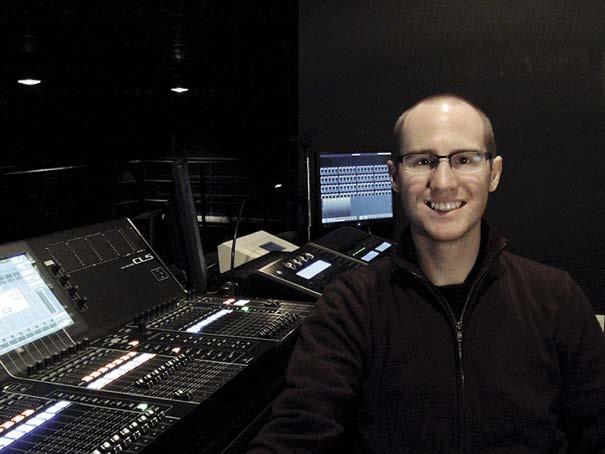
WHEN HAVING A CONVERSATION
about lighting, the vast majority of the conversation – if not the entirety – will be focused on what is seen and used on stage. The discussion will often revolve around the colouring of the stage, lighting subjects adequately for IMAG or broadcast, the ability to achieve certain lighting effects, and the list goes on. Many houses of worship feature auditorium lighting installations that are purely utilitarian, and chances are that using congregational lighting purposefully is nothing more than a far-off dream. In theatre, there is the concept of the ‘fourth wall’ – an invisible barrier that exists between the stage and audience. That barrier often remains unbroken, though there certainly are performances where the fourth wall is broken intentionally, such as when a performer directly references the audience. In film or television, the fourth wall is the camera lens, and as in theatre, can also be intentionally
demanding production environment.
broken. This concept of separation is reinforced visually in that the stage area usually remains lit while the audience area most often is dimmed completely out, as well as the physical separation between audience and a cinema screen or television. In houses of worship, however, the concept of the fourth wall doesn’t necessarily exist. The primary purpose of the service is to help usher congregants towards a spiritual encounter, and attendees participate in the service through singing, prayer,
reflection, giving and more. As such, congregational lighting can be a valuable tool worthy of consideration when constructing, renovating, or upgrading a church auditorium. When used in tandem with the stage lighting, the worship experience can be strongly enhanced. In my experience, there are three specific qualities of
congregational lighting where blending it with stage lighting can be achieved very effectively.
Colour temperature
We all know the difference in our perception and feeling of an environment based on the way that
the location is lit. Hospitals and large warehouse-style facilities are often lit with very cold colour temperature fluorescent tubes. These lamps are inexpensive to purchase and operate, but they feel rather industrial and unwelcoming. Many older houses of worship are also lit this way. By contrast, mall retail stores, cafés, and restaurants are typically lit with warm colour temperature incandescent lamps. Though more expensive to operate, they produce a sense of warmth and are inviting, thereby encouraging customers to stay longer (and buy more!). Many newer houses of worship have warm, inviting congregational lighting fixtures installed.
It is possible to find houses of worship on both sides of the colour temperature coin. Often those with colder lighting are older facilities and many won’t even have dedicated stage lighting installed. In those that do, you will notice the extreme difference between the stage lighting and congregation lighting because most stage lighting fixtures

KnowHOW
42 WORSHIP AVL July-August 2017
Considerations of church lighting are typically stage-centric. John Black looks up from the congregation to find often neglected lighting considerations
Work with fixtures and instruments that use similar colour temperature lamp sources
Make your money go further.

Switchers, routers, conversion, modular, IP, 4K...




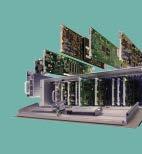


Budget getting away from you?
Every church needs to meet budget - whatever the size of its ministry.
SAM understands.
That’s why we have extended our range with new products that help to make your money go further –without compromising on quality
Regardless of what budget means to you – take a look: www.s-a-m.com/budget
Vega Routing
IQ Modular Infrastructure Kula Live Production KudosPro Conversion
SL Server Range
operate a warm colour-temperature lamp or – if using an LED source – will often simulate the colour temperature of an incandescent source.
Therefore, my first recommendation when trying to blend congregational and stage lighting is to work with fixtures and instruments that use similar colour temperature lamp sources. That way the musicians,

speakers and others on stage will have the same appearance as the congregation when you look around the auditorium. Houses of worship typically want to be warm and welcoming to attendees, so I would recommend staying away from fluorescent or other cold temperature sources. Lighting the auditorium this way will give the entire space a more uniform feel.
Dimming
A worship service will have elements that are communal and others that are personal. There will be portions where a speaker wants to be able to see the congregation clearly, as well as other portions where the service element is highly personal and reflective. Whatever they may be, each of these elements can be enhanced by adjusting both the stage and congregational lighting.
My second recommendation is to
install an auditorium lighting system that is dimmable either on its own, or even better, integrated into the lighting control system. This will allow you to subtly change the overall brightness of the auditorium throughout the service as desired. If the system is installed in zones, you will also gain the ability to isolate portions of the auditorium according to the size of particular events, which can increase the sense of intimacy for smaller numbers of attendees in a large room. Another example is that some houses of worship will dim the congregational lighting during the time of praise and worship. Though this is an active, communal part of a service, it is also highly personal, reflective and a time of personal response, so dimming the congregational lighting can help isolate the worshipper from the distractions of the rest of the congregation. During the message, speakers will often want to connect visually with congregants and see who they are speaking to, so auditorium lighting will be made brighter for that portion of the service. Having the congregational lighting control system integrated with the stage lighting control system will allow transitions between lighting states on
stage and in the congregation to be programmed together and therefore designed together – eliminating the distraction of turning the lights full on and off as with a switching system.

Colour
Colour temperature and dimming capability will be the two simplest considerations when looking to improve the blend of stage and congregational lighting. If renovating or building a new facility, however, you may want to consider the installation of fixtures that allow for colour mixing, such as Chroma-Q Inspire RGBW fixtures. Not only will you be taking advantage of the power savings provided by LED, but you will have the additional benefit of being able to colour-coordinate the congregation lighting with the stage lighting, providing a more immersive environment for congregants. One advantage of colour mixing fixtures is the ability to adjust the colour temperature of the auditorium on an event-by-event basis. If desiring to create a feeling of coldness or warmth, the colour temperature can easily be adjusted through the control system.
Another advantage of these fixtures is the ability to wash the auditorium in an almost infinite number of colours. Recall the effect that colour has on portraying and evoking certain moods and feelings. Do a quick internet search on the psychology of colour, and you will find thousands of resources. I encourage you to read through articles covering the use of coloured lighting in interior design, residential lighting, retail lighting, and other applications to gain some ideas and understanding of how you can effectively integrate colour into your congregational lighting.
With the ability to add colour to the entire auditorium, the congregational seating area becomes an extension of

the stage and, when used effectively, can reinforce the communal aspects of the worship experience and break down the barrier that can sometimes be unintentionally created.
I hope that this has shown how congregational lighting can be intentionally used to enhance the worship service environment and experience, as well as given you some points of consideration when thinking through or planning your congregational lighting. Blending stage and congregational lighting doesn’t have to be a big production, distracting the congregation. When done right, it can be achieved subtly, be emotionally moving, and lead worshippers into a deeper experience.
KnowHOW
44 WORSHIP AVL July-August 2017
Consider the installation of fixtures that allow for colour mixing.
Replacing wall sconce and chandelier lamps with LED fixtures can allow more even and pleasing lighting of the seating area and saved on the electric bill by decreasing waste heat from inefficient incandescent lamps
Install an auditorium lighting system that is dimmable either on its own, or even better, integrated into the lighting control system
Photography courtesy of Barry J Grossman
SMALL VERSATILE LOUD




Active Line Array Series*
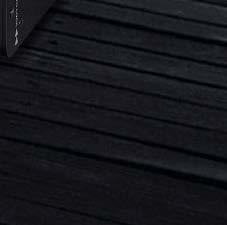

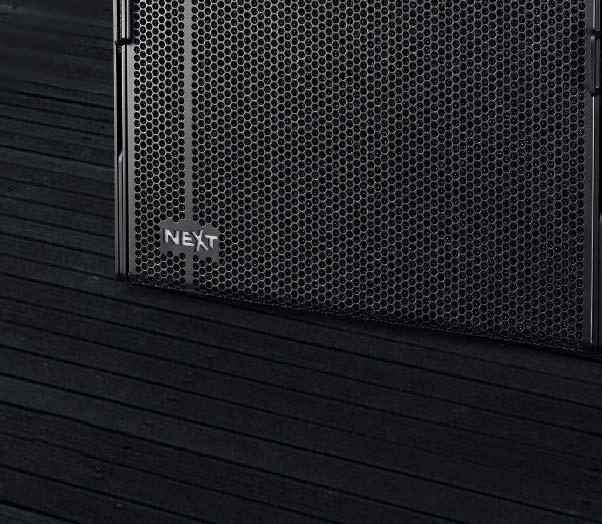
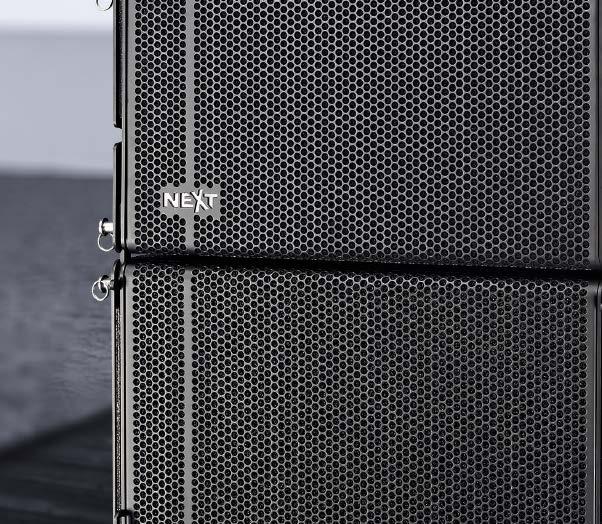

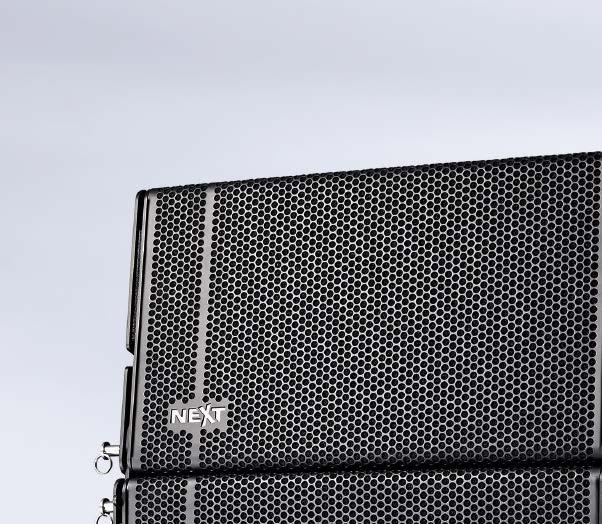
LA122A - Active Line Array Element



2220Wprg 2-Way amplification 135dB max SPL (Full-space)
LAs118A - Active Arrayable Subwoofer

2960Wprg amplification 138.5dB max SPL (Half-space)
* Networkable DSP, control software included


www.next-proaudio.com Designed and Manufactured in Portugal
Networked diagnostics and control

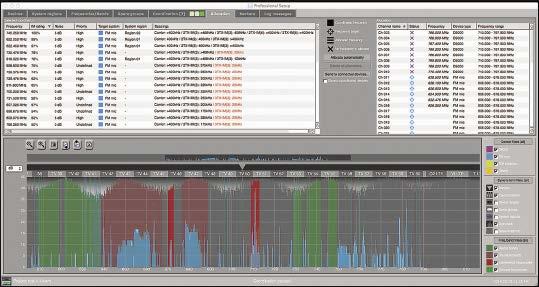
It’s often noted that modern audio and video systems are bordering on IT installations. WAVL explores potential benefits of a networked AVL system control environment
system can still achieve. Identifying elements that have failed allows for efficient maintenance when a system can be lowered or accessed by lift. Video system self-diagnostics might identify a problem tile in an LED panel array. If a faulty display element has to be replaced, smart systems provide the tools to calibrate the replacement element to match the performance of the rest of a system.
It’s become commonplace to operate audio consoles remotely, using a tablet computer, or even a smartphone,
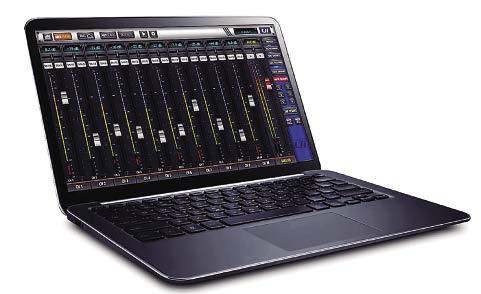
MANY OF THE ARTICLES IN THE Worship AVL Maintenance series are focused on the fine details of tasks like cleaning a fan filter or testing cables. This isn’t one of those. Instead, this article looks at a category of capability that can be applied both in operation and in system status monitoring, diagnosis and troubleshooting, as well as for crisis resolution.
AVL networking has a host of obvious benefits, ranging from connecting a busy console’s worth of audio inputs from a stage to front-of-house over a single Ethernet connection, to as mundane a task as centralised control of a facility’s playback library of video content. Control networks, as a part of
signal strength might be monitored as a function of time, providing insights when drop-outs occur. If such audio level and RF performance criteria are saved as a reviewable log while an engineer walks a stage with an open mic during set up, the log can reveal borderline or problem areas that can be addressed before problems occur. Some microphone transmitters can be turned on and off remotely, either in service to performers, or to correct a situation where a performer or speaker has forgotten to push a button.
content network advanced functionality or run on a parallel system, offer neverbefore-possible operating paradigms and insights into system performance.
Wireless microphone system control software is an example. Along with allowing dynamic, system-wide frequency coordination, information related to system performance is carried on the network. Battery life can be monitored, for instance. Receiver
A DSP-laden line array system with built-in amplification offers another example. Some array cabinets have temperature sensors fitted to monitor loudspeaker stress. System audio can be automatically limited to prevent component damage when conditions are getting critical. In-network status alerts might warn an operator that thermal triggered limiting is imminent, allowing the operator to adjust system performance before automatic protection occurs. Alerts could warn of audio clipping, and inform an operator exactly where in the signal flow the clipping is about to occur. Failure of an individual component in a single cabinet of a loudspeaker array can be difficult to diagnose during a performance or worship service. An intelligent system could recognise the failure of a component or cabinet, flagging the engineer to take action, perhaps by bypassing a cabinet, or by making adjustments to allow for the best performance that a crippled
allowing an engineer to mix or adjust system parameters from anywhere in a venue. But, does the operator even have to be in the venue? Such control is based on running a remote control app on a given device, the device being connected wirelessly to the mixing console. It is possible and normal on many systems to have such remote control available on a local Ethernet network as well as over Wi-Fi. Some systems don’t even require an app, instead running from an HTML
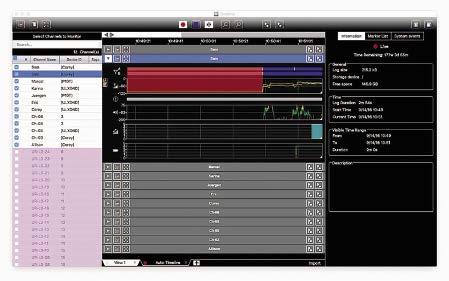
page, the mixer GUI accessed via a web address. Secure and password protected access to some control networks can be shared across the internet, and in turn connected to remotely. Mixing front-of-house from an operator’s living room is hardly practical or prudent, but that doesn’t mean the linkage isn’t useful. Perhaps the lead mixer is at home ill, but could still help in setting up a console for a service when a novice will be running the show. Perhaps in setting up for a special event like a wedding, a new or visiting operator has missed a step or two and is in a panic, with a service about to begin and someone intimately aware of the setup could straighten them out via the web.
Similar scenarios could be played out where an intelligent system is routing and feeding signals, audio and video, around an entire facility. Even with the most carefully designed systems, there can be corner cases where something unique is needed in a hurry. Where control is networked and available to all computers on a network (assuming the operator has the right access credentials), a seasoned operator, or the original system programmer could make the needed changes. Or, overall needs might have changed and a contractor is called upon to reconfigure aspects of a system. In such a case, remote access might preclude the necessity of an onsite visit.
The interconnected world is offering new capabilities. Savvy operators will learn what their gear is capable of, and use those capabilities to their best advantage.
MAINTENANCE
46 WORSHIP AVL July-August 2017
Sennheiser Wireless Systems Manager software’s frequency coordination screen
Functions available for sound system control and monitoring from L-Acoustics’ LA Network Manager
An HTML-based fader control screen from Soundcraft’s Ui-16 digital mixer
The performance monitoring Timeline screen from Shure’s Wireless Workbench














Innovative install solutions. The new TW AUDiO i-Series. www.twaudio.com IN GERMANY COLOGNE | GERMANY Worship_AVL_Template_Full_Page_i-series_Lanxess_05_2017.indd 1 30.05.2017 17:37:40
Loudspeaker component protection







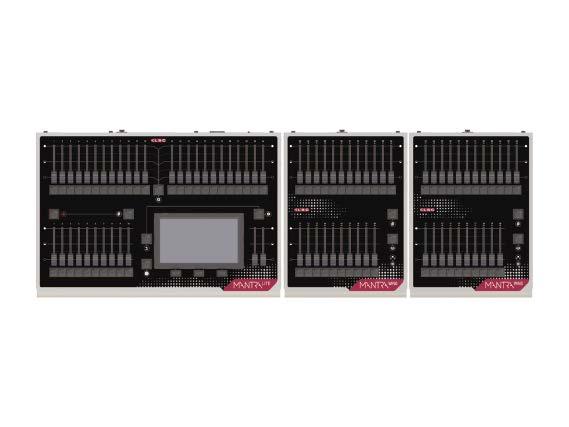

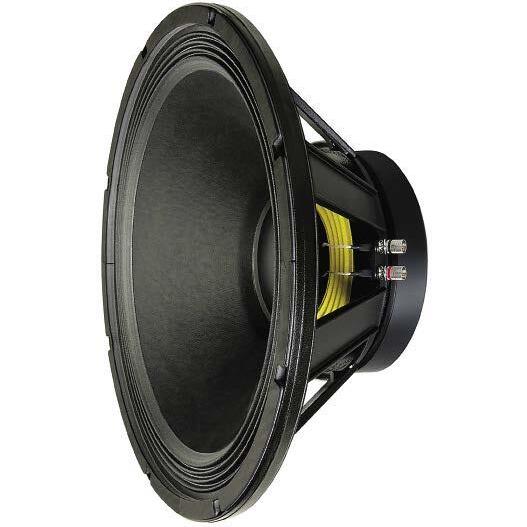

IT’S LIKELY THAT WHEN YOU were young, you had science classes in school that demonstrated electromagnetism. Maybe you wrapped wire around a nail and powered the wire from a battery, turning the assembly into an electromagnet. Perhaps you’ve also moved two magnets next to each other and found that like poles repel each other, while opposite magnetic charges attract. Those are the fundamental concepts you need to know to understand how speakers work.
Moving air through electromagnetism



around

TECHNOLOGY
48 WORSHIP AVL July-August 2017
Figure one shows a cross section of a loudspeaker, Figure two a front cutaway view. The speaker cone and dust cap are what is visible from the front of a woofer, along with a semi-rigid surround connecting the cone and the metal basket. On the inside, the spider is the semi-rigid support for the bottom of the cone. The cone connects to the voice coil’s core. The voice coil is a long strand of wire wound
HORIZONTAL
Failed or compromised loudspeaker components cost time, money, and possible disruption of worship as problems typically happen at the worst possible time. Frank Wells explains how failure happens, and more importantly, how you can avoid trouble
Figure one - a woofer cross-section(Image by Iain), png by Rohitbd (CC BY 3.0)
Eminence 18-inch Omega woofer
What goes into choosing the best vocal mic for a given application? Gordon Moore demystifies the process
causes the woofer to pump inward and outward, making soundwaves in the air.




Selecting a vocal mic
Selecting a vocal mic
What goes into choosing the best vocal mic for a given application? Gordon Moore demystifies the process
What goes into choosing the best vocal mic for a given application? Gordon Moore demystifies the process
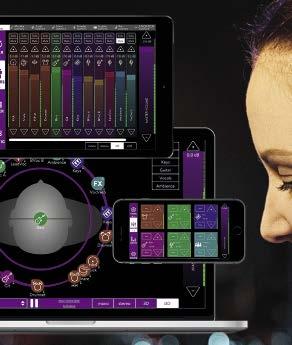
Wireless mics, like the Shure model being used here by Hillsong artist, Taya Smith, typically have interchangable capsules
For high frequencies at high volumes, a similar principle is used, though adapted to the behaviour of sound at higher frequencies. Figure three shows a compression driver (A) connected to a horn or waveguide (B). The rigid diaphragm of the compression driver sits behind a permanent magnet. The voice coil connected to the diaphragm is fitted into a circular slot that puts the coil between the poles of the permanent magnet. When audio current from an amplifier flows through the diaphragm’s voice coil, the
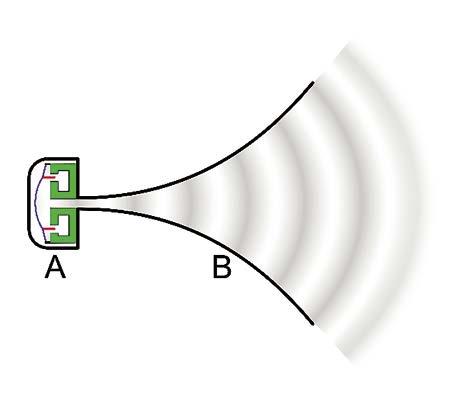
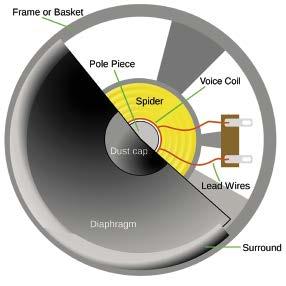
MICROPHONES HAVE A WIDE range of applications and purposes as well as a wide range of sonic characteristics from one model to the next. What works for one application doesn’t work well for another. So how do you select a microphone when choosing it for vocal purposes?
Vocal mic choice begins with the selection of the element, the
transducer component in the head of the microphone – many elements are available in both hard-wired and wireless versions. The ‘best’ microphone sound is highly subjective and in many cases based on the ear of the performer or the sound engineer. A microphone that may sound great for a crooner such as Sun Nan or Rain Bi will be a terrible choice for a
Wireless mics, like the Shure model being used here by Hillsong artist, Taya Smith, typically have interchangable capsules
MICROPHONES HAVE A WIDE range of applications and purposes as well as a wide range of sonic characteristics from one model to the next. What works for one application doesn’t work well for another. So how do you select a microphone when choosing it for vocal purposes?
MICROPHONES HAVE A WIDE range of applications and purposes as well as a wide range of sonic characteristics from one model to the next. What works for one application doesn’t work well for another. So how do you select a microphone when choosing it for vocal purposes?
Wireless mics, like the Shure model being used here by Hillsong artist, Taya Smith, typically have interchangable capsules



Vocal mic choice begins with the selection of the element, the
the tubular core. At rest, the voice coil windings sit behind the speaker cone, surrounded by a permanent magnet and inside the magnet’s field. To produce sound, the output of an audio amplifier is connected to the voice coil. Just as with the wire wrapped around a nail in science class, when current flows from the amplifier through the voice coil, an electromagnetic field surrounds the coil. As this current flow varies based on the instantaneous polarity and level of the input music or speech, the electromagnetic field will vary proportionally positive and negative. As the magnetic field changes, it is attracted to and repelled by the permanent magnet. This
Vocal mic choice begins with the selection of the element, the

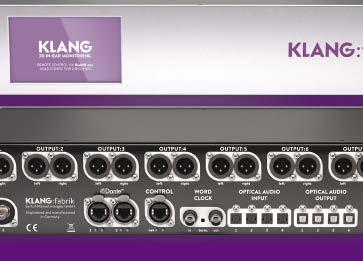












transducer component in the head of the microphone – many elements are available in both hard-wired and wireless versions. The ‘best’ microphone sound is highly subjective and in many cases based on the ear of the performer or the sound engineer. A microphone that may sound great for a crooner such as Sun Nan or Rain Bi will be a terrible choice for a
transducer component in the head of the microphone – many elements are available in both hard-wired and wireless versions. The ‘best’ microphone sound is highly subjective and in many cases based on the ear of the performer or the sound engineer. A microphone that may sound great for a crooner such as Sun Nan or Rain Bi will be a terrible choice for a



HORIZONTAL
Figure two - a front cut-away view of a woofer (Image by lainf) (CC BY 3.0)
KnowHOW
Figure three - a cross section view of a compression driver-waveguide combination (Image by Chetvorno) (CC BY 1.0)
38 WORSHIP AVL January-February 2017
HORIZONTAL KnowHOW
38 WORSHIP AVL January-February 2017
1/2PAGE HORIZONTAL
Selecting a vocal mic
38 WORSHIP AVL January-February 2017
1/2PAGE HORIZONTAL WAVL Pg38-41 KnowHow Selecting Mics.indd 38 09/11/2016 15:07 P38_Jan_Feb.indd 38 29/11/2016 20:04
The Audio-Technica AE4100 is a dynamic handheld vocal mic
powered amp is more likely to be able to deliver crippling wattage.
As coils heat, the effective impedance of the loudspeaker increases. This creates an effect called power compression, where the wattage required to deliver the same acoustic output increases. Turning up an amp to compensate can create further heat build-up, and eventually failure. To avoid overdriving voice coils, good engineering practice is the first line of defense. Audio paths should be properly gain-structured to avoid clipping signals at any point along the path, which keeps the average power down. Where an amplifier can deliver enough power to damage a loudspeaker, and gain structure has overdrive potential, signal limiting is the go-to solution.
Limiting
Audio limiting is an extreme form of compression. As applied in live sound to protect loudspeakers (and to limit overall SPLs for the protection of listeners’ ears), a level is set that an amplifier input signal must not exceed. Figure four shows a plot of input vs output levels of a limiter circuit. A bypassed limiter allows input signals and output signals to track linearly. When a limiter
returns to normal as soon as levels move below the threshold. This is the effect of a ‘brickwall’ limiter circuit, or of overdriving audio circuits. In the latter case, there is no threshold control – clipping occurs when the input and gain of a given circuit drive the output to the maximum possible extremes. When clipping occurs, distortion increases (harmonics are added to the source signal) and average power increases.
signal never exceeds the desired maximum, but has a few cycles of lower than desired output after the input signal drops below threshold, while the slow release gradually ramps gain back to nominal.
In the fourth example in Figure five, attack and release are both set to moderate levels. The onset of limiting is gradual after threshold is reached, as is the return to normal gain after the signal passes below threshold. The slow attack can result in more natural sounding transients – fast rising leading edges of waveforms exceeding threshold would not be immediately squashed. However, threshold is being exceeded at the output of the limiter, albeit briefly.
In the fifth example, “soft” clipping (or soft limiting) is employed. The tops of waveforms that would exceed threshold are rounded off, instead of flat topped. This does produce distortion, but less than hard clipping.
components can be actively monitored. Where such interaction is well understood – within a selfpowered loudspeaker, for instance – the operating parameters can reveal thermal behaviour of the components, and a smart amplifier can adapt. Instead of using traditional limiting, some amps will self-regulate internal power supplies to reduce maximum output capability.
Excursion control
While foreign matter in air gaps, faulty construction and aging materials can also cause failure or compromise loudspeaker performance, such considerations are largely beyond an end-user’s control. There is one further failure mode to consider – excessive excursion.
is engaged, and a signal reaches the limiting threshold, the circuit attenuates the signal so that it does not exceed a preset limit. Figure five shows how limiting works in practice. The original signal, on top, exceeds the desired limit (threshold – the dashed blue lines) for the middle part of the time slice shown. In the second plot, hard clipping is shown. The onset of clipping is immediate when the threshold is reached, and the signal
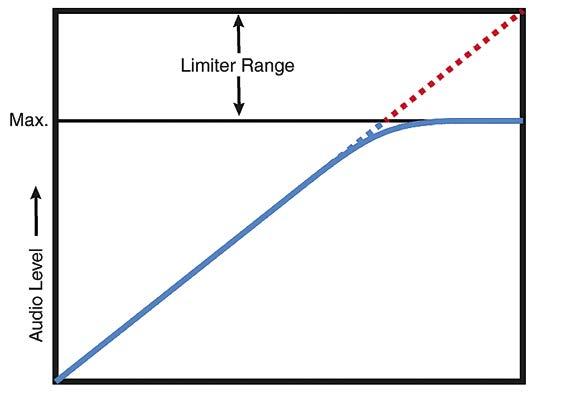
For the third example, the concepts of attack and release come into play. Attack, in a dynamics control circuit, refers to how fast the circuit can react to a threshold being exceeded –how fast a signal can be attenuated. In the example, an attack time of zero is shown, which imparts distortion on the leading edge of the waveform. Release refers to how quickly the gain structure of a dynamics control circuit recovers when a signal drops below threshold. In the example, the output
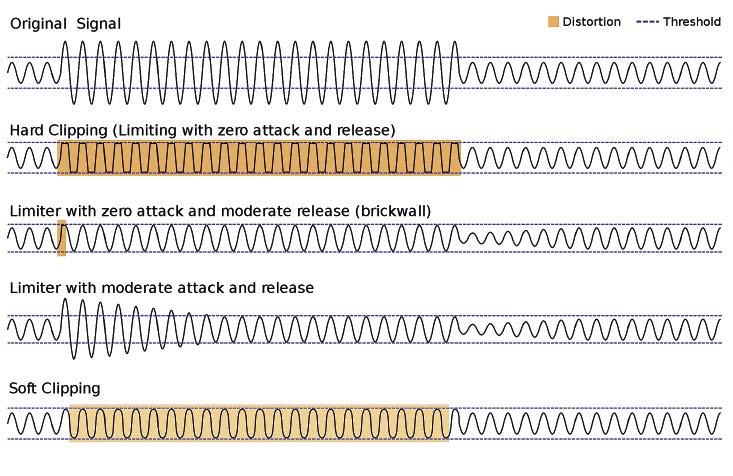
A sixth example could be drawn showing a “perfect” limiter with no attack and release distortion nor any delay on normalising gain control once the source signal returns below threshold. This is possible in digital circuits, at the expense of a bit of signal delay, by taking a ‘look ahead’ at a waveform’s levels. By delaying a signal an equivalent time to how long it takes to measure the signal, derive an appropriate gain offset and apply the maths, limiting can be harmonic distortion free. Designers use various additional techniques to optimise the sonic character of look ahead processing.
There are additional possibilities for speaker protection, enhanced by digital technology. Temperatures inside cabinets and the interaction between power amplifiers and
A loudspeaker diaphragm can only pump so far backwards without internal collisions that can cause damage. A cone trying to extend too far forward can stress surrounds and spiders. In practice, over-excursion damage is rare with modern, professional loudspeakers. When it does occur, it’s most likely to be the result of a large thump of energy like you can get when a mic or guitar is plugged hot on an open channel, or when powering a console off and on when connected to an amplifier that is turned on with its volume up. Limiters can help control this errant energy. It’s also good practice to turn your amps off first and on last, when powering gear up and down.
Loudspeakers represent a substantial investment, and often are inconvenient to service. Protecting that investment is good stewardship and good engineering practice.
TECHNOLOGY
50 WORSHIP AVL July-August 2017
Figure four - linearity and limiting (Image courtesy of Lectrosonics)
Figure five - clipping and limiting (Image by lainf) (CC BY 3.0)
ShowMatch™ DeltaQ™ loudspeakers provide better coverage for outstanding vocal clarity.


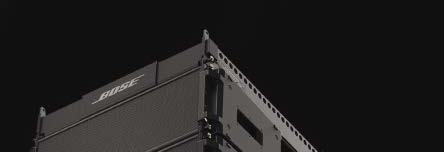

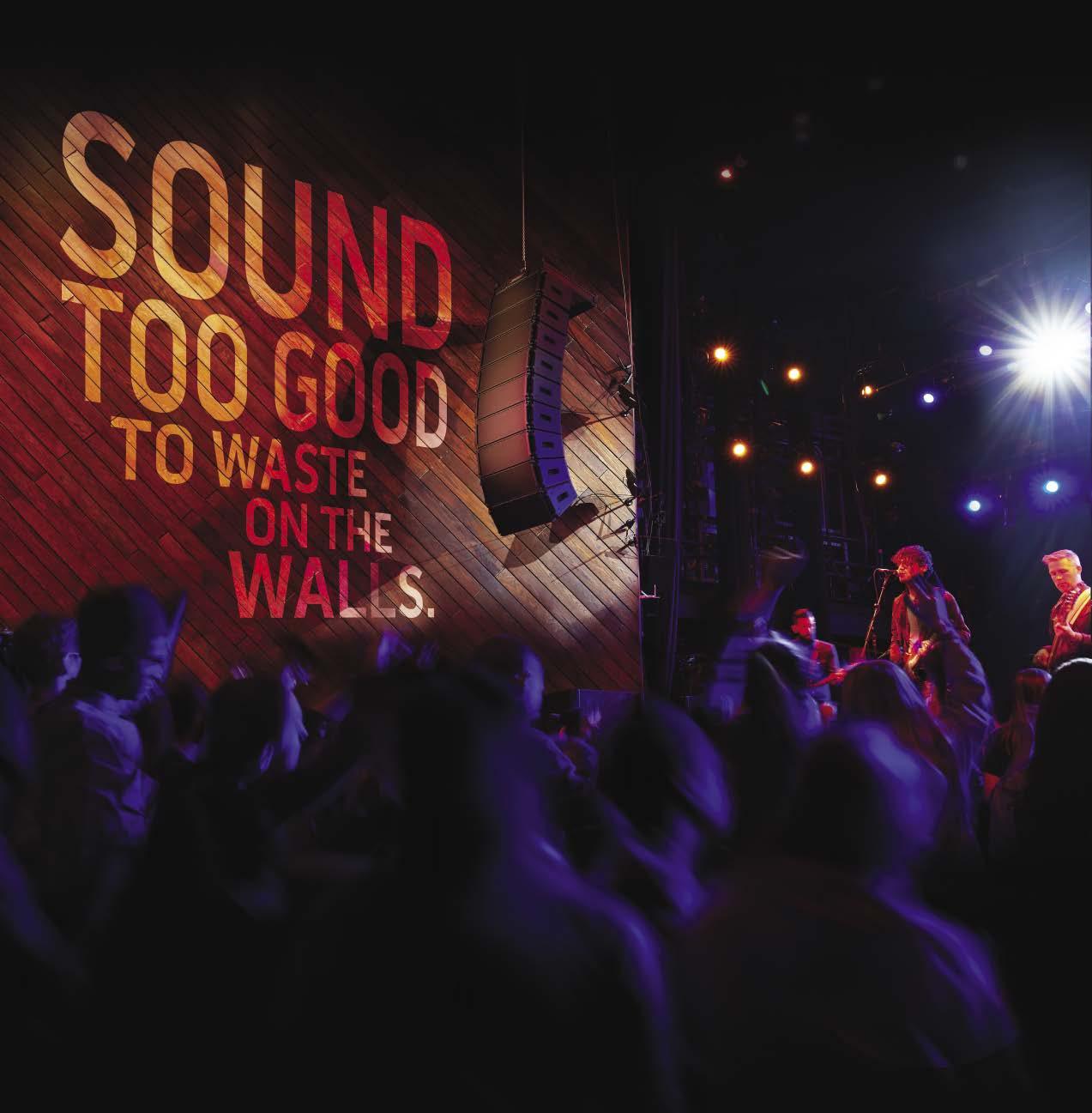
With DeltaQ technology, new ShowMatch array loudspeakers more precisely direct sound to the audience in both installed and portable applications. Each array module offers field-changeable waveguides that can vary coverage and even create asymmetrical patterns. The result is unmatched sound quality and vocal clarity for every seat in the house.
Learn more at SHOWMATCH.BOSE.COM





©2017 Bose Corporation. PROFESS IONA L NEXT-GENERATION ARRAY TECHNOLOGY PROFESS IONA L
Switching it up
Video switcher technology has enjoyed some big changes in recent years. Simon Luckhurst explores the main trends and innovations
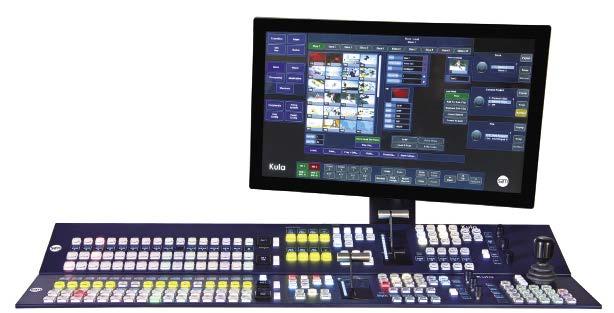
WHEN IT COMES TO TECHNOLOGY, things are always changing. No sooner has one standard gained acceptance in the industry before a move to the next best thing is already on the cards. The vision mixer, or video switcher, is central to any production involving video, and if it’s been a while since your last visual purchase, the vision mixer that you once knew may well be quite unfamiliar today. In the past, typical considerations centred on input/ output capabilities with the eventual purchasing decision largely steered by price. Today there are a lot more options to consider before taking the plunge. Worship AVL takes a trip down memory lane.
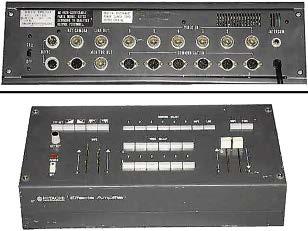
‘Early video switchers just provided simple source selection – probably between one or two cameras and VTs – advancing to provide additional features like transitions, keying graphics and basic effects,’ remembers
switchers have been becoming more of a multi-purpose system, with the addition of clip storage and integrated multiviewers.’
Technology is only one side of the story. In recent times HOWs themselves have undergone considerable change. ‘The modern house of worship is now not that different to a small – or in the case of the megachurches, mid-sized –broadcaster. The video production needs of a house of worship have become more and more sophisticated, with content being delivered to multiple feeds, multiple screens, to dedicated streaming services and even on-air broadcasts. Switchers have become part and parcel of the production setup at even smaller churches. Audiences are no longer confined to a local community, but are in many cases national and even global.’
Format, connectivity and control
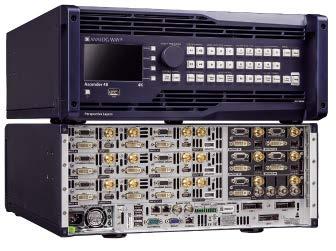

Driven by expectations in the consumer market, one of the most
obvious trends is that of ever increasing resolution. By now Worship AVL readers will be familiar with terms such as HD and 4K, and many of those reading this article will also remember VGA, component, S-video and a host of other analogue signal formats. It wasn’t long ago that many ministries were contemplating a move to HD. Some of the bigger churches have already transitioned to 4K workflows and switcher manufacturers now have models on the market capable of handling uncompressed 8K playback. Quite the step up.
‘Although the format of content being produced should match the monitors and screens that the congregation will be watching on, it is worth considering futureproofing your video production kit now, so your investment will be protected,’ notes Blackmagic’s director of sales and marketing EMEA, Simon Westland. ‘So you may only need HD now, but 4K is becoming so prevalent in live events, and many switchers will allow you to produce in a variety of formats. This means that when you’re ready to
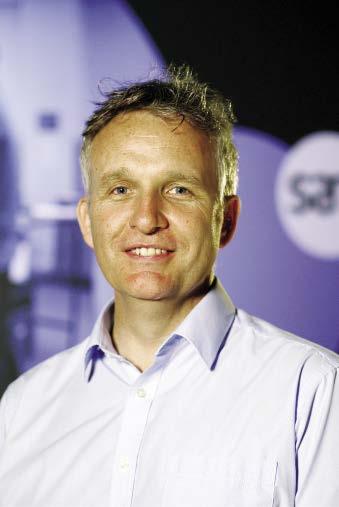
make a switch up, there’s no need for additional investment.’
And that’s just in terms of output. Greater numbers of inputs are almost universally sought after, and in addition to traditional inputs, an increasing number of ministries are now looking at including web streams and RSS feeds from off-site campuses – inputs that don’t have conventional switcher connections. Other popular trends include an increased interest in M/E-less options among some buyers, and a rise in the use of virtual switcher platforms touch operated from a monitor.
‘Regardless of the content they are consuming, audiences want to enjoy higher and higher resolution and quality, so the ability to handle multiple formats – and have a clear path for migrating to UHD/4K and beyond – is critical,’ explains Mr Carter. ‘Content is now being consumed in a plethora of ways, not just via the television screen. Younger congregation members are more likely to access content via social media. When investing in a switcher – any production equipment for that matter – this needs to be taken in to account.’
All of these changing formats means that there are now more connectivity options on the market than ever before, and their suitability will depend on individual use. Say, for instance, your congregation has been archiving services to DVD or even VHS for years, and that content is reused and infused with today’s services. You will either need to consider a way of updating the archives to more modern formats or purchasing a switcher capable of
TECHNOLOGY
SAM senior product manager, John Carter
A 1968 Hitachi EA-103U, a black and white video switcher with simple wipe effects and an A/B fader
An early 1969 Sony SEG-1A video switcher Analog Way’s Ascender 48 is capable of providing 4K output to multiple screens seamlessly
The SAM Kula 2M/E switcher
accommodating these legacy connections.
Size

Despite the everincreasing functionality of switcher models, there’s been a definite trend towards smaller footprint models, both in and outside of the house of worship market. The arrival of compact switchers in particular has opened up more opportunities for HOWs, providing more functionality, such as multiple mix effects (M/E) that were once only available at the top end of the market, at a more affordable price. It’s interesting to note however that the majority of switcher buyers still continue to gravitate towards single or few M/E-capable boards, providing owners with their required functionality at a lower cost.

the average HOW’s potential budget. The budgets set aside for producing visual content have also enjoyed a steady rise in recent times and HOWs increasingly see video production as integral to engaging all age groups.
‘Cost efficiency is something all our customers, regardless of whether they are a house of worship, corporates or broadcasters, are striving towards,’ says Mr Carter. ‘This doesn’t just mean the cost of the physical equipment. The management, deployment and support/maintenance of that equipment outweigh the ticket price quite considerably. It is critical to work closely with technology suppliers that have a clearly-defined migration path so that their investment is protected in the longer term.’
But where do the priorities lie for a HOW technician struggling to decide on the most effective switcher for their budget?
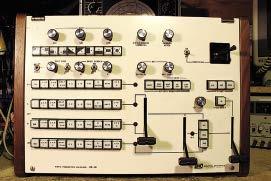

stream. This can be combined with our Atem Television Studio HD, which is an 8-input switcher that allows HOW teams to produce professional quality content in a cost-effective system. The two units fit into one rack unit, making it a very portable and compact system, and one that can easily be set up quickly before a service.’
‘The lines between small and midsized broadcasters and larger houses of worship are very blurred. But really it all depends on the specific needs of a house of worship,’ argues Mr Carter. ‘Delivering content to a handful of screens doesn’t require the processing power and multiformat functionality that producing content for multiple channels, streaming services and social networks does. More functionality at a lower cost is something technology suppliers strive to deliver, that won’t change anytime soon.’
It’s also easy to focus on soundbites like 4K and streaming capability while overlooking important aspects such as the way the unit is controlled. Mr Westland urges potential buyers to ‘consider how the switcher will be controlled – will you use a traditional panel, as you would see in production galleries, or do you want to use control software on a tablet or laptop? This will come down to how big your A/V team is, where they will be stationed and whether they are experienced video producers or volunteers. Also, think about camera control through the switcher. If you’re working with a small, or even a one person operation, some switchers, including our Atem range, can also control functions on cameras connected via SDI, so the vision mixer operator can deliver a multicam production during a service.’
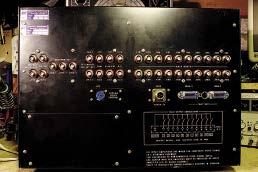

‘Switcher size and capability correlates to the size of the house of worship in question,’ adds Mr Carter. ‘A smaller church that delivers its content to multiple screens and might have a streaming service for its congregation has very different needs from a megachurch that has several channels. It is more a case of looking for the best functionality, speed and capability that you can find within your budget.’
Budget
Nearly everything drops in price over time but things aren’t quite that simple. Even today it’s not difficult to shell out tens of thousands of dollars for a modest but highly-functional setup. This will always be the case for niche users, but the vast majority of simple (and I’d argue, necessary) visual equipment now falls within
‘Being able to stream a service is a great way to get a HOW’s message out to a wider, international audience, so this is a great element to build into an A/V system,’ says Mr Westland. ‘We recently launched the Blackmagic Web Presenter, which is a compact unit that converts a programme feed or camera signal automatically to 720p, allowing a HOW team to use a service such as Facebook Live or YouTube Live to
He adds: ‘I would argue that a typical switcher must now deliver flexible and customisable configuration, multiple keys per M/E enabling 20 to 30 key layers, assignable inputs and outputs and fast, simultaneous multi-format (usually SD and HD) processing. SAM’s Kula multi-format production switcher delivers a powerful feature set and seamless mix for any format up to and including UHD.’
Above all, however, the SAM product manager thinks that when it comes to purchasing the wiser decision is to prioritise future considerations.
‘Just like any other organisation, a house of worship needs to protect its investment, and a switcher that can both deliver all its requirements today while being scalable and flexible enough to adapt to the changing requirements in the future – whether that’s support for higher resolution formats, delivery to new platforms, and so on – makes eminent sense,’ says the product manager.
All of this means that there is undoubtedly a lot more to consider than there was for your last purchase. Research is paramount before placing an order but it’s also better to consult the experts rather than be stuck with an inappropriate model. If in doubt, like always, speak to a professional integrator who is familiar with the types of services your ministry offers. www.blackmagicdesign.com
TECHNOLOGY
July-August 2017 WORSHIP AVL 53
www.s-a-m.com
Blackmagic’s Web Presenter makes any professional video source appear as a USB webcam for streaming services on the internet
Central Dynamics VS-14
Coaxial connections on the Central Dynamics VS-14
The newer Ross Video Carbonite Solo bears a striking similarlity to earlier models despite its greater functionalty
compact Carbonite switchers offered today
Lighting: electrical and control wiring
LIGHTING WIRING AND CONTROL HAS
evolved over the past three decades, alongside the continually developing sophistication of lighting fixtures. In the earliest days of lighting, a fixture was either off or on. AC power runs were full power, or some fraction of full voltage to dim the lamp under control of a rheostat (a variable power resistor that dissipates some portion of the source voltage as heat). Mechanical rheostats were replaced with electronic control in the form of dimmer racks and modules. In this scenario, control signals, commonly from a lighting console, connect to the dimmer devices; electrical power to the lighting fixtures, either full or partial power, connects from the dimmers to the lighting fixtures. As traditional technology lighting fixtures can individually reach the low thousands of watts in power consumption, such wiring has to be able to handle substantial current.
case of LED fixtures, for powering the light source.
Control – DMX fundamentals
While there are plenty of single purpose lighting fixtures on the market, there’s also a trend in modern lighting fixtures towards on-board control technology, along with capabilities ranging from colourchange to motorised movement. Lighting control is run to the fixture, as well as full voltage AC mains power. Inside the fixture, that AC power is split and rectified into various DC voltage components for control electronics, for motors, for effects circuits and, in the

While there are some proprietary lighting control standards in use, the dominantly employed methodology uses the DMX (Digital MultipleX) protocol. The original DMX standard was crafted in 1988. The standard, which is officially called DMX512-A, has been tweaked over the years, but remains true to the original concepts. The 512 in the name means that a maximum of 512 devices can be addressed individually by a single instance of the protocol (called a universe, in DMX-speak). Each channel of control information contains a single eight-bit digital control word. Each word can thus represent 256 values. For dimming control, for instance, that would yield the user 256 steps of resolution between full on and off. For fine control of such functions as motorised panning, 256 steps are not enough. In such a case, two channels of the 512 possible could be addressed to the same function in a given fixture, allowing a 16-bit word to be split between the two channels. A 16-bit word length allows 65,356 step values to be shared. It’s common for modern fixtures to use numerous channels per single fixture, controlling parameters
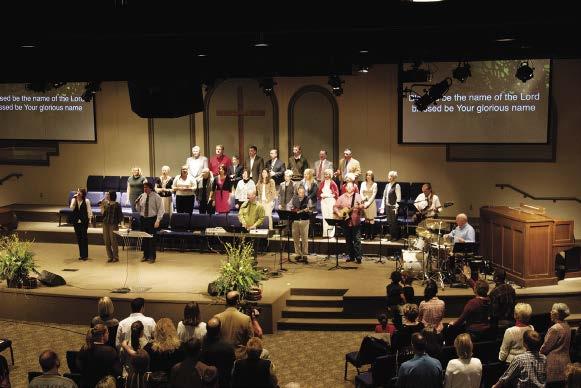
like pan, tilt, colour, intensity and dynamic motion. While using multiple channels per fixture lowers the number of fixtures that can be utilised on a single universe, it’s also common for lighting consoles to offer multiple universes of DMX control. Even where a fixture might need a couple of channels of control (to specify colour and to control intensity on a backdrop wash fixture, for example), multiple fixtures being deployed at stages along the backdrop could be set for identical addresses if each fixture is to employ an identical colour and intensity. There are constraints on DMX control signals besides the number of channels per universe. The electrical standard in use only allows 32 devices maximum to be connected in series to a single console output; DMX signals are connected in a daisy chain fashion, from the console to a device, from that
device to the next device, and so on, with a terminator on the final through output. The maximum cable run length in total on a single output is 1,200m, assuming perfect conditions. The DMX standard originally, and still commonly, uses five-pin XLR connections in and out of each daisy-chained device (only a single shielded-pair of wires is needed for each connection – two pins are unused). The DMX standard now allows for RJ-45/Ethernet connections for implementation with common Cat-5 cable.
If there are 512 channels possible, but only 32 devices can be connected to a single DMX control output, how is it possible to share control with more than 32 devices? Given the need to control a number of parameters in single fixtures, 32 might prove a reasonable number in practice. If not, active DMX splitters allow a control output to be replicated for additional daisy-chained control networks. DMX control may not be a thoroughly modern protocol, but has proven flexible enough to accommodate changing needs
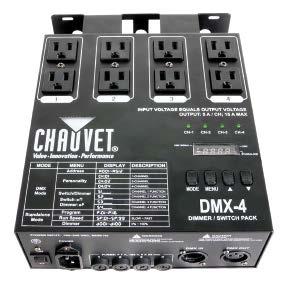
Use a certified/licensed professional
Given even this somewhat simplified foundation of lighting basics, it should be apparent that wiring for lighting fixtures falls into a few basic categories: AC mains voltage, dimmed (voltage reduced) AC and low-voltage control signals. Full AC power will either be connected directly to ‘smart’ lighting fixtures, or to dimmer racks and packs.
TECHNOLOGY
54 WORSHIP AVL July-August 2017
While not typically a do-it-yourself project, Frank Wells offers the fundamental knowledge you need when developing a lighting system installation
The grid-hung lighting fixtures are visible in silohuette at Central Baptist Church, Decauter, Alabama, USA
This small dimmer pack from Chauvet uses a three-pin XLR variant of the five-pin DMX protocol
Five-pin XLR connections are the most commonly used DMX512-A connections
If used, reduced voltage AC will connect to conventional fixtures from dimmers. Control signals, DMX for the large part, will be daisy-chained between fixtures.
If a house of worship does not have a trained and qualified professional electrician in its midst, one should be hired for any work involving electrical wiring. In many cases, the same applies to low-voltage wiring. Depending on the regulations in a given location, low voltage wiring installation may require a license, wiring may need to have fire-proof jacketing and there may be restrictions on aspects of installation like mounting or with how walls are penetrated by wiring. Knowing how to apply standards safely, effectively and within local codes and restrictions is beyond the capabilities of most HOW tech staff members.
DMX control wiring is simple and straight forward. With a little knowledge of the capabilities and limits, an effective system can be
running to a number of paralleled outlets on the grid. Lighting fixtures can be moved on the grid as desired, and power picked up as needed from the closest outlet (again, assuming proper planning has allowed for each branch to provide as much current as is needed by any possible combination of fixtures that might be plugged into a branch circuit).
configured, and a control wiring installation scheme can be worked out with an installer.

With dimmer rack-based systems and conventional fixtures, the electrical current demands can be huge. Large capacity, high-current runs to the dimmer racks is matched with substantial, if smaller, gauge wiring to each fixture from the dimmer. The connections between the dimmer circuitry and the light fixtures can carry full voltage, with currents drawn by a single fixture being equivalent to the power capabilities of branch circuits in a home.
The electrical demands of LED-based fixtures are much lighter, due to the increased efficiency of LED lamps. Lighting grids can be prewired with full voltage AC outlets. As long as the maximum current loads are factored in, an AC wiring home run from a breaker can be split inside a local junction box at the lighting grid, with star leads
In a hybrid system blending traditional and LED lights, small, DMX controllable dimmer packs with just a handful of dimmer outputs are sometimes used for applications like a row of conventional wash lights, or even at a lighting grid for non-LED systems. Low to medium current capability dimmer packs can simply plug into standard outlets, but to insure adequate available current and no popping breakers, should be fed by a single home run of AC power from a dedicated breaker in a breaker panel. Before inexpensive dimmer packs are purchased and deployed, their specs and the maximum potential electric needs should be compared.
If at all feasible within budget, build in the capability to handle larger numbers of lighting fixtures than currently deployed. A little thought, and finding a good electrician as a partner, should yield a system that is safe, flexible and expandable.
ETC’s ColorSource® family of products fights the epidemic of bad LED lighting – one small venue at a time.
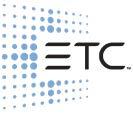

With a range of affordable RGB-L luminaires that provide high-quality light and color, a wireless relay system that makes distribution easy, and control consoles that mix colors and run multimedia effects with the flick of a fader, a ColorSource system gives you everything you need to light your venue – with style.
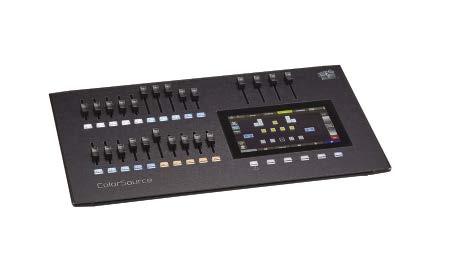







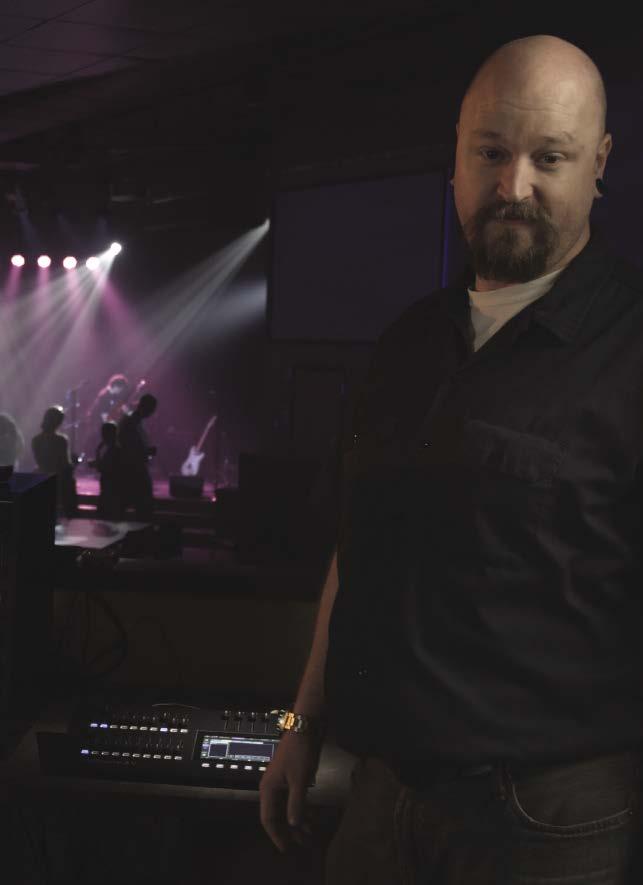
Join

July-August 2017 WORSHIP AVL 55
The GLP Impression X4 needs 20 DMX channels for normal control
Martin’s M1HD is a 40 DMX Universe lighting controller
ETC
^ ^ +
“I refuse to become a victim of bad LED lighting”
ETC ColorSource Family
ColorSource Family
the
at www.etcconnect.com/ColorSource
fight today
HD projectors

projection technology. Over the years, video projection has been adopted by HOWs of different styles from around the world. Today, they are used for more than simply providing the means for worshippers to sing along; they reinforce a worship leader by detailing their facial expressions to those seated toward the rear of the sanctuary, referred to as image magnification (IMAG) and can relay messages in dynamic ways in the form of video playback, allowing the use of recorded and edited content.
an out-of-date SD video feed, simply by comparing what they are seeing with what they are used to at home. Investing in a projector isn’t as simple as purchasing a television though.
Budget
Let’s start with the factor that drives any purchase.
‘Projection system costs often differentiate by brightness, resolution, light source technology, installation flexibility and screen type, size and surface,’ explains Amy Kwa, head of regional visual instruments at Epson. ‘You will need to consider each requirement and set your priorities accordingly. New technologies, such as laser projectors, offer less maintenance over longer periods, which is another cost consideration. Even though the initial purchasing cost could be higher than the conventional lamp-based projector, it could work out more cost-effective in the long run. The total cost of ownership is more than the initial purchase amount, including lamp changes and the cost of human

resources to maintain, troubleshoot and repair.’

Curtis Lingard, product manager at Christie, backs up that point: ‘It’s worth going through the exercise of determining the total cost of ownership for a projector,’ he says. ‘It also includes consumables, power consumption and maintenance costs. Seeing the total cost of ownership provides you with a much better perspective of what you’re getting
can often lead to making the wrong decision.’
Permanent or portable
Some projectors are designed specifically for fixed installations, while others are suited to mobile use and can be deployed in different locations or provide an option for HOWs where a permanent installation is not possible.
‘In an installed solution you have the benefit of choosing the perfect projector for the application because all the environmental conditions are known and won’t vary,’ says Mr Lingard. ‘The projector will be installed once, so you can select the perfect lens and not worry about the size and weight impacting how easy it is to move or the time to set up. In a mobile solution, you’ll need to plan for flexibility since all of the environmental conditions become variables and change. Ultimately, in mobile solutions you end up choosing a jack-of-all-trades while installed solutions are very specialised.’

BUYING GUIDE
56 WORSHIP AVL July-August 2017
Amy Kwa, department head, regional visual instruments at Epson
The Panasonic PT-RZ12K
‘Normally for HOWs, the recommendation is to have a fixed installation to save set up time every week and avoid any floor space complications,’ declares Ms Kwa. ‘You should always consider where the audience will be located and their viewing angle when deciding between installed or mobile solutions. Another point to consider is the installation feasibility: will the current building architecture allow the projector to be installed in certain areas and can the weight be borne by the structure?’
Mr Lingard reiterates that physical constraints should be considered early on. ‘If you have to put the projector in a location that is hard to access, perhaps you’d be more likely to consider a projector with solid state illumination like laser phosphor or RGB,’ he explains. ‘The projector will be determined by the size of the room, congregation sight lines, ambient light, possible obstructions and, naturally, the type of projector. Distance and screen size together will direct you to choose either a projector with a permanent lens or a projector with a replaceable lens suite.’
Discussing mobile options, Ms Kwa highlights the pros and cons: ‘Mobile projectors are useful when challenges are faced for fixed installations, or for cost saving, as you can use one projector in multiple locations. However, things to note are the longer set up time, ensuring the floor space between the projector and screen is cleared to avoid shadows and interference, the weight of the projector and the different ambient lighting conditions of the locations it will be used in.’
Brightness and resolution
Brightness, as regular readers may know, is measured in lumens.
‘A lumen is a unit used for measuring visible light emitted from a light source,’ Mr Lingard informs us.
‘Typically higher is better since it usually translates into better contrast, but when looking at projector lumen specifications it is important to find out what measurement method is used.

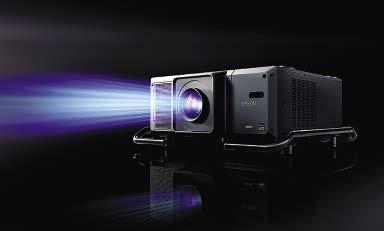
Two common measurement methods use an average of nine measurement points across the screen, such as ANSI or ISO 21118. The main difference is
that ANSI allows 10% tolerance while ISO allows for up to 20%. Another common specification is “centre lumens” which only takes a single centre measurement and applies that to the entire display area. There are no standards for centre lumens, so any tolerance could apply. If no specific measurement method is noted, it’s best to find out.’
The environment’s ambient light plays a factor in the lumens required, as Ms Kwa elaborates, ‘The brighter the location, the higher the lumens needed to ensure visibility of the projection. The distance of the projector from the screen will also affect the brightness required, as the further away from the projection surface, the brighter the projector will have to be.
screens mean the light from the projector is being distributed across more surface area, so it will appear less bright than if used on a smaller surface,’ says Mr Lingard. ‘Many HOWs allow a lot of light into the
worshippers may have already upgraded to 4K Ultra HD televisions at home, while some manufacturers are touting the future of 8K.
‘Because of the growing availability of 4K content, congregations today may be more inclined to see the sharper 4K resolution images as the standard,’ admits Mr Lingard. ‘The key to future proofing comes from truly understanding your application. Knowing your projected image’s purpose, environment and content will help you decide what’s needed. While technology will always continue to improve, you need to question whether the improvement adds value to your application. While moving to 4K from HD provides more than four times the resolution, the viewer needs to be close enough to be able to resolve the increase in pixels before it becomes of value to them. If they’re too far back from the screen they won’t be able to tell the difference.’
Ms Kwa also recommends taking stock of the content you wish to display. ‘In the short term, if 4K content is already in the plans, then having a 4K ready product will be an advantage,’ she says. ‘If budget is an issue, you can consider 4K enhancement products that can accept a 4K signal. However, if 4K content is not yet ready, consider investing in a 1080p/WUXGA HD projector as this product will serve you for at least three to five years.’
continues. ‘Projectors comprise a few key resolutions: SVGA and XGA, meant mainly for projecting SD materials in a 4:3 aspect ratio; WXGA, often known as HD-ready or 720p; 1080P/WUXGA for Full HD; and 4K.’
How important is resolution to a purchase decision? ‘It depends on the application, but content and display surface are key,’ answers Mr Lingard.
‘If you’re using giant text, higher resolutions aren’t really needed. If you’re using images to convey detailed information, then higher resolution is required. Outside of the content itself, a viewer must be close enough to see the difference. If the viewer is too far away they won’t be able to tell the difference between resolutions.’
The projection surface in use can
to buy a brighter projector because the ambient light washes out the darker part of the images, reducing contrast. One item to combat the ambient light and maintain high contrast is the screen material. You can buy screens that have ambient light rejection capabilities or screens that have gain values applied.’
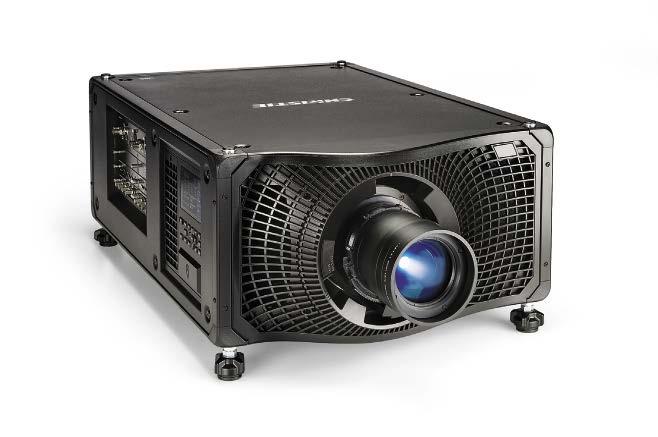
Ms Kwa reveals that many users tend to overlook aspect ratio. ‘In fact it impacts how the entire presentation appears,’ she says. ‘Most playback devices are already using a 16:9 aspect ratio, but some content might still use 4:3. For HD content 16:9 is definitely the recommended choice, so HOWs should consider at least a WXGA, 1080p or WUXGA projector for HD applications.’
Mr Lingard adds, ‘One must carefully match the pixel format of the projector with the source to be displayed, ensuring the best image quality and maximum effect.’
Future proofing
Although HD has become an accepted standard globally,
Summary
‘One of the key factors behind making the decision on a new HD projector would be the type of content that will be displayed as well as the method of delivery,’ Ms Kwa recaps. ‘Other factors include ambient light conditions, as well as the type of screen in terms of the size and aspect ratio in relation to the size of the sanctuary or hall.’
Mr Lingard concludes: ‘The most important consideration is determining how the congregation will use the system since this will not only affect power and features required, it would also determine how many projectors are used and what type of light is needed. Brightness and contrast are key to making sure the images are clearly visible to the entire congregation, but projection is so much more than light that you need to consider connectivity, image quality, native resolution and frame rates.’
BUYING GUIDE
www.epson.com.sg July-August 2017 WORSHIP AVL 57
www.christiedigital.com
Epson’s EB-L25000U features 4K enhancement technology
Christie’s Boxer Series projectors offer 2K and 4K resolutions
Hitachi CPWU8451
CONTENTS
CONTENTS
CV launches live cabinets for all sizes
Designed to best in class for audio and build quality with ample headroom, Cerwin Vega has developed the CV series of portable, powered PA systems for small to medium-sized performance venues
Designed to best in class for audio and build quality with ample headroom, Cerwin Vega has developed the CV series of portable, powered PA systems for small to medium-sized performance venues
RATHER THAN trying to design a single system capable of hitting both big and small venues, Cerwin Vega has broken the CV series down into three components. Representing the line’s most compact enclosures, the CVE group comprises of four powered speakers with single 10-, 12- and 15inch tops and an 18-inch subwoofer. Mounting points and an accessory wall bracket are included for fixed installation options, although the three models can serve as portable speakers or stage monitors, making them ideal for small to medium-sized ministries that set up and tear-down each week. Each cabinet incorporates 1,000W Class-D amplification, two
RATHER THAN trying to design a single system capable of hitting both big and small venues, Cerwin Vega has broken the CV series down into three components. Representing the line’s most compact enclosures, the CVE group comprises of four powered speakers with single 10-, 12- and 15inch tops and an 18-inch subwoofer. Mounting points and an accessory wall bracket are included for fixed installation options, although the three models can serve as portable speakers or stage monitors, making them ideal for small to medium-sized ministries that set up and tear-down each week. Each cabinet incorporates
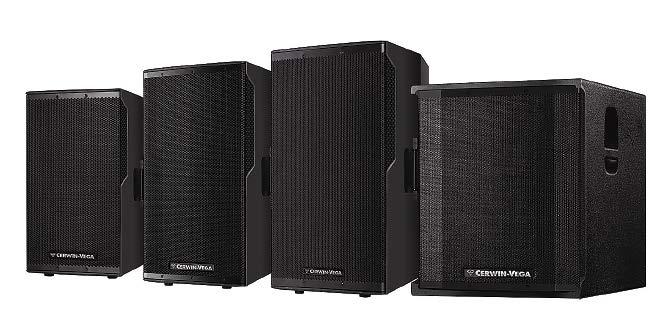

five DSP modes. Housed in polymer enclosures, the CVE-10, CVE-12 and CVE-15 weigh between 15kg and 18kg and like the CVE-18s can be paired with other CVE cabinets via a Bluetooth connection.
five DSP modes. Housed in polymer enclosures, the CVE-10, CVE-12 and CVE-15 weigh between 15kg and 18kg and like the CVE-18s can be paired with other CVE cabinets via a Bluetooth connection.
The larger CVX series includes the 1,500W-rated CVX-10 and CVX-15 tops with the 2,000W-rated CVX-18s and CVX-21s subwoofers. All four cabinets include Class-D amplification, come with a three-channel mixer and include three XLR outputs with two XLR inputs. The top enclosures are composed of lightweight polymer whereas the subwoofers are built from 18mm Birch plywood and
The larger CVX series includes the 1,500W-rated CVX-10 and CVX-15 tops with the 2,000W-rated CVX-18s and CVX-21s subwoofers. All four cabinets include Class-D amplification, come with a three-channel mixer and include three XLR outputs with two XLR inputs. The top enclosures are composed of lightweight polymer whereas the subwoofers are built from 18mm Birch plywood and protected with
Comprising five powered speakers, the CVXL are the largest and most powerful of the CV series group and are suitable for medium to large houses of worship. The single 12-, 15-, or dual 15-inch wooden tops
Comprising five powered speakers, the CVXL are the largest and most powerful of the CV series group and are suitable for medium to large houses of worship. The single 12-, 15-, or dual 15-inch wooden tops
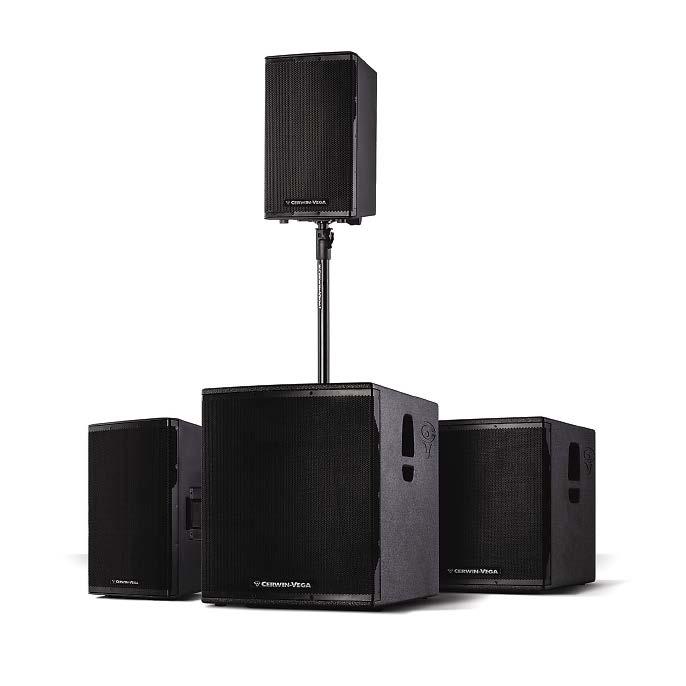




driver operating within a 55Hz–18kHz (±3dB) frequency range. Capable of delivering a maximum SPL of 135dB and 137dB respectively, the CVXL-115 and CVXL-215 models can extend the low frequencies down to 47Hz.
driver operating within a 55Hz–18kHz (±3dB) frequency range. Capable of delivering a maximum SPL of 135dB and 137dB respectively, the CVXL-115 and CVXL-215 models can extend the low frequencies down to 47Hz.
www.cerwinvega.com
www.cerwinvega.com
ADAMSON IS-SERIES 60 ADB LIGHTING KLEMANTIS/IMAGO 72 AKG C636/P5I/LC617/HC644 63 ANALOG WAY RCU SHOW SEQUENCER 68 SERIES 62 AUDIO-TECHNICA ATM350 ADDITIONS 64 BLACKMAGIC DESIGN URSA MINI PRO 4.6K CAMERA 66 CAMEO ZENIT SERIES 72 CERWIN VEGA CVE/CVX/CVXL SERIES 58 CHAUVET PROFESSIONAL MAVERICK MK3 WASH 70 CHRISTIE CCP2308/PANDORAS BOX OCTO SERVER 66 CLAYPAKY AXCOR PROFILE 900/K-EYE HCR 72 D3 TECHNOLOGIES 2X4PRO 66 DBTECHNOLOGIES B*H SERIES/SUB600 SERIES 61 DIGITAL PROJECTION E-VISION LASER 10K/4K-UHD 69 ELATION PROFESSIONAL PROTEUS 71 ELECTRO-VOICE X12-125F FLYING SUBWOOFER 62 EPSON L-25000U PROJECTOR 69 EXTRON STUDIOSTATION 64 GLP JDC1/IMPRESSION S350 70 GRASS VALLEY LDX 82 CAMERAS 67 HK AUDIO LUCAS NANO 602 63 K-ARRAY DOMINO SERIES 62 LAB.GRUPPEN D SERIES SLIMLINE 63 LD SYSTEMS MAUI 5 GO 61 MA LIGHTING DOT2 V1.3/GRANDMA2 V3.3 70 MARTIN PROFESSIONAL THRILL SERIES 73 MC2 DELTA SERIES 63 NEWTEK MEDIA DS 68 NEXO GEO M10 60 PANASONIC PT-RZ21K PROJECTOR 69 QSC K.2 SERIES 62 RENKUS-HEINZ C SERIES/T SERIES 60 ROBE PATT 2017/PIXELPATT 70 A/V • LIGHTING • LIVE SOUND • INSTALLATION • BROADCAST • RECORDING
58 WORSHIP AVL July-August 2017
ADAMSON IS-SERIES 60 ADB LIGHTING KLEMANTIS/IMAGO 72 AKG C636/P5I/LC617/HC644 63 ANALOG WAY RCU SHOW SEQUENCER 68 SERIES 62 AUDIO-TECHNICA ATM350 ADDITIONS 64 BLACKMAGIC DESIGN URSA MINI PRO 4.6K CAMERA 66 CAMEO ZENIT SERIES 72 CERWIN VEGA CVE/CVX/CVXL SERIES 58 CHAUVET PROFESSIONAL MAVERICK MK3 WASH 70 CHRISTIE CCP2308/PANDORAS BOX OCTO SERVER 66 CLAYPAKY AXCOR PROFILE 900/K-EYE HCR 72 D3 TECHNOLOGIES 2X4PRO 66 DBTECHNOLOGIES B*H SERIES/SUB600 SERIES 61 DIGITAL PROJECTION E-VISION LASER 10K/4K-UHD 69 ELATION PROFESSIONAL PROTEUS 71 ELECTRO-VOICE X12-125F FLYING SUBWOOFER 62 EPSON L-25000U PROJECTOR 69 EXTRON STUDIOSTATION 64 GLP JDC1/IMPRESSION S350 70 GRASS VALLEY LDX 82 CAMERAS 67 HK AUDIO LUCAS NANO 602 63 K-ARRAY DOMINO SERIES 62 LAB.GRUPPEN D SERIES SLIMLINE 63 LD SYSTEMS MAUI 5 GO 61 MA LIGHTING DOT2 V1.3/GRANDMA2 V3.3 70 MARTIN PROFESSIONAL THRILL SERIES 73 MC2 DELTA SERIES 63 NEWTEK MEDIA DS 68 NEXO GEO M10 60 PANASONIC PT-RZ21K PROJECTOR 69 QSC K.2 SERIES 62 RENKUS-HEINZ C SERIES/T SERIES 60 ROBE PATT 2017/PIXELPATT 70 A/V • LIGHTING • LIVE SOUND • INSTALLATION • BROADCAST • RECORDING
58 WORSHIP AVL July-August 2017 The CVE family
Kobra
• Closely-spaced full-range sound sources



• Perfect phase response
• Covers long distances uniformly
• Stainless steel frame with a fine finish
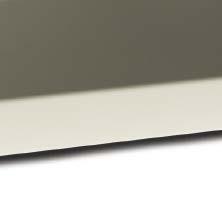

No
waveguides,
www.k-array.com
horns, no
no reflex. Pure Array Technology
#unique
KK102
More power, longer throw, same size
DEVELOPED WITH long-throw applications in mind, Nexo has unveiled the latest Geo loudspeaker in the form of the M10. The speaker is stated to be twice as powerful as it sibling, the Geo M6, while drawing on structural and acoustic innovations developed in the STM modular series. However, its silhouette is still similar to the M6.


The M10 houses a single 10-inch neodymium LF driver paired with a 1.4-inch titanium diaphragm HF driver. The cabinet itself is an injection-moulded reticulate urethane co-polymer enclosure with a footprint measuring 531mm x 288mm x 355mm. There are two versions of the M10 cabinet, offering 12.5° and 25° of vertical dispersion. Both offer 80°/120° horizontal dispersion
which can reportedly be configured manually, without tools, by removing the magnetic grille and adjusting the flange fixing system. The cabinet weights 21kg and can be ordered in the full range of RAL colour options.
According to the French
Touring-inspired integration
ADAMSON UNVEILED its new series of integration loudspeakers alongside a new subwoofer and an addition for the S Series. At launch, the IS-Series comprises the IS7 full-range and IS118 subwoofer. The manufacturer describes the cabinets as packing its ‘sophisticated tourlevel technology into architecturally pleasing housings that can be used in a range of applications from performing arts centres to sports venues, conference centres and houses of worship.’
The IS7 is a two-way, full-range line array cabinet containing two ND7-X5 7-inch neodymium drivers and an NH3 1.4-inch-exit compression driver.
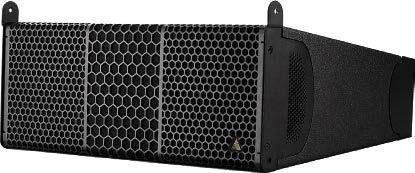
Its waveguide produces a slightly curved wavefront with a nominal dispersion pattern of 100° x 12.5° (H x V). The manufacturer claims that the waveguide’s efficiency allows for increased vertical dispersion without sacrificing HF presence in the far field, while its Controlled Summation Technology reportedly eliminates the low-mid lobing normally associated with two-way line source systems. The companion IS118 subwoofer is front-loaded with a lightweight, long excursion 18-inch ND18-S Kevlar neodymium driver making use of Adamson’s Advanced Cone Architecture and a 4-inch voice coil.
Reinvention at Renkus-Heinz
RENKUS-HEINZ HAS reinvented a pair of its notable loudspeaker series. The new C Series loudspeakers, designed for installed sound applications, are the next generation of the CF and CFX Series, while the T Series evolves from the TRX Series and targets both installations and live sound.
The C Series aims to serve as a ‘cost-effective solution for theatres and performing arts spaces, houses of worship, multiuse venues and public spaces’.
Formed from a multitude of
systems, the range is divided between CA (amplified) and CX (passive) models, all of which are
manufacturer, the use of the single 10-inch driver offers several advantages over the more commonly used double 6-inch, the principal benefit being ‘a much lower frequency response from a two-way cabinet’, while the box keeps a narrow profile and its height provides for tighter inter-cabinet angles.
A new companion subwoofer has also been launched alongside the Geo M10. The MSub15 weighs 36kg and is operable in omni or cardioid mode thanks to front and back connection plates. The MSub15s are the same width as the M10 cabinets, but two subs are equivalent in height to three M10s. They include bumpers on each corner and side handles.
The M10 can be flown or
groundstacked, with or without the MSub15, while up to 12 M10 or 8 MSub15 modules can be combined in a single flown column. Alternatively, the M10 elements can be groundstacked on top of the MSub15s with between -12° to +12° of tilt.
The new cabinets also use an internal three-point rigging system with automatic locking. Two different bumper options are available, with an optional expansion bar, and extension accessory for groundstacking. For power, Nexo’s NXAMP4x4 TDcontroller is capable of powering up to four M10 or three subs per channel. The system can be controlled over a network using Dante, Ethersound or an AES/EBU digital expansion card.
www.nexo-sa.com
Finishes are standard black and white, with RAL colours available on demand.
Both models’ cabinet construction uses marine-grade birch plywood and aircraft-grade steel. The IS7 is equipped with NL4 connectors and screw terminals while the IS118 has screw terminals available on demand. A plate-and-screw rigging solution is recessed in the interior of the rear rigging fins to aid installation.
The latest addition to the S-Series is a narrow-dispersion version of the S10 two-way cabinet offering an 80° x 10° (H x V) pattern. ‘Based on requests from our strong clientele of touring users, this narrow version of the S10 was developed to increase the long-throw capability of S-Series packages and expand their usability and performance in reflective spaces,’ explained Adamson’s Marc Weber.
www.adamsonsystems.com
available in a black or white finish. They also include the latest version of Renkus-Heinz’ Complex Conic
Horns with updated drivers. Meanwhile, the T Series is also split between powered (TA Series) and passive (TX Series) models and includes the latest Complex Conic Horn technology. Where this range differs is that each system is built to order with customisation options including myriad horn patterns, as well as colour matching and weather resistant finishes. T Series cabinets also contain redesigned HF and LF drivers.
www.renkus-heinz.com
60 WORSHIP AVL July-August 2017 PRODUCTS
Adamson’s IS7 cabinet
A single Geo M10 enclosure
LD takes Maui on the go
DESIGNED FOR small-scale applications, the Maui 5 Go is the world’s first mobile, battery-powered column-PA system according to its German manufacturer, LD Systems. The lithium-ion replacement batteries can provide up to six hours
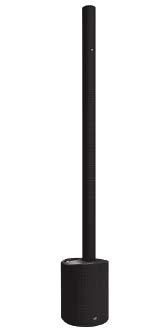
of battery life from a single charge and can be instantly replaced using Quick-Swap technology.
The 400W RMS-rated system is equipped with both a microphone and a four-channel mixer with individual input, main and

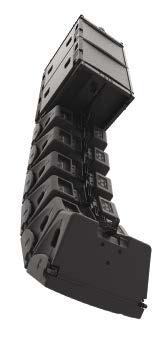

subwoofer level controls and a variable HF boost together. Further features of the 13kg four-piece speaker system include multi-pin connectors for quick assembly, Bluetooth connectivity and DSP offering


dBTechnologies premieres the B·H series

DBTECHNOLOGIES HAS created




the B·H series to deliver accurate audio reproduction whilst producing efficient sonic performances in multi-functional applications. The four two-way models in this newly developed series each combine a Class D amplifier capable of providing SPL up to 126.5dB. Each of the 8-, 10-, 12- and 15-inch woofer models are equipped with 1-inch compression drivers coupled to an asymmetrical horn to ensure a wide and uniform throw pattern. Internal DSP comes in the form of a Flat or Boost EQ switch, allowing sourced BGM to be either faithfully reproduced or boosted according to the environment.
Weighing between 6.4kg and 17.3kg, the cabinets incorporate full grille design. Whilst portability is enhanced with the addition of three handles, multi-functionality is assured by dual stage monitor angles and pole
cup for use as a portable PA system when mounted onto a subwoofer.
In addition to the new B-H series, the Italian manufacturer has also introduced two subwoofers designed to complement its full-range Opera
a multiband limiter, equaliser, compressor and crossover functions. Flexibility is enhanced owing to its immunity to system feedback, promoting its use as a stage monitor.


www.ld-systems.com



cabinets as part of the Sub 600 series. Both models feature a 600W RMS Class-D amplifier with SMPS. The Sub 615 is equipped with a 15-inch transducer while this is increased to 18 inches for the Sub 618. This results in a high maximum stated SPL for the Sub 618 of 133dB.
Users are reportedly able to form PA systems with a single sub and two fullrange speakers without the need for any external processing or crossover. Controls on the amp panel allow users to operate with mono or stereo feeds, invert polarity and select the output link mode. A Sub Mode switch boosts the low frequency EQ.
www.dbtechnologies.com
PRODUCTS Thinking. Inside the box. www.nexo-sa.com INSIDE THE WORLD’S MOST ADVANCED COMPACT LINE ARRAY BOX 131dB and LF down to 59Hz from a single 10" driver-equipped line array box? You better believe it. NOW SHIPPING
QSC scales K.2
QSC HAS released the second generation K Family with the K.2 Series, formed from the 8-inch K8.2, 10-inch K10.2 and 12-inch K12.2. Each powered model features a variety of preset contours for common applications, including as a stage monitor, for dance music, for amplifying musical instruments or for use with handheld microphones. Users of the K.2 systems will have the ability to store scenes that recall settings for input type, delay, EQ, crossover and selected contour. All three units can be deployed as either
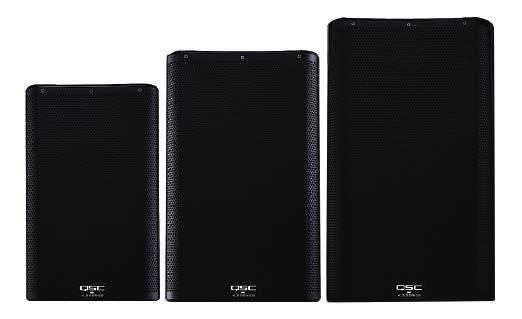
Flying low
THE NEWEST member of the X-Line Advance family has been unveiled as the X12-125F subwoofer. Designed for use with both Electro-Voice X1 and X2 arrays, the dual 15-inch subwoofer houses high-output transducers in a compact enclosure delivering a stated 9,600W output.
The subwoofer can either be groundstacked or flown, and features the family’s Integrated Rigging System for ‘quick, secure and seamless deployment’ in arrays.
a flown PA system, as a floor monitor, wall- or truss-mounted for either straight-firing or with a 7.5° down tilt. They each contain a 2,000W power module matched to its woofers and compression drivers. Furthermore, QSC’s Directivity-Matched Transition (DMT) is built in to provide smooth coverage across the listening area, while on-board DSP facilitates intrinsic correction voicing and advanced system management.
Launched alongside the full-range models is the KS212C cardioid
and small venues, the KS212C is designed to minimise undesirable low frequencies with dual 12-inch long-excursion drivers configured in a 6th order bandpass chamber. It is powered by a 3,600W amp, controlled by the system’s DSP and reportedly
the front of the subwoofer than at the rear. Preset scenes can be recalled and the full-range models can be mounted on a 35mm speaker pole via two M20 sockets in either vertical or horizontal deployment.
www.qsc.com
Having been sonically matched with the series’ full-range enclosures, as well as the X12-128 groundstacked 18-inch subwoofer, the new flying cabinet is stated to complement the existing models in a range of
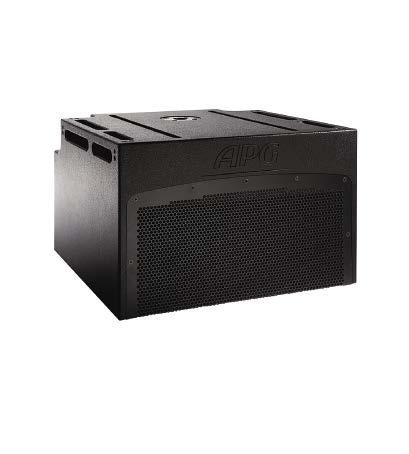
Bass for no space
the 12-inch SB112, 1,000W for the 15-inch SB115-M2 and 1,400W for the 18-inch SB118.
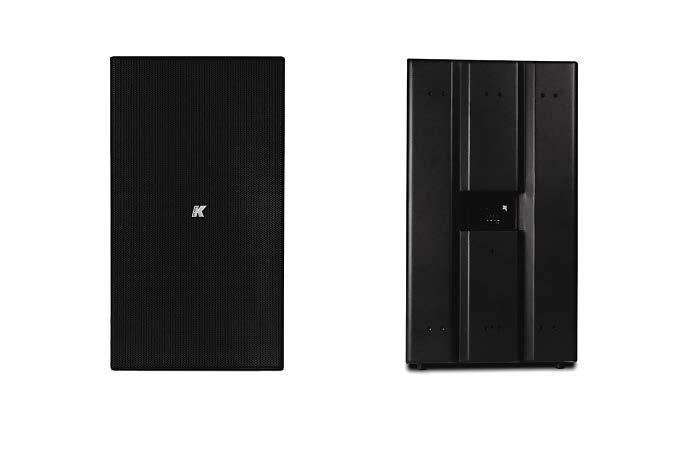
The smaller SB110 and SB112 enclosures host a ventilated ferrite cone driver, while the SB115-M2 and SB118 feature a neodymium driver.
possible configurations, including a flown three-way system with X1 or X2 mains and X12-125F as subwoofer; a flown four-way system with X1 or X2 mains, with X12-125F flown next to mains in LF mode and X12-128
as a groundstacked subwoofer; a flown three-way system with X1 or X2 mains and X12-125F above mains as subwoofer in single flown array; a flown four-way system with X1 or X2 mains and X12-125F above mains in LF mode in single flown array with X12-128 ground stacked as subwoofer; and groundstacked in LF mode, with X1 or X2 above as mains and X12-128 as a centre mono array.
www.electrovoice.com
Dominos hit the deck
THE NEW Domino Series from K-array is a line of full-range stainless steel loudspeakers that offer plug-and-play functionality and the ability to be driven by any amplifier.
reinforcement in applications where space is an issue. The SB Series comprises four models ranging in size from 10- to 18- inches.
According to the manufacturer they were all engineered using the same acoustic load based on a variation of a band pass design to maximise performance – providing 300W for the 10-inch SB110, 600W for
Furthermore, the SB112 can be combined with MX and DX series speakers to form portable FOH systems for break out services, while the SB115-M2 can also be deployed for distributed audio in larger-scale installations. The slots in the top of the enclosure allow for coupling with APG’s DX12 and DX15 speakers to form drum-fill systems on stage. The SB118 is also designed to complement DX and Uniline Compact systems and can function as a compact drum-fill or stage fill setup.

www.apgaudio.com
The series comprises three full-range models, the KF26, KF210 and KF212. The KF26 is the smallest of the three and measures less than 12cm deep. It houses a 6-inch woofer and a 2-inch neodymium magnet woofer coaxially mounted plus a 6-inch passive radiator to extend the bass response. The KF26 has a selectable impedance (8/32) and 90° horizontal and vertical coverage. It can reportedly be transformed into a self-powered speaker just by inserting the specific amplifier accessory, KA1-FF. It offers a maximum of 109dB, said to make it ideal for smaller installations.
The KF210
cabinets, there are also a range of optional accessories available for each model, such as a flush mount recessing frame to further hide the speakers. All three models can also be covered in K-array’s 24K gold-plated finish in addition to the standard black and white renderings.
www.k-array.com
62 WORSHIP AVL July-August 2017 PRODUCTS
The 15-inch SB115-M2
Electro-Voice’s X-Line Advance flying sub
Lucas Nano comes to new price point
HK AUDIO has made an addition to its Lucas Nano series of portable loudspeaker systems with the Lucas Nano 602 occupying the series’ lowest price point. The manufacturer states that the 602 is an ideal complement for DJs or musicians that want to still use their own external mixer. With a 10-inch subwoofer base and two satellites offering 4.5-inch woofer and a 1-inch tweeter, the system has a maximum SPL of 130dB and caters for audience sizes up to 200. Featuring one stereo input, the 602 column boasts the ability to be deployed in its optimum 2.1
D Series on a diet
configuration in ‘seconds’ and it can be combined with any other model in the Lucas Nano 600 series to form a twin stereo system if more power is required. The cabinet weighs 16.3kg, meaning it can transported with one hand, with the satellites mounted inside the subwoofer. Also employed inside the enclosure is a Multicell Transformer that claims to deliver ‘the quality performance of a large high-frequency horn at a fraction of the size’ and anti-resonance bracing for efficient power transfer.
www.hkaudio.com
Power and processing combines with Delta
THE NEW Delta amplifier range sees British manufacturer MC2 Audio add combined power and audio processing to its line-up in a single unit. The range comprises six networkable ‘power processing’ amplifiers as well as what the manufacturer terms non-DSP derivatives that instead accommodate Dante. The Delta’s processing technology present has been borrowed from sister company XTA’s DSP platform.
Accepting analogue, AES3 digital and optional Dante networked audio, the DSP-enabled variants can reportedly connect to any source and make it available over the network, as well as processing four additional channels with local analogue outputs to connect to non-DSP Delta or traditional amplifiers. Additionally, the auxiliary output channels are fed back onto the Dante network. All input processing channels feature a suite of XTA EQ, as well as dynamic EQ. All eight output
processing channels can include FIR filter data and will accept industry standard presets created for XTA’s other processors.
The non-DSP Delta models offer a 4-channel 96kHz Dante input option, allowing a single network cable to connect the processed audio from the DSP amp to any number of non - DSP slave Delta amplifiers. This can be switched back to regular 4-channel analogue if required.

In terms of connectivity, the amps can be remote controlled via Ethernet, USB and RS-485, with relay of either USB or Ethernet control via RS485 to work with legacy products.
Configuration of the amplifier’s processing is through XTA’s AudioCore application, with tuning and monitoring of a network of Delta DSP amplifiers handled wirelessly by the DeltaDirect iPad app.
www.mc2-audio.co.uk
SLIMLINE VERSIONS
Lab.gruppen’s D Series amplifiers have been released offering 4,000W, 2,000W and 1,000W for the D 40:4L, D 20:4L and D 10:4L respectively. The 4-channel, 1U amps claim to offer a power output that rivals ‘alternative 8-channel models but in a scalable form’.

Each model is available with Lake processing while also integrating Lab.gruppen’s Rational Power Management (RPM) technology that first debuted with the D Series. RPM allows power to be allocated across channels without the need to reduce
also feature the manufacturer’s IDEEA (IntelliDrive Energy Efficient Amplifier) output stage, offering both 70V and 100V drive as well as low impedance.
The amplifiers are also supported by the manufacturer’s CAFÉ (Configuring Amplifiers for the Environment) software which provides system design aid and other time saving features to ensure optimised running costs.
www.labgruppen.com
Mics for all occasions
AKG HAS introduced a range of new hands - free and handheld microphones. For presentations, the Harman-owned brand has released the HC644 head-worn and LC617 lavalier microphones that both feature updated designs stated to be resistant to moisture and are also compatible with the manufacturer’s bodypack transmitters.
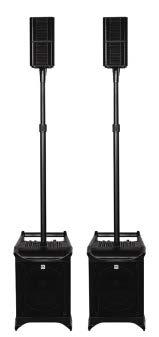
that can be automatically configured using the Harman Connect PA. At its core, the mic is essentially an AKG P5 dynamic vocal microphone with a supercardioid polar pattern and with everything needed to work with the Connect PA system
miniature condenser microphone that features a slim headband. The LC617 is a clip-on omnidirectional lavalier mic with rotating clip. Both microphones are stated to offer ‘exceptional RF shielding’ and both house a MicroDot connector allowing them to interface with most major wireless microphone systems. There are black and beige colour options to suit different clothes or skin tones. In terms of new handheld microphone models, AKG has unveiled the P5i, the first microphone
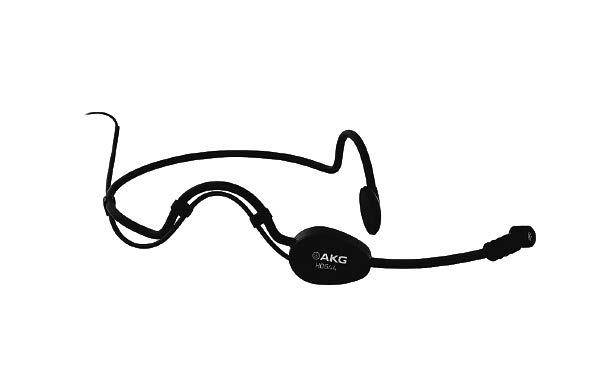
is a handheld condenser microphone designed to reject feedback and handling noise through the use of a uniform cardioid polar pattern and double shock suspension system. A multilayer protection system comprising a foam layer behind the grille and a magnetically attached mesh layer on top is stated to prevent unwanted pop noises.
www.akg.com
July-August 2017 WORSHIP AVL 63 PRODUCTS
The new D Series Slimline models
The Lucas Nano 602
MC2 Audio’s Delta DSP80
The HC644 headworn mic
Audio-Technica has a mic for almost any instrument
AUDIO-TECHNICA HAS built upon its ATM350 series with the release of the ATM350a microphone packages. These are cardioid condenser instrument microphones designed with six specific configurations for mounting on instruments such as woodwinds, strings, brass, percussion, drums and piano.
The ATM350a microphones are capable of handling an SPL up to 159dB and feature a cardioid polar pattern to minimise side and rear pickup and protect from feedback. A switchable 80Hz hi-pass filter is incorporated as part of the in-line power module to reduce ambient noise.
Making use of the manufacturer’s UniMount system, the ATM350a mics offer a variety of mounting options, such as a drum mount, magnetic
piano mount, universal clip-on mount, expandable woodwind mount and a pair of flexible goosenecks, which can be attached to any of the mounts.
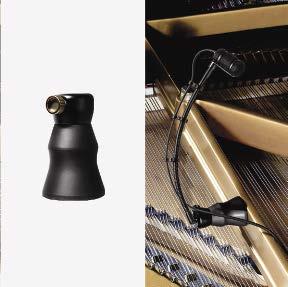
The ATM350U and ATM350UL are the 5-inch and 9-inch gooseneck models, respectively. Both are cardioid condenser instrument mics with a universal clip-on mounting system and include an AT8543 power module, AT8468 violin mount with a ‘hookand-loop’ fastening method and a protective carry case in addition to the ATM350a microphone itself.
The ATM350PL, ATM350D and ATM350W systems feature the ATM350a with the piano, drum
and woodwind mounting system respectively. The piano mounting system is a 9-inch gooseneck, while the drum and woodwind are 5-inch versions All three include the power module, violin mount and protective case.
The ATM350UcW, meanwhile, is a wireless version of the ATM350a. It includes the ATM350acW microphone itself, terminated with a locking 4-pin connector for use with the manufacturer’s UniPak body-pack wireless transmitters, an AT8491U clipon mount, AT8490 5-inch gooseneck, violin mount and carrying case.
www.audio-technica.com
Sennheiser keeps pace with spectrum changes
SENNHEISER RECENTLY announced that its evolution wireless 300 and 500 series microphone systems have been treated to additional frequency variants in anticipation of the impending spectrum allocation
UHD in transit
THE TRANSIT MC 3202 HD is Sommer Cable’s solution to meet the growing requirements for UHD signal transmission. A UHD-SDI three-inone hybrid cable, it combines three UHD video (BNC), two digital audio (three-pole XLR) and a camera power supply (such as a four-pole XLR). The manufacturer describes the cable as being flexible and ‘easy to
reel’ and has designed it to handle long-distance transmissions with low damping values.
With UHD signals delivering several times the resolution of Full HD, a challenge is often faced in connecting broadcast production equipment.
‘With that in mind, we developed the new
One-touch recording from StudioStation
EXTRON HAS developed an allin-one recording solution that aims to take the hassle out of recording high-quality video and audio presentations.

The one-touch solution only reportedly requires a user to insert a USB stick and press the record button to begin, making it ideal for students, classrooms or volunteer house of worship teams.
The StudioStation system uses Extron and signal processing enabling the recording of ‘nearly all’ HDMI source resolutions.

changes coming to both Canada and the USA.
These systems will therefore now cover the 470MHz to 516MHz range, adhering to the A1 variant.
www.sennheiser.com
Transit cable,’ said Pascal Miguet, Sommer product and

applications where a stable UHD signal transmission and at the same time a compact size, are important.’
The default recording setup is configured for 720p at 5Mbps, producing an MP4 media file which is compatible with virtually all media players and editing software. Via the embedded web page, users can also customise the default configuration to meet the needs of varying applications.
‘For customers searching for a simple recording solution that works right out of the box, StudioStation delivers,’ said Extron’s Casey Hall ‘StudioStation automates common functions and bypasses many of the hassles associated with computerbased recording systems.’
www.extron.com
64 WORSHIP AVL July-August 2017 PRODUCTS
ATM350PL magnetic piano mount
The Extron StudioStation
The new 300 wireless transmitter
ICONYX Gen5 steerable loudspeakers deliver clarity to every seat.
ICONYX Gen5 steerable loudspeakers deliver clarity to every seat.

It didn’t matter how far back their seats were. Or how cavernous the hall was. All they heard – all they felt – was sound that was warm, intelligible and personal. With clear, precisely-controlled sound from Iconyx Gen5 steerable loudspeakers, their seats were the best in the house. To learn more or for a demo, visit www.renkus-heinz.com.
It didn’t matter how far back their seats were. Or how cavernous the hall was. All they heard – all they felt – was sound that was warm, intelligible and personal. With clear, precisely-controlled sound from Iconyx Gen5 steerable loudspeakers, their seats were the best in the house. To learn more or for a demo, visit www.renkus-heinz.com.
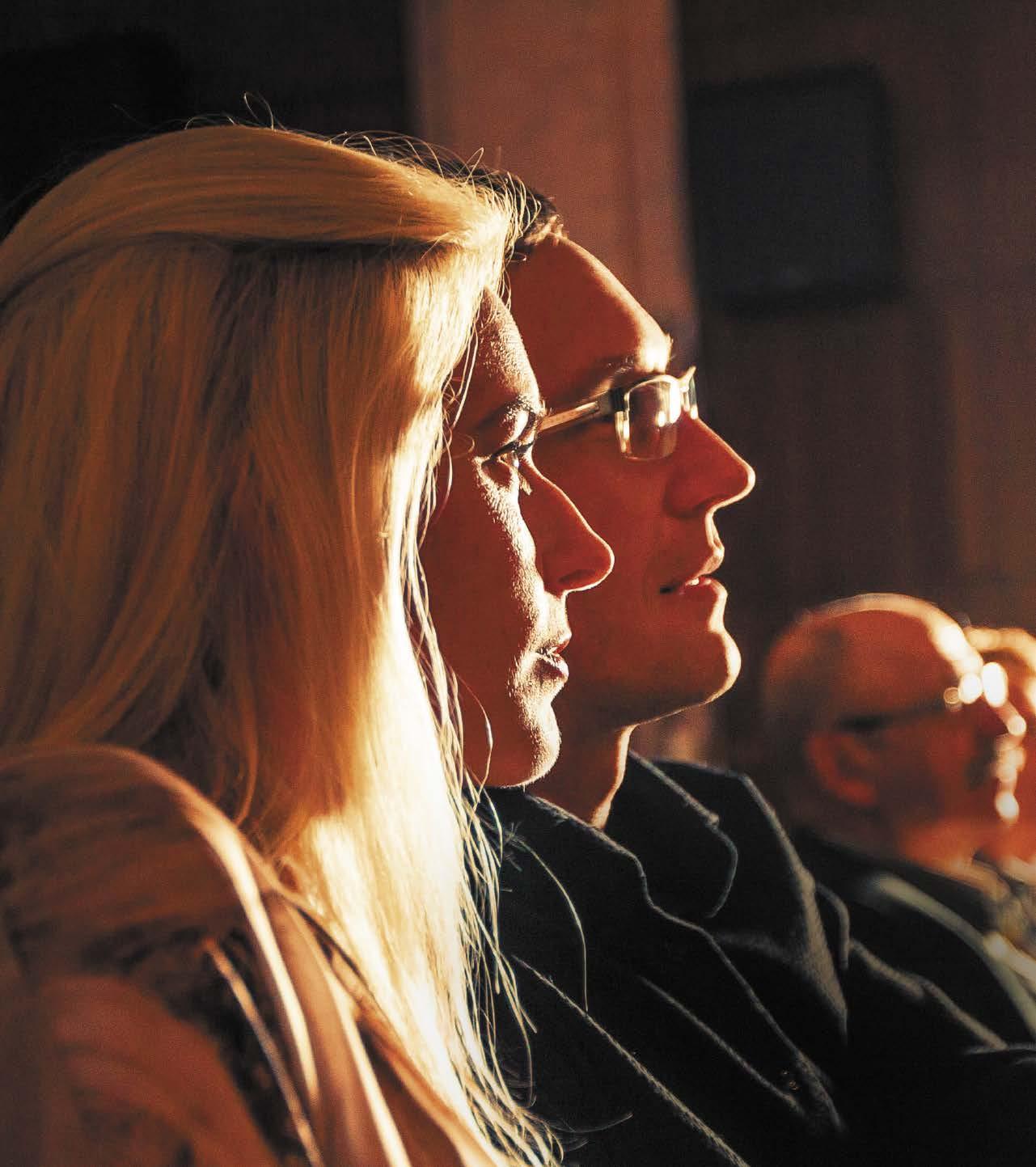 ©2016 Renkus-Heinz
©2016 Renkus-Heinz
©2016 Renkus-Heinz
©2016 Renkus-Heinz
renkus-heinz.com/iconyx-gen5
renkus-heinz.com/iconyx-gen5
Steerable sound isn’t just about being heard, it’s about being understood.
Steerable sound isn’t just about being heard, it’s about being understood.
Vaddio’s RoboShot PTZ pair
VADDIO HAS extended its range of HDBaseT solutions with the launch of two new RoboShot PTZ cameras. The Roboshot 12 and RoboShot 30 HDBT cameras are designed to deliver clear detail in high-contrast and brightly lit environments with wide dynamic range. Both units can be paired with the manufacturer’s OneLink HDMI receiver, which provides camera power, control and distribution of video and
offer the features typical of Vaddio’s PTZ cameras. These include TriSynchronous Motion technology which enables simultaneous movement of the camera’s three axes (pan, tilt and zoom), the output of HDBaseT, HDMI and IP (H.264) streaming concurrently and web-based management and configuration abilities.

Whereas the RoboShot 12 offers 12x optical zoom and a 73˚ wide horizontal field of view, the RoboShot 30 is reportedly better equipped for use at medium to large venues, such as a house of worship, possessing a 30x optical zoom with a 2.3˚ (tele) to 65˚ (wide) horizontal field of view.
www.vaddio.com
A handful of features with Ursa Mini Pro 4.6K
BLACKMAGIC DESIGN
launched the Ursa Mini Pro 4.6K, suitable for use in live multicamera setups, such as houses of worship.

In terms of image quality, the camera features a custom 4.6K image sensor that captures up to 4608 x 2592 pixels with 15 stops of dynamic range and a wide colour gamut. According to the manufacturer, this is ideal for everything from standard rec. 709 broadcast HD to the latest rec. 2020 high dynamic range digital film production. There’s an external high visibility LCD status display for viewing critical shooting information, a foldout touch screen for reviewing shots without the need for an extra on-set monitor, and professional connections such as 12G-SDI, XLR audio and built-in stereo microphones. Every single control is also stated to be redundant in case of failure, including the power.
Control of the camera has also been key during the design process to provide operators with direct access to the most important camera settings without having to take their eye off the action. The camera also features a status screen that displays important information such as timecode, shutter and lens settings, battery, recording status, and audio levels. Additional features include built-in optical ND filters, a new interchangeable lens mount, dual
The camera ships alongside Blackmagic’s DaVinci Resolve Studio postproduction suite, for which two new hardware control panels have also been announced that are intended to improve colour correction workflows to be more integrated with editing workflows. The new DaVinci Resolve Micro Panel and DaVinci Resolve Mini Panel both offer three high resolution trackballs, control knobs and illuminated buttons. They feature three high resolutions trackballs, precision machined control knobs, illuminated buttons and much more. Hardware control panels are critically important for professional colour correction because the colourist needs to ‘hold the image in their hands’ as they manipulate multiple parameters at once to create new and highly stylized looks, or even make very subtle natural changes.
www.blackmagicdesign.com
The Pandoras Box Octo Server
Pandoras Box outputs boosted to eight
WITH THE release of the Octo Server, Christie’s Pandoras Box servers can provide a flexible output configuration with one to eight independent outputs at full bandwidth, promises the manufacturer. Each output can reportedly be individually warped and blended, allowing for mixed resolution setups. Together, the Octo Server and Pandoras Box software Version 6 provide 4K uncompressed video playback at 60fps and increased storage – up to two hours of 4K uncompressed video.
Version 6 of the software now features multi-user, simultaneous timeline editing, warping and content manipulation that enables multiple operators to work on a single project in real time. Widget Designer has also been improved with a completely
support for all pages and all widgets. Christie’s complete lineup of Pandoras Box servers and players have recently received a hardware update resulting in faster processing power, more memory and expanded storage. All players and servers also feature NVIDIA Quadro GPUs and Intel Xeon processors.
At the projection end of the chain, Christie has also unveiled a new lampbased projector for smaller screens that aims to bring DCI-compliant digital cinema technology within the budgets of small integrators. The CP2308 has several key features onboard including built-in automation for simplified playback, scheduling and management of content. It offers an output of 9,000 DCI lumens and supports alternative content sources
d3 pro range expands with 2x4pro
A SCALED down version of the flagship 4x4pro, the d3 Technologies 2x4pro is the latest addition to the pro series. The new server supports the manufacturer’s interchangeable VFC (Video Format Conversion) cards, enabling users to drive up to eight outputs as DVI, 3G-SDI or two DP1.2 from a single d3 2x4pro. It also features a dual 10Gbit/s media network and 2TB of solid-state storage.

‘The 2x4pro features a refined chassis with the same rugged connectors to be expected from d3s pro range servers,’ explained product development engineer, Thyge Haarberg. ‘The system has decoupled sensitive components with a floating internal chassis and a new ruggedised VFC backplane offers increased stiffness and reliability.’
www.d3technologies.com
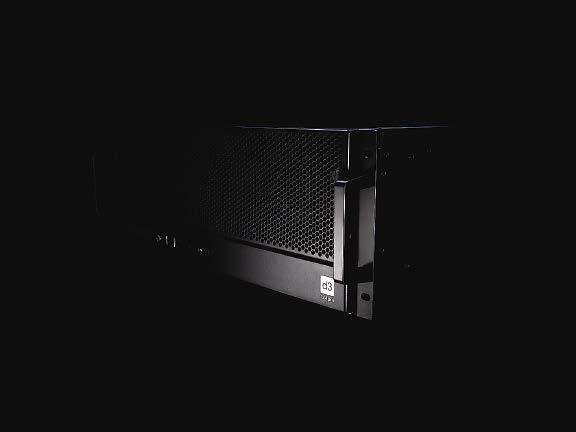
66 WORSHIP AVL July-August 2017 PRODUCTS
The d3 2x4pro
HD cameras for the needs of all
GRASS VALLEY is laying claim to ‘the first and only native HD-only camera offering an extended colour gamut and native high dynamic range operation with a full 15 F-stops’ with the release of its LDX 82 series of cameras. Comprising four upgradable models with varying levels of operational flexibility, LDX 82 is designed to offer the best possible sensitivity for all HD formats as well as the manufacturer’s XDR (Extended Dynamic Range) operation.

The four models meet a variety of production needs. LDX 82 Flex serves as the entry-level version for the acquisition of single format 1080i or 720p. Meanwhile, LDX 82 Première is able to switch between 1080i and 720p and adds the Contour Equaliser, which enables alterations to be made to shadows, mid-tones and highlights.
Designed for live HD productions, the LDX 82 Elite is able to switch between 1080i, 720p and 1080PsF while also featuring PowerCurves and Colour Protect functionality. Finally, LDX 82 WorldCam is built to withstand production under any condition and incorporates 1080p in addition to all
models utilise Grass Valley’s XensiumFT CMOS imager.
Grass Valley has also released the K-Frame V-series production switcher, which serves as a companion to its

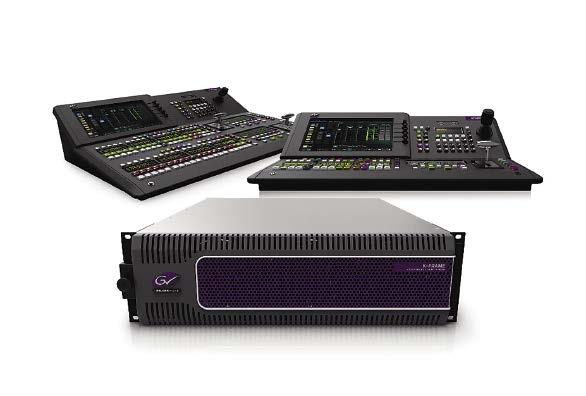
Korona switcher panel and can also be used with other K-Frame switcher panels, including Karrera and Kayenne. The 3U frame is designed for locations with limited space and is a modular solution that simplifies the upgrade to an all IP or mixed SDI and IP environment for future proofing. It has a 36x18 matrix that supports SD, HD and UHD in quad split and 2SI modes and can manage up to three licensed M/Es and two additional video processing engines.
And, in response to customer demand for the ability to purchase the GV Browser system as a standalone product, Grass Valley has unveiled the Mync personal content management tool. The tool functions as a universal media player that automatically organises content. It is available in two scalable versions: Edius Mync Basic and Edius Mync Standard, with Standard adding storyboard video editing and more advanced content management features to Basic’s media playback and content organisation.
www.grassvalley.com
PRODUCTS
The K-Frame V-series production switcher
RCU takes control of large-scale displays
to create and switch between many different layouts.
THE ANALOG WAY RCU is a show sequencer designed to control the type of large-scale displays typically employed in major arenas, stadia and lobbies that can benefit from a product able to control
‘dozens of switchers’. Based on the manufacturer’s LiveCore platform, the device provides up to 100 outputs, a large number of sources and PIPs with high-end realtime processing and video effects and allows users
Open end-to-end
NEWTEK HAS developed the MediaDS real time media encoding and live streaming video delivery system by working in collaboration with Wowza. The system claims an ‘industry first’ in that it is an endto-end streaming solution enabling the delivery of any production to any device with a web browser.
Combining Wowza’s streaming software with NewTek’s live production technology in a 1U unit, MediaDS removes the need to deliver content via a CDN or thirdparty streaming service and allows users to build a virtual CDN or edge network by connecting multiple units together. Connection is by way of either a LAN or an IP network.
MediaDS is designed to serve as
streaming
into existing web pages. The system also provides support for dedicated multiviewer monitoring, the management of image and sound quality with integrated waveform and vectorscope displays, independent colour correction tools and multichannel audio level control. Multiple
The RCU show sequencer has also been designed to control various external devices, including media servers, PTZ cameras and matrix routers. It’s stated to be able to run 365 days a year in any mission-critical environment and can be remotely operated and adapted to a user’s automated environment.
www.analogway.com
Image spotting
ROSCO LABORATORIES has designed the Image Spot LED gobo projector to save in both operational costs and space with a focus on providing an energy efficient solution within a compact unit. The 40W LED array projector, also provides users with the option to select from 190, 250 or 300beam optics.
streaming. External streaming services are also compatible, including YouTube, Facebook Live and Wowza’s CDN. With four SDI in/outs, MediaDS supports up to 1080p over 3G.
Joystick control for PTZ cameras
IN A bid to provide PTZ camera operators with simpler and more intuitive control, Sony has released the RM-IP500 remote controller. Designed for event production and broadcast applications and supporting SD card recording and IP streaming, it is compatible with the manufacturer’s BRC-X1000, BRC-H900, BRC-H800 and SRG360SHE PTZ cameras, and can also be used with the MCX-500 all-in-one HD switcher that supports SD card recording and IP streaming.

The mountable controller is equipped with a single-handed PTZ joystick. Customisation can be created to specific requirements including selectable zoom control functions including the option of seesaw (left hand) or joystick (right
hand) operation. The PTZ speed can further be adjusted with the controller’s knob and direct buttons are available for functions such as PTZ trace memory and presets.
Up to 100 cameras can be assigned over IP using the RM-IP500’s Auto IP setting, while users can program up to 100 preset camera angles. Designed with measurements of 306mm x 159mm x 224mm to allow mounting on or within most consoles, the controller delivers a range of control signal formats and control options including RS-422 and VISCA over IP.
The manufacturer’s portfolio of projectors has also undergone a recent expansion with the E Series. With a choice of XGA and WXGA resolutions, the E Series models are an extension of Sony’s existing
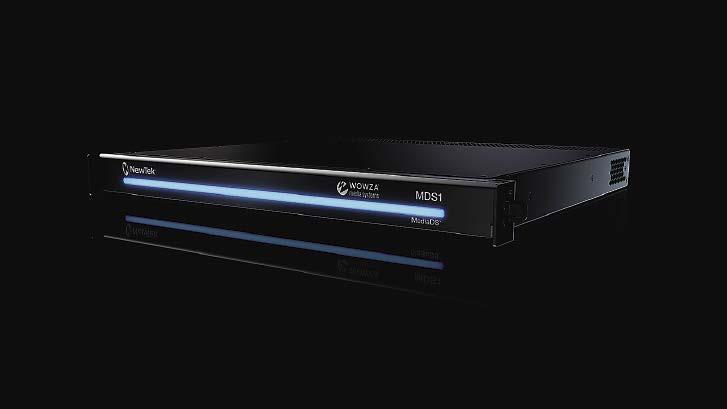
VPL-EW575, VPL-EW455, VPL-EW435, VPL-EX575, VPL-EX455 and VPLEX435 – all operate within a 3,100 to 4,100 lumens range to provide display solutions for applications with budget constraints requiring a larger image size.

The new models feature a 20,000:1 contrast ratio and integrate 3LCD BrightEra technology reportedly delivering high image quality and natural colour reproduction. The
With both indoor IP40 and outdoor IP65 versions available, Image Spot features a fan-free passive cooling system in an effort to achieve silent operation. On-board dimming controls are also included, as is DMX512 compatibility. The manufacturer has also made available a variety of accessories for customisation such as narrow, medium and wide lenses in addition to filter and diffusion options.
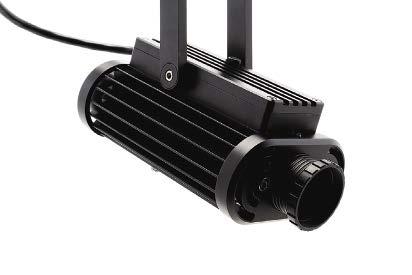
power on.
In more news, Sony has expanded the HDR production capabilities for a wide variety of its professional products. These capabilities include HD HDR Live broadcasting and Instant HDR workflow for the manufacturer’s products that comprise a camera system, servers, monitors and camcorders with software or firmware updates.
www.pro.sony.com
68 WORSHIP AVL July-August 2017 PRODUCTS
NewTek worked with Wowza for MediaDS
The Image Spot LED gobo projector
High brightness comes to 3LCD
CONSISTING OF of colour and white brightness, Epson has developed the world’s first 3LCD 25,000 lumens laser projector with the launch of the EB-L25000U. Designed for rental and staging plus permanent large venue installations, the new model integrates a fully-sealed laser optical engine with a laser-light source contributing to a high contrast ratio of 2,500,000:1. The combination of LCD panels and a phosphor wheel made up of inorganic materials is stated to ensure that the projector is capable of delivering bright and vibrant images.
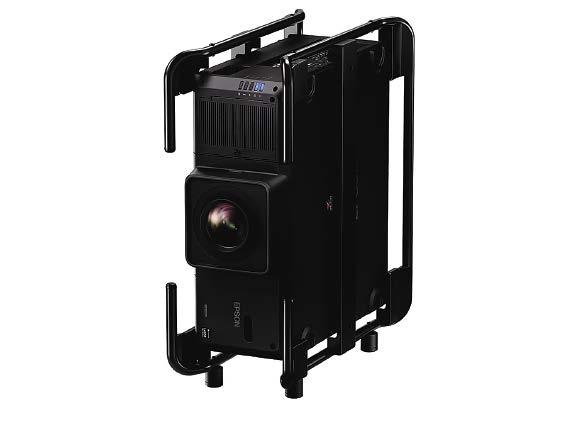
Venue flexibility is enhanced as the EB-L25000U can rotate and tilt 360° in all directions. Furthermore, it comes with an array of motorised 4K compatible lenses, which when paired with the 4K Enhancement feature, turns projected images into an immersive experience. 4K Enhancement technology accepts a 4K signal and enhances a 1080p signal to output that surpasses full HD image quality by shifting each pixel diagonally by 0.5 pixels to double the resolution.
The EB-L25000U uses advanced
Little projector, large projection
edge blending, a built-in camera for colour calibration and lens position memory function. Further features include full HD widescreen display, 4K-ready lenses, solid-state laser light source providing virtually maintenance-free 24/7 operation for up to 20,000 hours, web-based remote management and a full range of inputs including HDBaseT and 3G- SDI.
www.epson.com
Digicom processor series expanded
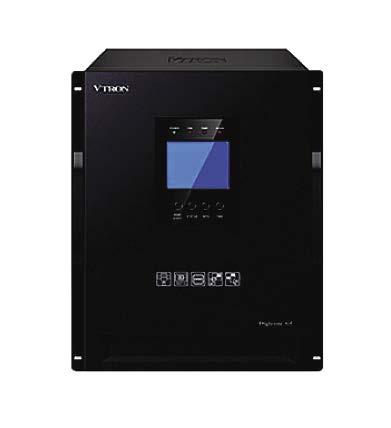
and lightweight form-factor of Panasonic’s PTRZ21K makes it a suitable option for portable applications. Don’t let the size fool you into thinking it is designed for small venues though, as the manufacturer is targeting large venues with this 20,000 lumen 3-chip DLP laser projector, joining the Solid Shine range. It features the option for WUXGA
or SXGA+ resolution and a dustproof optical system that aims to further expand the PT-RZ21K’s maintenance-free operation time. The projector also has a contrast ratio of 20,000:1 and features include Geometric Manager Pro, colour matching and edge blending functionality.
www.panasonic.com
Digital Projection’s E-Vision shines brighter
THE ARK5000 is an advanced videowall processor produced by VTron as part of its Digicom series. The unit can reportedly drive hundreds of display units and accept various input signal types. Layout content can be previewed
on a control interface before being transmitted to videowalls, which is particularly useful when an operator needs to send precise information. One Digicom Ark5000 set can drive multiple types and configurations of videowalls, thus maximising processor utilisation in venues with various setups. The processor allows real-time display and a broadcast level of seamless layout switching with its n x 750Gbps and RIET technology. By supporting multiple desktop processors, the operator can switch between the main and redundant desktop processor. Whilst videowall images can be recovered instantly after the signal board is hot swapped, additional signal boards can be added when expanding the system without rebooting the Ark5000.
www.vtron.com
TWO NEW models recently joined Digital Projection’s 3D-capable E-Vision range. Standout features for the series include picture-in-picture (PIP), edge-blending and Geometry correction together with a real-time clock for automation.
The manufacturer’s E-Vision Laser 4K-UHD is single chip DLP projector providing a 7,500 lumens option with 4K resolution. Intended for use in applications requiring 4K, it also features Dynamic Black technology that reportedly gives a contrast ratio of 6,000:1. A high contrast model, the E-Vision Laser 4K HC, boosts this contrast ratio to 20,000:1 while reducing the brightness to 4,500 lumens. Users can choose from a set of eight optional lenses to support installation from a very short throw



of 0.38:1 ratio to an extreme long throw of 8.26:1. Beyond its throw flexibility, the E-Vision Laser 4K can be installed in any orientation. It features a motorised focus, zoom and lens shift for simple image positioning and ships with Projector Control Software to facilitate multiple projector management and control.
The second new E-Vision model is the E-Vision Laser 10, whose main standout feature is its high brightness of 10,500 lumens at WUXGA (1920x1200) resolution. With laser light sources, both new E-Vision projectors benefit from being lamp and therefore maintenance free and are backed by a 20,000-hour warranty.
www.digitalprojection.com
July-August 2017 WORSHIP AVL 69 PRODUCTS
The projector can be mounted in any orientation
The E-Vision Laser 10K
The Ark5000
Panasonic’s PT-RZ21
Nostalgia sets in at Robe
ROBE IS looking to the glamour of yesteryear as it expands its Patt range of retro-style fixtures.
The first addition to the retro range is Patt 2017, an LED-driven luminaire. The concept for Patt 2017 was developed by reputable lighting designer Tim Routledge and comprises seven 30W RGBW LEDs that can be controlled together as one or individually. It can replicate a variety of colours and operate in tungsten variants for myriad effects. Still following the retro theme is PixelPatt, which also joins the Patt family and features modern LED pixel controlled technology. It consists of seven 30W RGBW LED multichips, laid out in a circle of six with one in the centre. To maintain a lightweight design, Robe’s Patt Driver remote power and data box is utilised, connecting via a four-pin XLR port.
In other news, Robe recently acquired the rights and IP to Seth Robinson’s RoboSpot, a remote follow-spot solution that is compatible with the entire BMFL range. The system is designed for situations lacking the room or practicality for an operated follow spot position. It is composed of a base station that communicates with a
A new Maverick
CHAUVET PROFESSIONAL is aiming to ‘raise the bar in terms of performance and value’ with its latest swathe of new fixtures. The new lights include the Maverick MK3 Wash, the Maverick MK1 Spot, Épix Strip IP and Ovation B1965-FC.

The new Maverick MK3 Wash builds on its MK2 processor by boosting the power output to 1,080W and adding more pixels via 27 40W Osram LEDs. Additionally, the fixture boasts 7°to 45°zoom, 16-bit dimming and a builtin virtual gobo wheel with background colour control.

The 350W Maverick MK1 Spot
promises all the main benefits of the larger MK2 Spot but in a more compact housing. The main features include a 7° to 33° zoom, a 7° to 29° beam angle, CMY colour mixing, a flat field of projection, 3-facet prism and frost as well as two gobo wheels –one rotating and one static. Also making its debut is the Épix Strip IP LED, a 1m long strip light featuring 100 RGB LEDs. The fixture can be controlled with DMX only and comes with three lens covers: Square (installed), Dome and Black. Thanks to its IP-grade housing, it is suitable for outdoor use and bright enough for
camera mounted onto the fixture which follows the tracked performer or object. A single RoboSpot base station can manage up to 12 BFMLs and features a screen that displays the view of the tracked element from the camera over an Ethernet connection. The camera’s functions, including pan/tilt, zoom and focus, are controlled remotely via DMX.
GLP offers the best of the old and the new
GLP HAS designed its new JDC1 lighting fixture to offer complete versatility as it combines a traditional single tube element that delivers clear, bright white output with a full face of 1,440 RGB LEDs. Independent control of the single tube and LED elements is provided, meaning that fixtures can be operated individually or work together to create a wide range of effects.
The tube and full face sections are both reportedly able to run continuously to deliver high output blinder and wash light effects without
reducing output or suffering thermal cut-outs. The manufacturer states that the combined solution can also operate as a ‘powerful strobe light’.
Also new from GLP is the impression S350. Targeting the mid-range market, the fixture has been developed for near silent operation and with a ‘highly efficient optical system’. With a white LED engine as its foundation, impression S350 is described as ‘producing bright clarity in the projected beam’ and as facilitating smooth dimming and even field distribution, while its output is claimed to be ‘brighter than typical 700W discharge lamp sources’.
www.glp.de
Elsewhere, Robe’s latest Robin addition has taken flight in the form of the LEDBeam 150. This fixture possesses a zoom range of between 4˚ and 62˚ and reportedly delivers fast, sweeping beams as well as serving as a wide wash light. Powered by 30W RGBW multichip LEDs, LEDBeam 150 also offers strobing abilities and 18-bit dimming with tungsten lamp effects, virtual colour wheel control of pre-programmed colours and a raft of pulsing effects.
Coinciding with LEDBeam 150’s launch is that of a static, zoom-able version: ParFect 150. Designed as an ‘affordable’ LED ACL-style beam option, ParFect 150 has all the key features of its 150 sibling and is available with a range of accessories, such as barndoors and gel frames.
www.robe.cz
daylight applications. Control of up to 20 units can be achieved via Art-Net, Kling-Net or sACN (streaming ACN) and DMX via the IP-rated Épix Drive 2000. Finally, the American manufacturer has also released the Ovation B1965-FC batten-style LED fixture that boasts RGBA-Lime colour mixing and responds to RDM, Art-Net and sACN plus standard DMX for programming and networking. It also features 16-bit dimming and multiple control personalities for both simple and complex programming schemes.
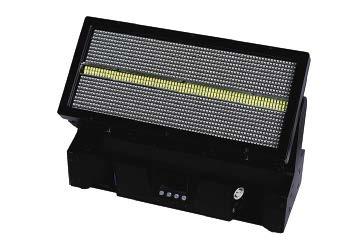

www.chauvetprofessional.com
grandMA2 learns
MA LIGHTING has released a software update for its grandMA2 lighting control system. A variety of new features and workflow updates are promised with version 3.3, including MA Fixture Share, an online solution that works to keep fixture libraries updated. Also new is the re-designed partial show read functionality, in addition to new modes of DMX output function for xPort Nodes and offset for pan/tilt. The MA VPU (Video Processing Unit) has been updated with reworked warper functionality
70 WORSHIP AVL July-August 2017 PRODUCTS
The Maverick MK3 Wash
The JDC1 combines a traditional single tube element with LEDs
PixelPatt
Patt 2017
Proteus becomes a reality



ELATION PROFESSIONAL has created a new family in the form of the IP-rated Proteus line, currently comprising the Proteus Beam and Proteus Hybrid. The Proteus Beam is a discharge-lamp beam moving head whose main features include an optical system capable of producing a 2.5° beam aperture, an internal thermal cooling system, full CMY colour mixing, 13 dichroic colours, eight rotating interchangeable and 13 static-stamped metal gobos, 5and 32-facet rotating prisms, frost filter, motorised focus, auto-focus, and a high-speed mechanical shutter and strobe. The fixture has DMX, RDM, Art-NET, and sACN protocol support, and is compatible with Elation’s E-FLY internal wireless DMX transceiver as well as housing IPrated 5-pin XLR and RJ-45 EtherCon I/O connections, a PowerCon True1 power in and a full colour 180° reversible menu display with six button touch control.
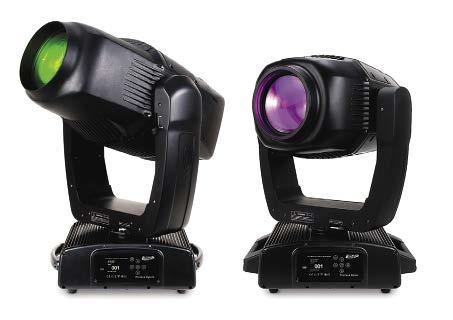
The Proteus Hybrid fixture enjoys similar connectivity. However, it is a three-in-one discharge-lamp which can be used as a beam, spot, or wash fixture. Its standout features include motorised zoom, full CMY and linear CTO colour mixing, 14 dichroic colours, eight rotating
new tricks












including pixel-exact UV mapping for 3D modelling and a snapshot/masking tool.
















The latest software release for MA Lighting’s dot2 series, meanwhile, reportedly allows users to work more efficiently. Version 1.3 brings web remote access, more master speed faders, increased effects functionality and high priority playbacks.

www.malighting.com





interchangeable and 14 staticstamped metal gobos, a full 360° bidirectional animation wheel, rotating prisms and frost filter, motorised focus and auto-focus.

Also new is the Artiste DaVinci, a ‘theatrical-grade’ LED spot that launches the Artiste series.





‘With Artiste DaVinci, we put all the design features that creative LDs ask for in a small package,’ stated sales director Eric Loader. ‘It’s full-featured yet LED-based so it offers a complete palette for the creative designer in an energy-efficient design.’

The fixture can output 13,000 lumens from its newly-designed 300W LED engine. Full CMY colour mixing is offered and supplemented by seven dichroic colours from a colour wheel. There’s also CTO colour mixing for colour temperature control. Furthermore, a frost filter is included that enables the spot fixture to be repurposed as a softer wash light.
Lastly, the American manufacturer also debuted a higher-powered version of its WW Profile fixture. The WW Profile HP is powered by 250W warm-white LED engine giving an output of 14,000 lumens.

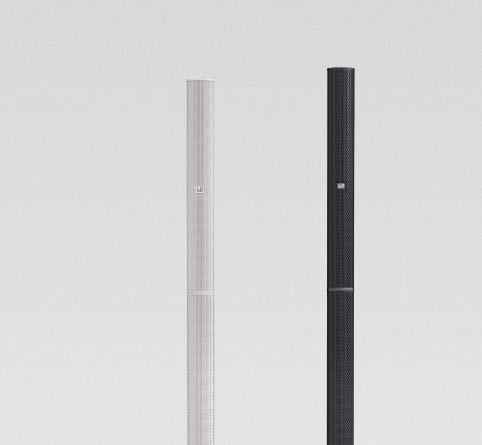
www.elationlighting.com






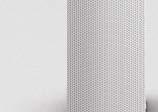
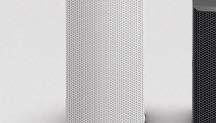






Software version 3.3 is available for grandMA2












That look in Claypaky’s Eye
CLAYPAKY’S AXCOR Profile
900 claims to be the world’s first spotlight to use an LED light source instead of a traditional discharge lamp. Powered by a white LED engine, the spotlight produces a 900W output and 24,000 lumens brightness, together with dichroic filters for colour reproduction. Alongside its high-brightness attributes, the spotlight also boasts a ‘precision’ beam shaping system capable of producing sharp projections.
In a further release from the Italian manufacturer, Claypaky’s latest LED wash light, K-Eye HCR, claims to provide complete control over the quality of all forms of white or coloured light with the inclusion
of new HCR technology. According to the manufacturer, the new HCR technology, which is an exclusive electronic platform developed by Claypaky and its parent company Osram, is intended to remove the performance difference between LED devices and traditional lamps in terms of their incomplete colour range, poor colour rendering index and lack of consistency.
At the heart of the K-Eye HCR is an LED light source consisting of a module with six chips, each for a different colour: classic red, green and blue colours, as well as amber, cyan and lime.
In other news, the latest addition to the Scenius family is the Scenius Unico, a spotlight for projecting
Cameo goes cable-free
CAMEO’S ZENIT range of all-round spotlights has been expanded with several new fixtures and a range of accessories intended for use in the professional rental and install markets. The newest addition to the series is the battery-operated, IP65rated Zenit B60 PAR light, which can be deployed both indoors and outdoors and is available in a black or chrome housing.
The fixture boasts four 15W RGBW Cree LEDs with a 50,000 hour stated lifetime, 1,900 lumens output and 11° beam spread. For extra versatility it ships with two light shaping diffusers offering a choice of 25° or 40° beam angles while
maintaining output.
In addition to seven modes of DMX, RDM and IR remote or manual control via the fixture’s display, the B60 incorporates a 2.4GHz W-DMX wireless receiver developed by Wireless Solution Sweden AB enabling wireless lighting control. The onboard lithium-ion battery, made by LG Chem, is stated to offer up to 24 hours from a single charge with an adjustable runtime in one hour increments. An intelligent control automatically calculates brightness, and the fixture’s battery management system prevents overcharging and exhaustive discharge to ensure an
effects, with six rotating gobos, a rotating prism, an animation wheel, and reportedly the ‘most sophisticated and most precise
framing system on the market today’. It boasts an ouput of 1,400W, a 6,500K colour temperature and a high CRI. The fixture can also be deployed as a wash light as it includes different diffusion filters which can be inserted gradually as required. Finally, the fixture is capable of generating a narrow beam of highly-concentrated light, with a minimum beam angle of 5°.
Finally, Claypaky’s Mythos fixture has been treated to two new features. Now named Mythos 2, the updated hybrid fixture adds ‘super-smooth’ dimming and makes use of Osram Sirius HRI 440W lamp technology.
www.claypaky.it
refresh rate, the light is also suitable for flicker-free broadcast use.

The aluminium housing features a bright OLED display with four touch buttons for configuration while a security lock prevents unauthorised menu access.
The Zenit series is rounded off with the Zenit W 600 LED washer, which the manufacturer says will be indicative of the future direction of Cameo products. As well as a new exterior design, the fixture is IP65-rated and supports wireless DMX.
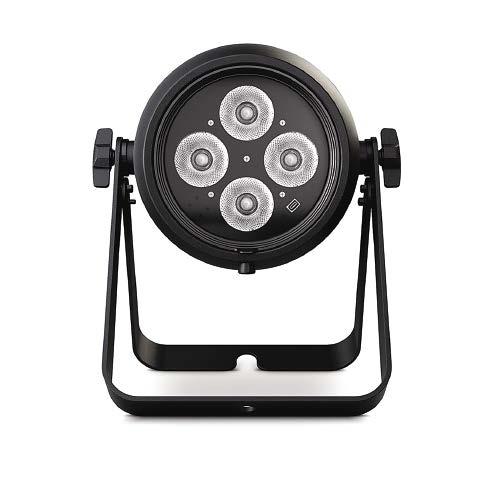
www.cameolight.com
Lighting control in the palm of your hand
OSRAM-OWNED THEATRE and stage lighting manufacturer, ADB Lighting, is offering compact control with its new tablet-based console. In addition to this, the manufacturer has also expanded the Klemantis family of lighting fixtures. The manufacturer describes its tablet-based console, Imago, as a compact and lightweight USB backlit control surface, which when connected via USB to a PC running the Hathor
lighting software, becomes a full-fledged lighting desk. The manufacturer reportedly had cost, size and ergonomics, without compromising on quality, in mind while designing the product. Its compact form factor and weight make it transportable in a backpack and flexible to install. Combined with Hathor via a USB connection to a laptop, Imago offers two DMX outputs and one DMX input as well as the possibility to send 32 universes via Ethernet.
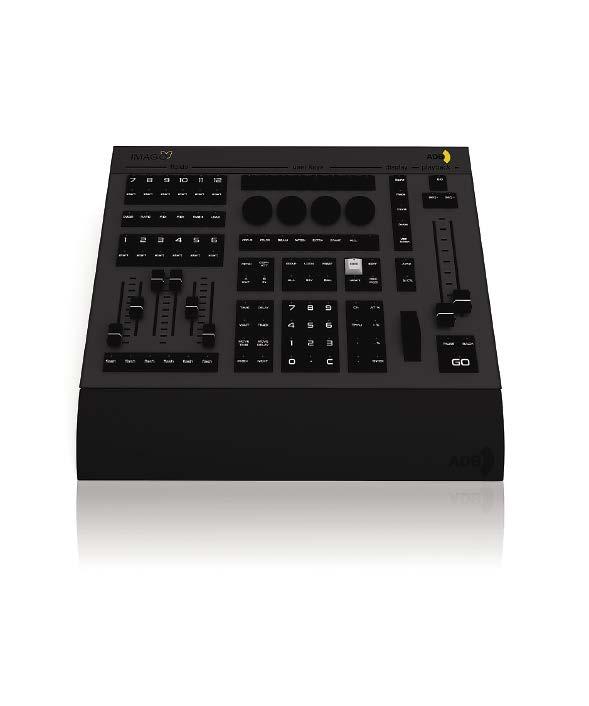
When connected to the Imago, the Imago Wing provides an additional 18 subfaders and 18 executor key control possibilities. Moving on to new fixtures, ADB has unveiled the Klemantis Asymetrix linear cyclight which has been designed both for theatrical applications as well as on-screen use. It includes HCD technology based on a six-colour LED module and control technology stated to offer a wide colour gamut from bold colours to pastels, as well as a tunable white light with a high CRI up to 97.
www.adblighting.com
72 WORSHIP PRODUCTS
ADB’s Imago console
Cameo’s Zenit B60
The Axcor Profile 900 LED spotlight
Martin Professional provides the Thrills
MARTIN PROFESSIONAL’S Thrill series of products comprises five compact solutions designed to deliver professional lighting and atmospheric effects and developed for ease of use and transportation.
The Thrill Mini Profile is a compact LED moving head with a colour wheel offering eight colours as well as white and gobo effects.
Thrill Multi-FX LED, meanwhile, is an LED lighting fixture combining laser, strobe and rotating coloured light effects.

The Thrill SlimPAR Mini LED and Thrill SlimPAR 64 LED units are LED PAR cans for use in stage, wash and up-lighting. And the Thrill Vertical Fogger is a fog machine reportedly capable of producing 7.5m high plumes.
Moving on, the Exterior Projection 1000 is described by the manufacturer as a ‘low maintenance IP66-rated LED projection fixture that offers sharper image quality,
Wrist control
more dynamic features and better reach over huge distances than any other permanent outdoor fixture on the market’. Designed for fixed installations, it features a 16,800 lumen output and the ability to run multiple effects.
Also included as part of the Exterior Projection 1000’s feature set is full CMY colour mixing, an additional colour wheel, gobos, variable frost and a continuous animation wheel with a variable angle to deliver horizontal and vertical animations.
The projector possesses a beam angle between 8° and 40° with full zoom range.


Away from lighting, the rise in popularity of LED video displays has led Martin Professional to increase its catalogue of VDO Creative LED Video products. These video pixel products are designed to add 3D stage design and IP65 outdoor-
rated options for lighting designers, using the manufacturer’s P3 System Controller for LED video.
The VDO Fatron 20, a 20mm pixel pitch video batten, is joined by the compact video pixel VDO Dotron. Both can double as DMX controlled lighting battens and integrate with the rest of the VDO range. A wide variety of field-exchangeable diffusers and lenses are available for each fixture and both can be implemented frontless if desired. Finally, the Harman brand has released new versions of its Rush atmospheric effects fluids.
The Rush Fog Fluid and Rush Haze Fluid are available in bottles of varying sizes.
Meanwhile the existing Rush Club Smoke Dual Fluid fog and haze hybrid has been re-launched with additional bottle sizes available to match the new releases.
www.martin.com
consoles running ZerOS. It provides access to channels and groups, as well as tools including Highlight and RemDim.
ZerOS has itself received an update with version 7.9.3 adding support for Lumen Radio’s CRMX Nova TX USB and Enttec’s USB Pro devices. ZerOS 7.9.3 also offers redesigned patching and setup screens.
Robert Juliat’s yellow brick road to wonderland
ZERO 88 has developed an Apple Watch app that serves as a focus remote, facilitating easy-to-access control for lighting engineers when away from the console. This removes the potential danger of handling a smartphone when working at height and was developed in response to customer feedback.
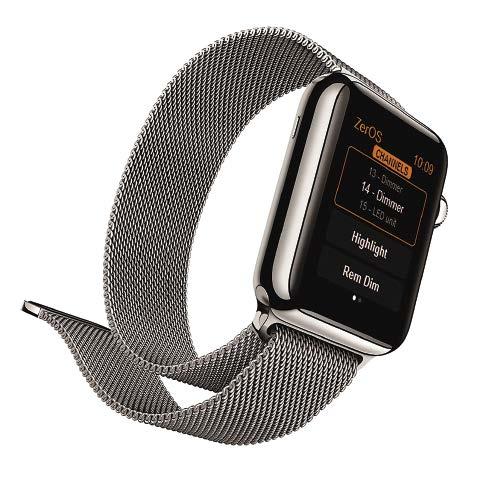
The app is part of a free update compatible with all Zero 88
Meanwhile, the new Chilli Pro 12 dimmer joins the family of Chilli Pro 24 dimmers. Available in 10A or 16A versions, the Chilli Pro 12 supplies an array of options for dimming, relay, bypass, RCD and RCBO and a new wiring chamber for easier installation with a lockable door.
Also new from the Eaton brand is the PowerCon True1 Alphapack 3. This delivers Neutrik’s locking connectivity to Zero 88’s range of three-channel portable distributed dimming devices.
www.zero88.com
OZ AND Alice are the newest additions to Robert Juliat’s family of followspots. Long-throw and shortthrow models respectively, Oz and Alice both feature a 600W cool white LED source, as well as many of the traits found in the manufacturer’s Compact range.
Robert Juliat states that ‘Oz and Alice are the first LED professional followspots to deliver a high output comparable with that of 1,200W discharge followspots’. They are designed as compact fixtures and operate silently, emitting no heat and offering electronic dimming functionality locally or remotely via DMX. A digital display, RJ-45 connector and USB port also feature, and to reduce maintenance, no lamp change is reportedly required.
Another new development on the followspot front is SpotMe, a solution that Robert Juliat has designed for its Compact and Grand ranges, which tracks performers.
Elsewhere, The Dalis family has grown with the arrival of the Dalis 862S. A shortened version of the existing Dalis 862 footlight, it measures in at half the length of its older sibling at 50cm.
And finally, the ZEP Fresnel 360LF and the ZEP profile 660SX series have both been extended with the inclusion of variable white versions. These exhibit the same brightness output as their warm white and cool white predecessors with evenness of beam and no hotspots.
www.robertjuliat.com
July-August 2017 WORSHIP AVL 73 PRODUCTS
Zero 88 has released an app for Apple Watch
The Thrill Mini Profile
Exterior Projection 1000
Oz and Alice
The Drive Methodist Church
IN 2016, THE DRIVE METHODIST

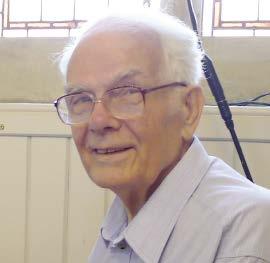
Church in the leafy Kentish town of Sevenoaks made the bold decision to completely redesign its 100-year-old sanctuary. This choice has brought the house of worship up to modern standards both in its look and its technology. The church replaced its traditional pews with upholstered seating that could be arranged in any configuration, swapped its Edwardian central pulpit for a mobile lectern which can be plugged in to any one of the mic points on the stage or distributed around the hall and installed modern audio, video and lighting solutions.


‘We closed after the Christmas services, cleared the church and in the next three months all the work was done to open again for Easter Sunday,’ recalls Trevor Harvey, head of IT and A/V at the church. ‘It was ideal because it is a quiet time of the year, liturgically.’ Normal Sunday services were held in a nearby hall on a different part of the church campus. The technical side of the refurbishment was divided into different projects. SA Sound Services handled the audio portion and installed Tannoy VX8 speakers in pairs on the main pillars with VX6s covering the entrance. Power is via Lab.gruppen E8.2 amplifiers with control from a Soundcraft LX7/2 16 desk. A variety of handheld, headworn and lectern mics from the likes of Sennheiser and AKG serve
as the sources, although the system is futureproofed with a design which does allow for the reintroduction of a worship band. A hearing loop has also remained in situ powered by an Ampetronic ILD 500.


Look and Listen Multimedia took on the visual aspect. This signal chain sees a Sony SRG-300HW camera with various presets for different events capture the image which goes through the Roland V-H1 video mixer and is fired onto the front wall by a Panasonic PT-EW730ZLEJ and split out to the rear 60-inch LG monitor and small monitors for the lectern and organ. A
laptop running SongPro v5 to display hymn lyrics and a Sony UHD player provide the other sources. ‘We are very fortunate that we can project straight onto the wall, it is invaluable on a level platform for people at the back to be able to see,’ furthers Mr Harvey. ‘That has been a real boon, particularly for organ recitals because people love to see the feet. Also, we sometimes have circular services and in that configuration people can still see the screen thanks to the large monitor over the entrance.’
Finally, the lighting solution was handled by CES. This has seen a Tiger dimmable power unit programmed with different scenes for the house lights. ‘We have six different scenes that we can have,’ adds Mr Harvey. ‘When there is an event it will usually be under the full lights, we have a scene that focuses the light on the organ, for a carol service almost everything goes out except some low lights to help people come in because we have candles all around the outside.’
The result is a total transformation that the panel of technical volunteers and the larger congregation needed to become accustomed to. ‘We said we would leave it for a year and see how it settles down and how people get used to it,’ says Mr Harvey. ‘We have a different style for the front of the church now and we’ve had very few complaints.’
One of the most surprising elements of the refurbishment for Mr Harvey has been the flooring which has had a notable effect both aesthetically and acoustically. ‘It was dark brown and pitted with 100 years of annual varnishing and it really was grim. That was sanded down to reveal the very attractive pitch pine floor tiles mounted in a herringbone pattern. I’m the organist and initially I was very worried about the upholstered seats as I thought they would kill the bright acoustics in here. But now the floor is even and polished it bounces the sound so it is a very live and bright acoustic, brighter than it was before even with the upholstered seats.’
One of the side benefits of this refurbishment has been establishing the church as a viable venue to host community events. ‘We were looking at the events we hold as well as worship when we upgraded the system,’ offers Mr Harvey. ‘The church is not only used for services but also concerts and increasingly by town organisations. As a modern church we have to provide facilities to meet the needs of local organisations.’
With this being said, the congregation will always come first and Mr Harvey is certainly sensitive to the effect a refurbishment of this scale can have on worshipers. ‘If you have worshiped in a church for many years you come to love it as it is and it is very difficult to imagine how it can be improved because you’re satisfied with it, so why change?’ he reasons. ‘We’ve done it and we’re very pleased with the result.’ www.thedrivemethodistchurch.org.uk
74 WORSHIP AVL July-August 2017 THE TECH VIEW
Trevor Harvey, head of IT and A/V
Just over a year ago, the Drive Methodist Church was comprehensively upgraded. Worship AVL finds out how the tech team and congregation are getting on with the new systems
The Drive Methodist Church
The church has been equipped with Tannoy speakers and a Sony PTZ camera
The 100-year-old sanctuary has been completely redesigned
Mosque sound made simple







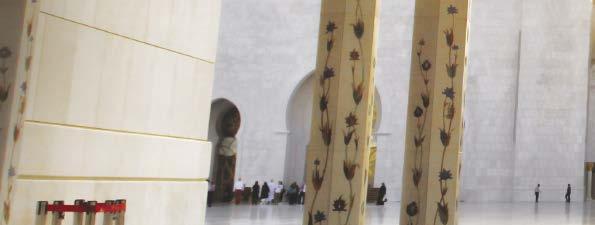







Pray with faith


“IACAD is pleased with results in development of sound system MX-6224D for Mosques from TOA, This partnership yielded a significant development of distinctive sound system for the mosques. This was achieved by dedication of engineers on both sides to add improvements which is the result of experience accumulated over 30 years.”
Commented by :

MX-6224D Digital Mixer Amplifier
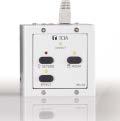




Introducing the MX-6224D, the latest digital mixer amplifier designed specifically for mosques. The MX6224D incorporates DSP function and a two channel class-D amplifier. An optional remote controller is also available, making it simple and easy to use. The MX-6224D is the perfect choice for your mosque.
We supply sound, not equipment. www.toa.com.sg I TOAasiapacific www.toa.eu I TOAeurope www.toa.jp (TOA Global)




HD PROJECTORS
What you need to know before you buy
TAMING SOUND IN THE ROUND
Overcoming architectural challenges at St Paul’s in Abu Dhabi
ENGAGE YOUR CONGREGATION SOUND SOLUTION FOR HOUSES OF WORSHIP
L-Acoustics systems are renowned for their uniform, full-range, natural sound. Our flexible, lightweight systems project crystal clear sound to your congregation, avoiding reverberant architecture. From the front row to the very back, your worshippers will never miss the message. Generous power ensures each congregant has the feeling of being in the heart of your music. Let our sound systems help you achieve maximum engagement for your house of worship. www.l-acoustics.com
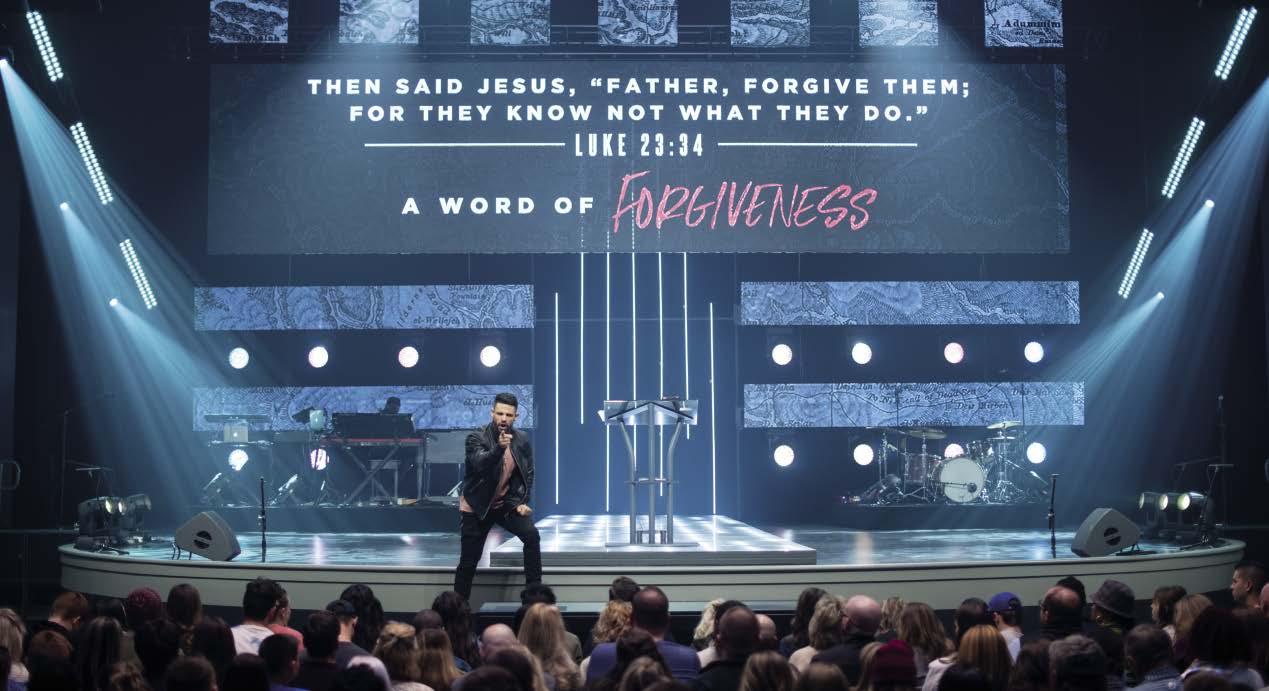
CONGREGATIONAL LIGHTING
Singapore: MICA (P) 100/07/2016 PPS 1644/05/2013(022954)
Creatively blending house and stage lighting
Elevation Church - Charlotte, NC, USA











































































































































 Pastors At and Nyretta Boshoff cutting the ribbon at the CRC’s Bloemfontein North Extension
Robe Robin moving lights were employed
The newly built CRC Bloemfontein North Extension
Pastors At and Nyretta Boshoff cutting the ribbon at the CRC’s Bloemfontein North Extension
Robe Robin moving lights were employed
The newly built CRC Bloemfontein North Extension


















































































































































































































































































































































































 ©2016 Renkus-Heinz
©2016 Renkus-Heinz
©2016 Renkus-Heinz
©2016 Renkus-Heinz






























































































